

Travel Essentials: Complete Guide to Traveling With Luggage in Japan
When traveling with luggage in Japan, keep in mind that the country is perfect for shopping, but not for large suitcases. Packing lightly is recommended, as your suitcase may become heavier throughout your trip. To avoid difficulty, check out our tips on what to do with luggage in Japan before your visit. This way, you can enjoy a successful trip and heavy-duty shopping.
Traveling with luggage on public transport in Japan
Storing luggage in japan, tip on temporary luggage storage storage, sending your bags using takuhaibin delivery services.
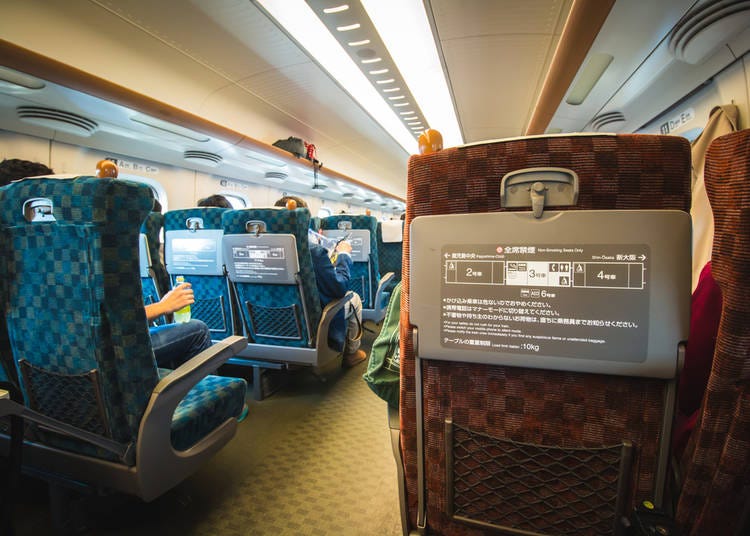
Subways and Trains When traveling on subways and trains in Japan, there is usually no designated space for luggage. It is best to avoid seating near the carriage doors and instead store your bags in the small space between the doors and the seating. For small suitcases and bags, there is overhead storage. Additionally, the first and last carriages often have large standing areas, and the last carriage typically has a buggy space that can also be used for suitcases. However, be sure to move your luggage if a parent with a buggy appears. Shinkansen If you are traveling on the Shinkansen train in Japan with a large suitcase, keep in mind that there is often no dedicated luggage area. Only small suitcases and bags can be stored overhead. The very front and back seats in each carriage have a bit of extra space, which can be used to store larger suitcases. However, it can only be used by those who have booked the reserved seats immediately in front of the space or paid the 1,000 yen non-reserved service charge upon boarding. For details, check this article . If you are staying in one of the major hotels , it is recommended to request that they deliver your luggage to your next hotel for a fee instead of carrying it on the Shinkansen. Advice for during rush hour During rush hour in Japan, it is best to avoid traveling with a large suitcase if possible. However, if you must travel with a big suitcase, aim for the very front or back carriages, where there may be more space. Be sure to give yourself plenty of time ahead of any deadlines to avoid stress, and consider using other forms of transportation when possible.

Highway buses When traveling on highway buses in Japan, you'll find that they are designed with travelers in mind. There is typically plenty of space in the luggage compartment below deck for suitcases, as most Japanese travelers only carry small suitcases. Additionally, there is usually room above your seat for a small bag. Buses traveling to and from the airport also have ample space for suitcases. City buses If you have large or a lot of luggage, city buses in Japan may not be the best option. These buses can be quite compact, and there is usually very limited space for baggage. Since buses are frequently used by local residents, it may be seen as an annoyance to try and use them for luggage storage. Instead, consider using a taxi, which can be inexpensive for short distances, or other forms of transportation. It's also worth checking if your hotel provides a free bus service with dedicated luggage space.
When traveling with luggage in Japan, taxis can be a convenient and reliable option. They are typically clean, with friendly and helpful drivers, and offer fixed prices, so you can be assured you won't be overcharged. Taxis are also reasonably priced for short distances, and are often more convenient than local buses, with the added benefit of being able to accommodate your luggage easily. Taxis in Japan usually have large trunks, and in some cases, a suitcase can even fit in the front passenger seat if needed. They can typically hold a couple of large suitcases, or a combination of a large suitcase, a medium suitcase, and small bags. Additionally, there are minivans and larger cabs available that can accommodate even more luggage, making them a great option for families traveling together.
Rental cars
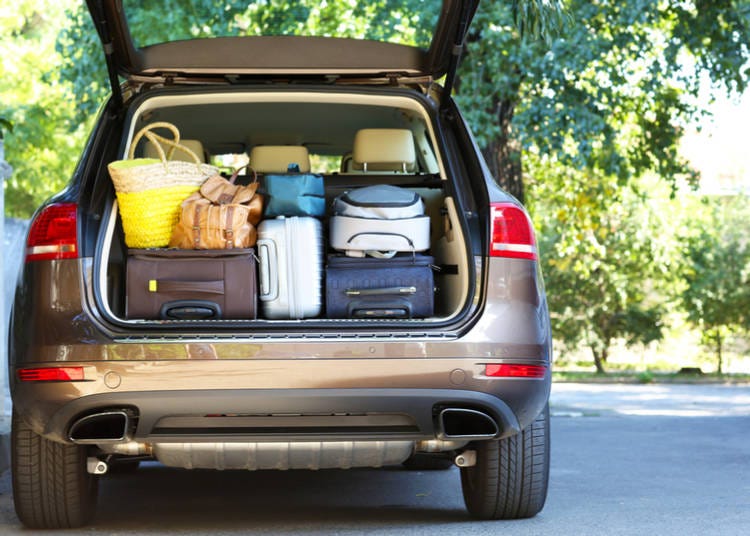
The size of the car you rent will determine the amount of space you have for luggage. Smaller sub-compact cars offer limited space, while larger cars can accommodate more luggage depending on the number of passengers. A small car can fit one large suitcase or a few small ones, whereas larger cars with three passengers can hold a couple of large suitcases or three smaller bags. Sedans can fit four passengers and two large suitcases, while station wagons, SUVs, and minivans can easily hold three large suitcases with four passengers. Choose a car that is suitable for the number of passengers and amount of luggage you plan to bring.

Coin lockers
How big are coin lockers in Japan? Coin lockers in Japan typically come in a few different sizes. ・Small: Approx. 35cm x 34cm x 57cm (13in x 13in x 22in). Available at most stations. ・Medium: Approx. 57cm x 34cm x 57cm (22in x 13in x 22in). Fewer available in stations. ・Large: Approx. 117cm x 34cm x 57cm (44in x 13in x 22in). Very few are available in stations. Where to find coin lockers in Japan Coin lockers can be found in many stations, and the larger the station, the more lockers you can usually find. For example, Shinjuku Station has over 3,500 lockers, but most of them are small. There are only 266 large or bigger lockers in the same station. Generally, lockers are well signposted in every station, and in some stations like Shinjuku , there is a Suica Coin Locker Search terminal that can help you find the nearest available locker. How to use a coin locker in Japan There are different types of lockers available, such as key-type lockers and touchscreen-type lockers. The key-type lockers require a payment of 100 yen, and the key has a number and location written on it. You just need to turn the key to lock and unlock the locker. The touchscreen-type lockers work with a touchscreen, and you can pay by cash and get a PIN code with your receipt or access the locker by card if you make payment by Suica or PASMO. How to pay Coin lockers can be paid for with coins or by using Suica or PASMO, which are more advanced payment options. Approximate prices and how long bags can be stored The fees for coin lockers can vary depending on the place, but generally, for one day, a small locker costs 300-400 yen, a medium locker costs 400-500 yen, and a large locker costs 600-800 yen. You can keep the locker for a maximum of three days in most places, so keep that in mind if you want to leave your luggage for a while. If you can't find a locker or need somewhere to store your bags for a few days, you can try third-party luggage services such as ecbo cloak . This website connects people who want to drop off their luggage with shops, cafes , etc., that are willing to keep luggage for a fee.
Most hotels and hostels are willing to store luggage for travelers, but the availability of this service may vary depending on the location and the amount of available storage space. However, many hotels should be able to accommodate guests by allowing them to store their luggage before check-in or after check-out. In some cases, hotels may even be willing to hold onto luggage for several days after the guest has checked out, but this will vary depending on the specific hotel 's policies.
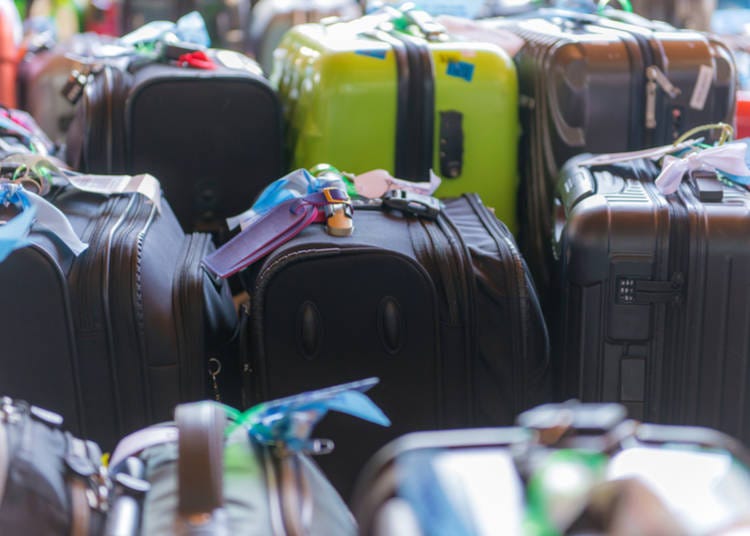
Takkyubin is a popular Japanese courier service known for its reliable door-to-door delivery of packages and luggage within Japan. It's convenient, fast, and offers a comprehensive tracking system. When it comes to drop-off and pick-up locations, you have various options. You can ask your hotel reception for assistance or drop off items at convenience stores , airport and train station luggage counters, stores with a takkyubin sign, and even souvenir shops . The best part? Takkyubin delivers to any address in Japan, be it a private home, office, hotel , airport , or service center. For travelers with bulky luggage, takkyubin is a smart solution. Instead of struggling with heavy bags on crowded trains and stairs, send your luggage from the airport to your hotel or between hotels for a stress-free journey. Just remember to check with your destination hotel beforehand to ensure they can accept deliveries, as some restrictions may apply due to staff or storage space.
To/From the airport
When you arrive at an airport in Japan, you can find a delivery counter for luggage where you can arrange for your luggage to be taken to your hotel for a fee. This is available at all major airports and some minor ones as well. The fee typically ranges from 1,000 to 4,000 yen. Narita Airport (NRT) At Narita Airport (NRT), you can collect your luggage from the GPA delivery service counter on the international arrival floor (1st Floor) in Terminal 2 or the ABC delivery service counter on the international departure floor (3rd Floor) in Terminal 2. To send your luggage to your hotel , you can use various delivery service companies scattered around the terminals such as KTC, Yamato, and JAL. Haneda Airport (HND) Similarly, at Haneda Airport (HND), you can collect your luggage from one of two service desks on the 3rd floor. To arrange for your luggage to be delivered to your hotel , you can use a service desk on the 2nd floor. Kansai International Airport (KIX) When traveling through Kansai International Airport , you can send your luggage from the counters located at the southern and northern ends of Terminal 1's International Arrivals. JAL ABC, Kansai Airport Baggage Service, and LAWSON offer these services.
Between hotels
Major hotels and business hotels usually offer suitcase delivery service to your next hotel . To arrange this service, you can inquire at the reception or with the concierge. It's advisable to inform your next hotel in advance about the luggage delivery. Prices will vary based on luggage size, destination, and delivery speed (regular or express).
Between cities - Using takuhaibin
There are several options available for arranging luggage transportation outside of hotels . Hands-free travel service counters can be found in tourist information centers , department stores , and stations. Additionally, Yamato Transport offers a service called Takuhaibin which can transport anything, including furniture. You can arrange this service at convenience stores or other shops with a Takuhaibin sign. The cost for delivering a large suitcase weighing less than 25 kg from Tokyo to Kyoto is only 1900 yen and just 3900 yen to deliver from Tokyo to Okinawa . This service is affordable and can help alleviate the stress of carrying heavy luggage while traveling.

- Area Tokyo's Surrounding Areas Tokyo Station
- Category Other Sightseeing
- How To: Sightseeing
Share this article.
Limited time offer: 10% discount coupons available now!
Recommended places for you.
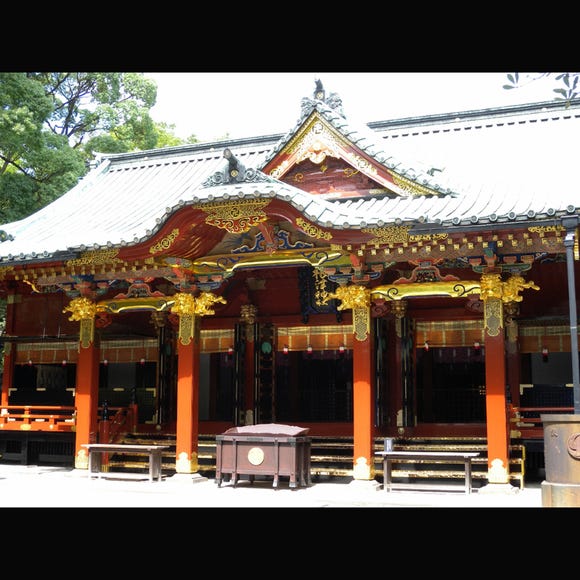
Nezu Shrine

Shinjuku Gyoen National Garden
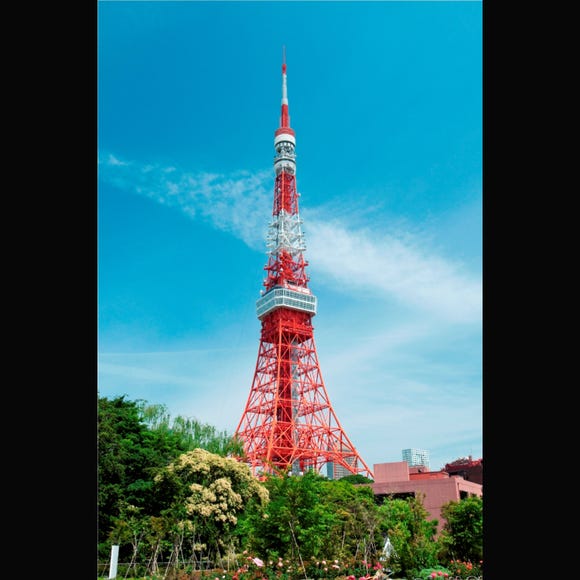
Tokyo Tower
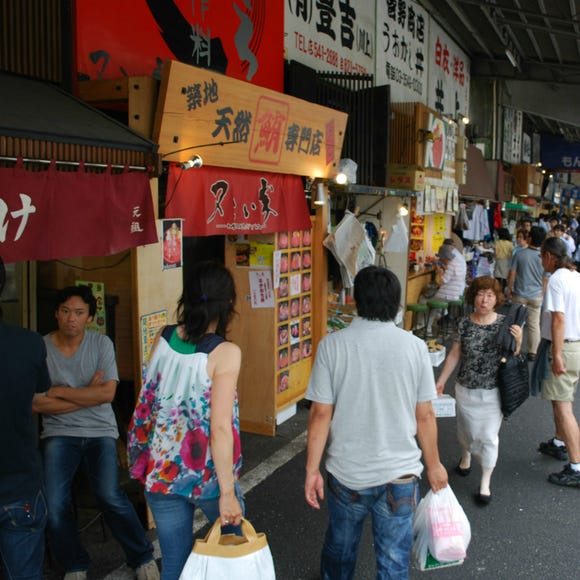
Tsukiji Outer Market
Old Towns (Shitamachi)
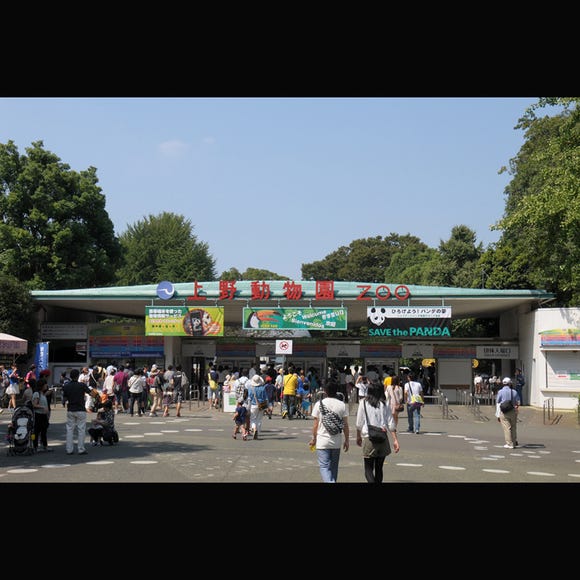
Ueno Zoo (Ueno Zoological Gardens)
Zoos, Aquariums & Botanical Gardens

The Tokyo Station Marunouchi Building
Tokyo Station

Best Things to Do in Tokyo in April 2024: Events, Festivals & More

Opened in Spring 2024! What to do at Tokyu Plaza Harajuku Harakado

15 Must-Try Sushi Restaurants in Tokyo (+5 Trending Areas to Explore for Foodies)

12 Unique & Fun Tokyo Food Tours to Enjoy in 2024

Everything You Need To Know About the Kyoto-Osaka Sightseeing Pass

Step Into the Story: Inside Immersive Fort Tokyo

Shopping at Omotesando Harajuku: Crossroads between Culture and Fashion!

Asakusa Ojima: Experiencing Edo Kiriko Glass Cutting at a Traditional Family Workshop in Asakusa
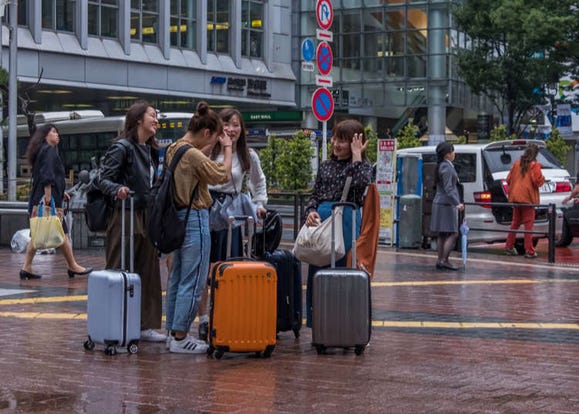
Tokyo’s Secret Coin Locker Spots: Big Enough for Suitcases!
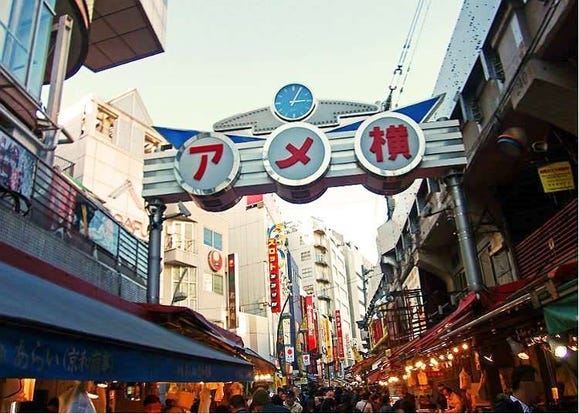
Ueno Station Area Guide: Fun Ways to Explore Tokyo's Popular Destination (Area Map & Sightseeing Tips)
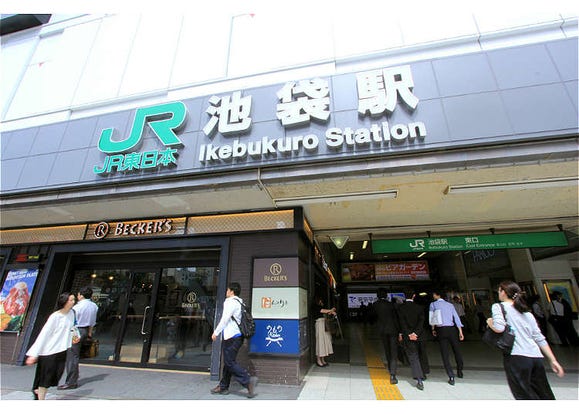
Essential Tokyo: The Complete Guide to Ikebukuro Station
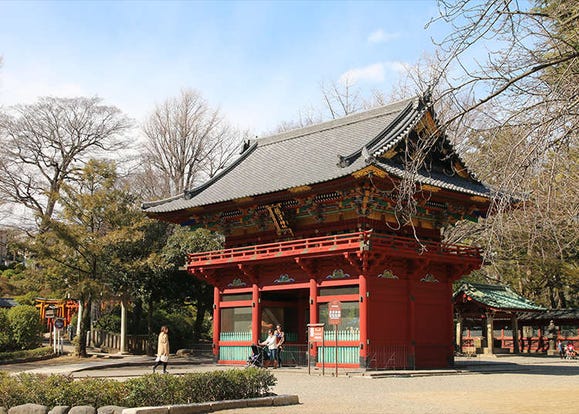
Guide to Tokyo's Old Quarter: 7 Quaint Spots in Yanesen!
- #best ramen tokyo
- #what to buy in ameyoko
- #what to bring to japan
- #new years in tokyo
- #best izakaya shinjuku
- #things to do tokyo
- #japanese nail trends
- #what to do in odaiba
- #onsen tattoo friendly tokyo
- #best sushi ginza
- #japanese convenience store snacks
- #best yakiniku shibuya
- #japanese fashion culture
- #best japanese soft drinks
- Skip to main content
- Skip to primary sidebar

Destinations
- Plan Your Trip

The Secret to Traveling With Luggage in Japan
October 31, 2022 by Robert Schrader Leave a Comment
The question of how to travel with luggage in Japan really stresses people out. In fact, I’d say it’s one of the most common queries I receive, right after where to stay in Tokyo and how many days to spend in Japan .
There are really two ways to approach this. For some travelers, Japan’s Takkyubin luggage forwarding service is the right answer, as the convenience of having your bags “shipped” from hotel to hotel trumps any of the little adjustments you have to make to your schedule in order to do so.
If Japan luggage forwarding is not your jam, not to worry. After nearly a decade of traveling (and, at times, living) in Japan, I’ve amassed a long list of strategies that make exploring Japan with bags as easy as stuffing your face at a ¥100-per-plate kaitenzushi place.
Why Luggage Causes Travelers to Japan Stress
Before I dig into the details of Japan luggage shipping services, I wanted to discuss the broader issue of why people feel intimidated at the thought of traveling through Japan with their bags. Part of this is not particular to Japan. No one wants to be moving on and off of trains, and walking long distances to and from hotels hoisting a giant suitcase around.
Then again, there are plenty of Japan-specific reasons this is unappealing as well. For one, Japan is a more crowded place than most, with less room for people, let alone for their belongings. Moreover, there’s the politeness of Japanese society and all the unwritten rules of etiquette there. And the written ones, like the strict check-in times of most hotels in Japan.
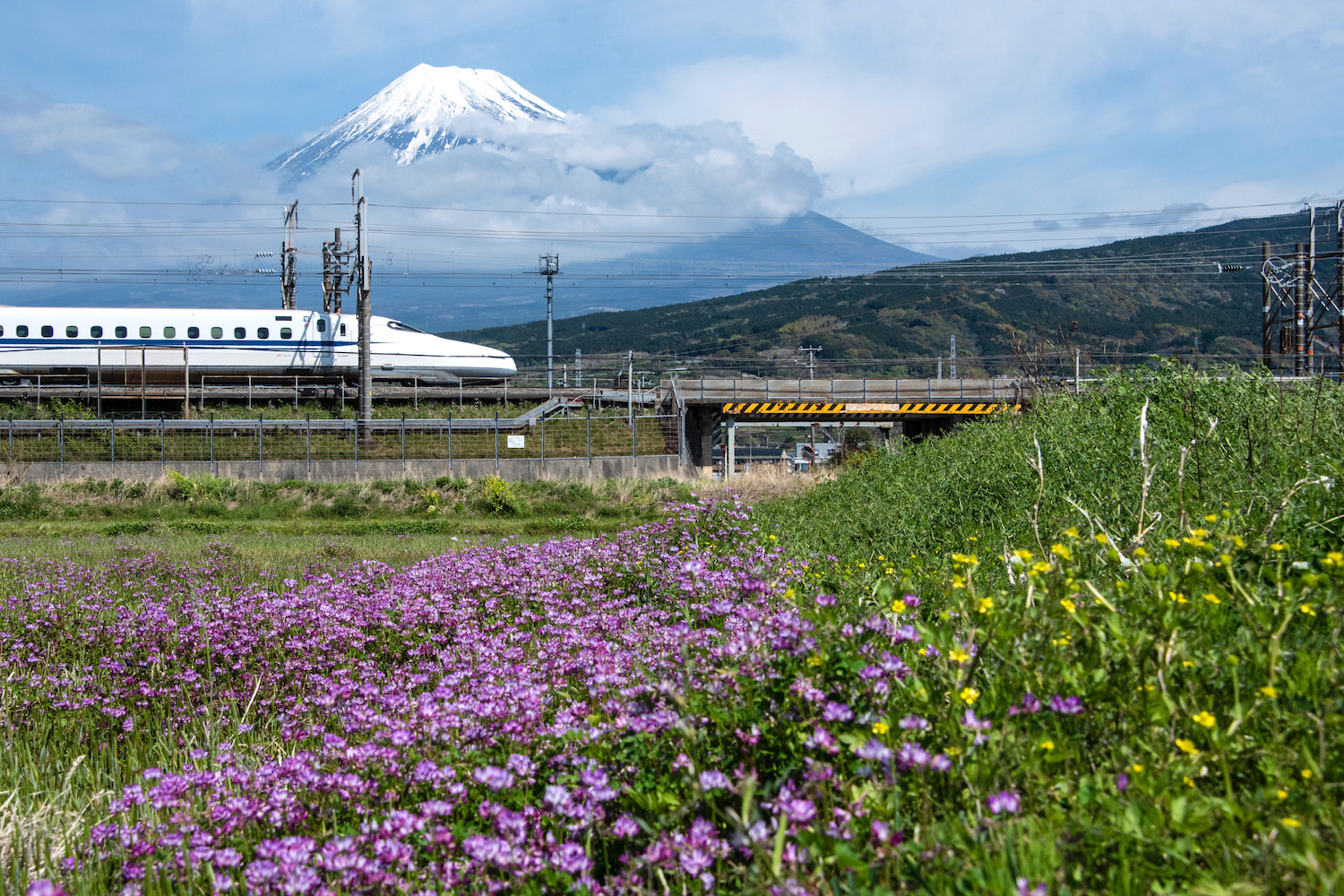
How to Travel With Luggage in Japan, Stress-Free
Use takkyubin luggage forwarding.
The most hands-off (literally) way to managing luggage in Japan is to avail Takkyubin , a luggage forwarding service provided by Japanese courier Yamato (the ones with the cat logo). If you want to use this service, make sure and mention it when you check in at each hotel, so the front desk can tell you when you’ll need to drop yoru bags off for forwarding to the next hotel, and also confirm rates for you.
Pre-book Shinkansen luggage storage
If you ride the subway in Tokyo or Osaka or take most local trains, you need to keep your luggage on or at close to your person as possible. On Shinkansen bullet trains, on the other hand, the conversation about luggage on Japanese trains is different. Since 2020, travelers are technically required to book storage slots at the end of their carriage in advance, although this doesn’t often happen in practice. Learn more here.
Avail coin lockers
It might sound strange to use lockers for anything if you’re not still a student, but they’re actually a common solution for travelers in Japan. To take advantage of them, follow the signs (it’s an icon showing a suitcase in a box and a key above) inside the railway station. Conveniently, you often don’t need coins to use coin lockers anymore, and can often use your PASMO card or mobile app .
Keep bags at hotel front desks
The best Japan luggage storage is free! Whether you check out early before flying out, or arrive before check-in in a certain city, the front desks of hotels where you have a current or just-completed reservation will almost always hold your bags for free. Simply explain your situation to the front desk person and they will take care of you quickly and without many further questions.
Pack light to begin with
Of course, the easiest way to avoid drama with baggage in Japan is simply not to bring much baggage at all. When I travel, regardless of for how long, I only ever bring a medium-sized backpack and a full-sized duffle bag, packed with about 7-10 days worth of clothing and shoes, and however many toiletries I ever need. If I’m traveling longer than that, I simply wash my clothes every week or so, either in my hotel or at a nearby coin laundry place.
Is Takkyubin Worth It?
Takkyubin isn’t expensive or particularly complicated, once you know the rules. On the other hand, these rules—namely, knowing when to drop your luggage off in order to have it shipped onward—are sometimes difficult to adhere to. Which is a problem: Failing to do so many inhibit you from being able to avail the service at all. Using Takkyubin throughout your trip to Japan isn’t practical for most travelers.
In my opinion, it’s better to aim to use luggage forwarding in Japan more strategically. For example, sending your “big” bags to Narita or Haneda airports from your last stop before coming back to Tokyo, in order to smooth your all-important journey to the airport. Then, strategically using coin lockers and luggage reservations in the interstitial periods so that your luggage isn’t with your 24/7, even if it isn’t being shipped on your behalf.

Other FAQ About Traveling With Luggage in Japan
What do you do with luggage when traveling to japan.
Managing luggage when you travel to Japan requires multiple strategies. Sometimes, you’ll use the Takkyubin service to “forward” your luggage between hotels; otherwise, you’ll put your bags in a coin locker or a hotel front desk so you don’t have to worry about them when you sightseeing. Having many strategies at your disposal will ensure your trip to Japan is a smooth one.
Can you take luggage on a train in Japan?
You can take luggage on a train in Japan, although you may need to make reservations in advance, depending upon what type of train it is. The best way to avoid complications in this regard is to bring smaller bags that can be easily stowed under or above your seat.
Can you store luggage at Japanese train stations?
Although only a few major train stations in Japan have left luggage areas, almost all have coin lockers where you can cheaply and easily store your luggage. Another option, if you aren’t simply in transit, is to visit your hotel before check-in (or before check-out, if you’re leaving), and leave your bags with the front desk.
The Bottom Line
Whether you avail Japan luggage forwarding or employ one of my other strategies, traveling with luggage in Japan is easier than you might imagine. At the end of the day, the more mindful you are before you travel, the less stressed you’ll have to be in the midst of it. Some travelers get good at availing luggage storage options, while others go the extra mile and simply pack less to begin with. Want to make sure every aspect of your next trip to Japan is smooth and easy? Commission a custom Japan itinerary , and let me take care of all the ins and outs of your journey.
Plan Your Japan Trip

Subscribe to email updates!
Words, images and design ©2018-2024 Robert Schrader, All rights reserved. Read Privacy Policy or view sitemap .
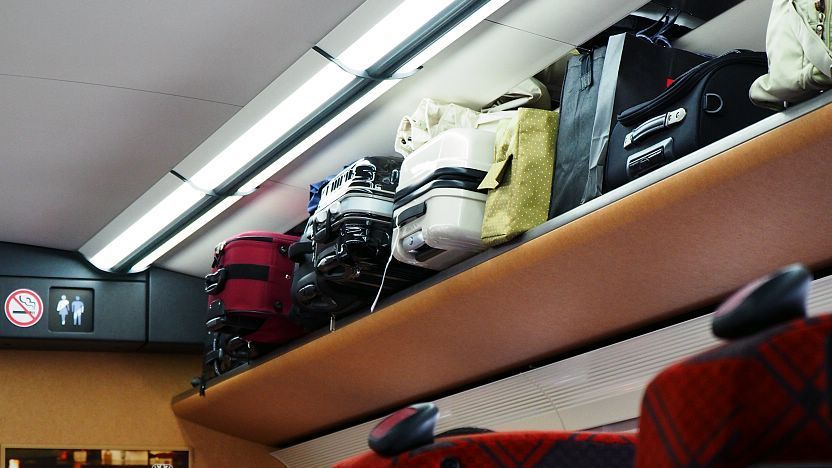
It is strongly recommended to pack light when traveling around Japan. Most trains do not provide space for bulky luggage, and even though the accessibility situation at stations has improved considerably over recent years, some platforms are not equipped with escalators or elevators or you might have to make a detour to get to one. Traveling light also avoids reliance on large sized coin lockers, which are less readily available than smaller sized coin lockers at many stations.
Luggage on transportation
There is not much room for large suitcases on urban and long-distance trains especially during rush hours . Some exceptions are airport trains such as the Narita Express and Haruka , and an increasing number of shinkansen in eastern Japan, which have designated storage space for large luggage. Therefore it is recommended not to bring large suitcases, strollers , music instruments and sport equipment onto trains.
According to JR regulations, each passenger may bring up to two pieces of luggage onto trains, not including smaller bags. Each piece of luggage may not weigh more than 30kg, and its three dimensions (length, width and depth) may not add up to more than 250cm, while its length may not exceed 200cm.
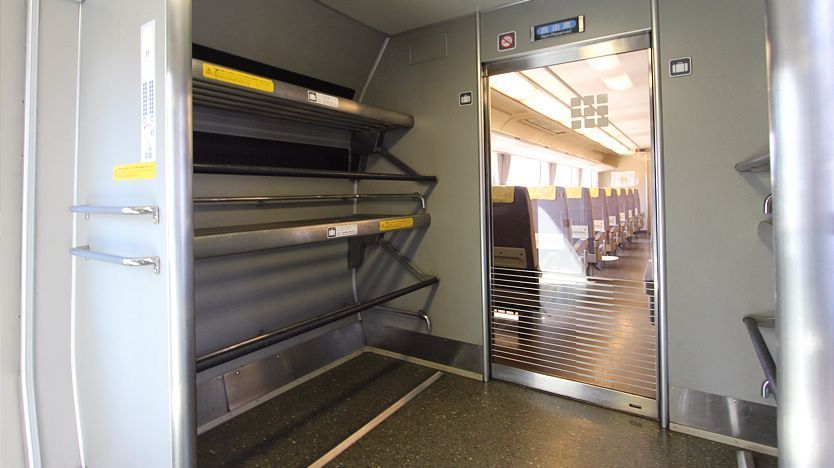
Most trains have overhead shelves for luggage to be placed on. On shinkansen trains, the shelves are typically about 40cm high and 60cm deep and able to accommodate relatively large items, but on other trains they are often smaller. Furthermore, on many shinkansen trains the leg room is surprisingly spacious and may be large enough for your legs and a mid-sized suitcase, although this may not be the most comfortable solution.
Last but not least, there is usually space for two or three large suitcases behind the last row of seats in each car on most long distance trains. For security and convenience reasons, however, only passengers sitting in the last row of seats are supposed to place their luggage into the space behind their seats.
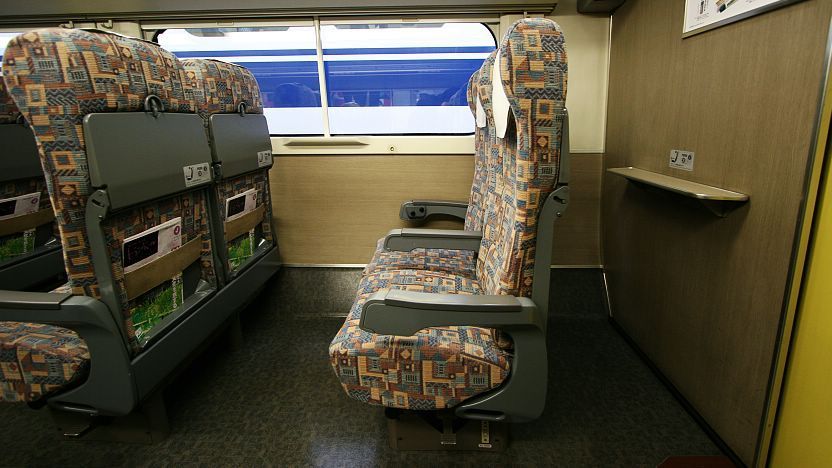
A special rule for oversized luggage applies along the Tokaido / Sanyo / Kyushu Shinkansen and the Nishikyushu Shinkansen , which connect Tokyo with Kyoto , Osaka and Kyushu (see map below). Passengers with oversized luggage, i.e. luggage pieces whose height, width and depth add up to more than 160cm (63 inches), are required to make a seat reservation for specific seats with nearby storage space. Oversized luggage is not allowed in non-reserved cars.
Passengers without a reservation for their oversized luggage will be asked to move their luggage to a space specified by the train conductor and pay a 1000 yen surcharge which is not covered by the Japan Rail Pass . It is possible to make reservations in advance at ticket offices, ticket machines or online . This oversized luggage rule is not in place on other train lines.
Most airport and highway buses have separate compartments for large pieces of luggage, but may enforce a maximum of one or two pieces per person. In addition, smaller bags can be carried onto the bus. On city buses , there is no designated space for luggage, and it would be cumbersome to board them with large items, especially during the busy times of the day.
On airplanes
The luggage policy on domestic flights differs by the airlines. Conventional airlines allow their passengers to bring a reasonable amount of check-in and carry-on luggage for free, but low-cost carriers tend to have very strict luggage rules and charge fees for check-in luggage.
Most taxis are able to carry multiple, large suitcases in their trunks and can be a convenient way to avoid uncomfortable walks, train or bus rides to one's hotel.
Rental cars
Outside of the large cities, rental cars are a convenient way to free oneself from the hassle of carrying around bags and searching for storage options.
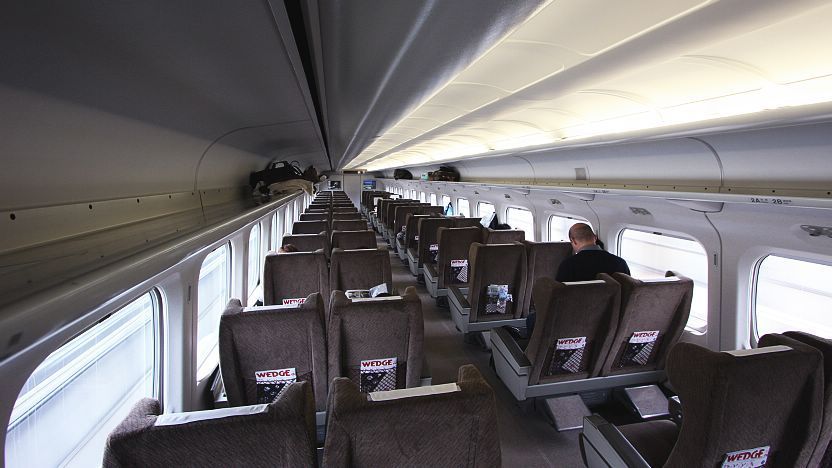
Luggage storage
Luggage storage counters can be found at airports and usually charge between 500 and 1000 yen per piece and day, depending on the size of the item. Some larger train stations have manned storage counters too and typically charge about the same for luggage handling. Unlike at airports where luggage can be stored over multiple days, the storage counters at stations often require same-day pick-up.
Coin lockers come in various sizes and can be found at virtually every train station and at the entrances to some tourist attractions , but are not always available in large formats. Below are the three most common coin locker types (typical sizes are given as height x width x depth):

- Small approx. 35cm x 34cm x 57cm (13in x 13in x 22in) by far the most common size, found in large numbers at virtually all stations
- Medium approx. 57cm x 34cm x 57cm (22in x 13in x 22in) available in moderate numbers at major stations
- Large approx. 117cm x 34cm x 57cm (44in x 13in x 22in) available in small numbers at major stations
The cost of coin lockers is based on calendar days (midnight to midnight) and is typically 300-400 yen for small lockers, 400-500 yen for medium lockers and 500-800 yen for large lockers per calendar day. In other words, if you use a small locker overnight, you will have to pay an additional 300-400 yen when picking up your luggage the following day. Lockers are emptied by station staff after three days.
To use a coin locker, 1) find an empty one, 2) put in your luggage, 3) insert the coins (100 yen coins only), 4) close the door and turn the key and 5) take the key with you. Keep some 100 yen coins with you if you are a frequent user of coin lockers, although in recent years, the number of lockers that can be paid with IC cards , such as Suica, has increased gradually.
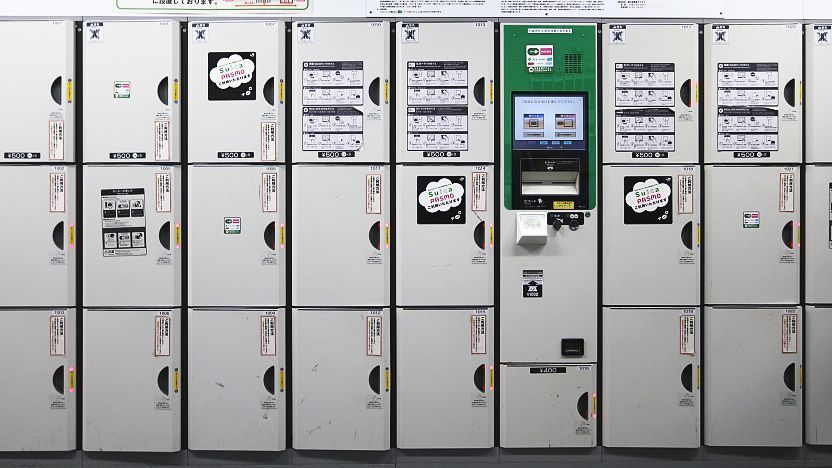
Luggage delivery
Door-to-door delivery services (takuhaibin) can be a comfortable alternative to carrying around luggage. They can be used nationwide to/from airports , convenience stores , hotels , service centers and private homes. Delivery is usually on the next day, except over large distances and in remote areas where it can take up to three days. It is possible to specify the date and time frame for deliveries. Read more about takuhaibin services .
Baggage delivery services are also offered at some popular tourist spots, such as:
- Kyoto For around 1000 yen per piece, same-day delivery of luggage is possible between the luggage counter of Kyoto Station and hotels across Kyoto , as well as between hotels.
- Hakone For between 900 and 1600 yen per piece, same-day delivery of luggage is possible between Hakone-Yumoto Station and hotels around Hakone .
- Tateyama Kurobe Alpine Route For between 2500 yen per piece, same-day delivery of luggage is possible along the Tateyama Kurobe Alpine Route between Toyama Station and Shinano-Omachi Station.
- Kiso Valley For 1000 yen per piece, same-day delivery of luggage is possible between Tsumago and Magome for those who intend to walk along the Old Nakasendo between the two towns. The service is not available during winter.
- Sagawa Service Centers Luggage delivery is possible between Sagawa luggage counters, hotels and selected airports, often same-day. Most of them are currently found in Tokyo ( Tokyo Station and Busta Shinjuku among others), but there is also one at Kyoto Station . The cost depends on the size and weight and is around 2000 yen for a suitcase (2600 yen for airport deliveries).
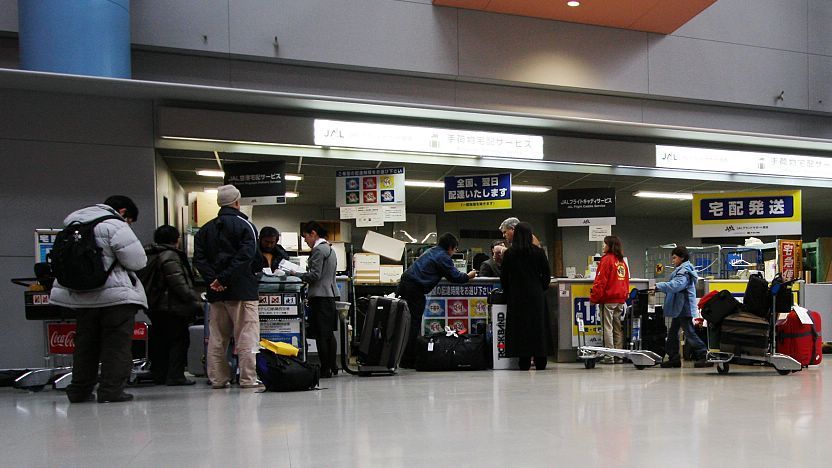
Questions? Ask in our forum .
Links and Resources
Narita airport - baggage delivery, haneda airport - list of services, kansai airport - luggage, carriers, postal service, sagawa - sightseeing without baggage.


Best Luggage To Bring On Your Trip To Japan (How To Avoid Rookie Mistakes)
Packing for a trip can be a stressful and often exhausting endeavor, but it’s one we must all undertake when we’re traveling. It’s good to know about where you’re traveling, and what modes of transportation you’ll be using.
One thing to keep in mind when determining how to pack for your trip to Japan is what methods you’ll be using to travel throughout the country.
Furthermore, you want to take it into consideration whether or not you’re visiting one spot in Japan, or if you’re wanting to take a longer trip throughout different regions of the country .
If you want to avoid your luggage getting in the way of enjoying your exploration of Japan, keep these tips in mind to avoid some rookie mistakes.
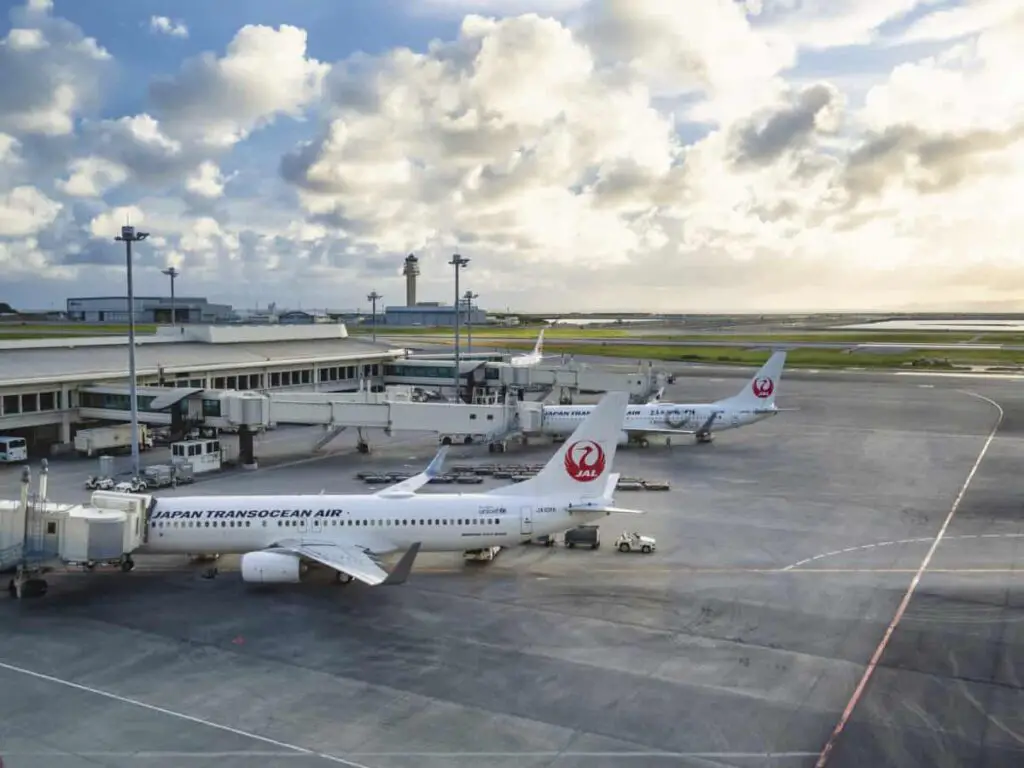
Condense What You Bring
One benefit of traveling to Japan is, based on the season, the weather can be pretty moderate. Thus, you can easily check the forecast before packing, and there’s less of a chance you’ll need multiple seasonal items.
You’ll want comfortable clothing and comfortable walking shoes. Try packing items that you can wear in multiple ways for multiple occasions.
If you’re going to be in Japan for an extended period, consider finding a laundromat near where you’re staying so you can wash your clothes instead of packing more.
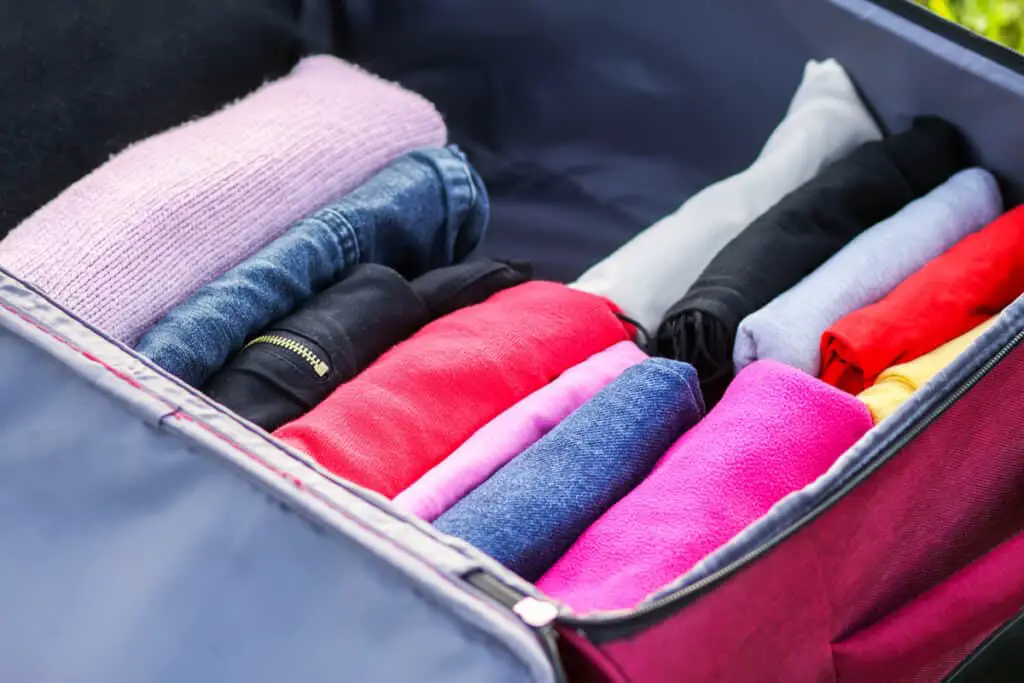
Consider Your Itinerary When Packing
If you plan to travel through forests and go on multiple hikes, you probably don’t need formal wear. If you are going to be walking throughout various Japanese cities , one or two pairs of walking shoes should be enough.
Pack for what you know you’re going to do, not what you think might happen. That way, you have enough room for souvenirs or anything you need to buy last minute while in Japan.
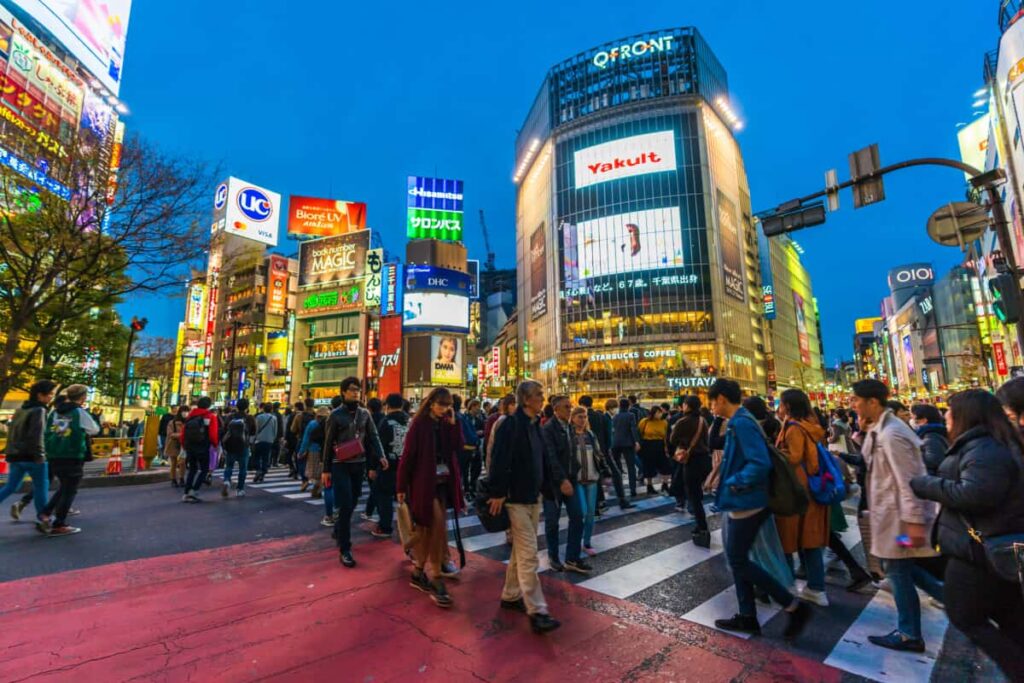
Make a list of what you need to bring in terms of clothes, shoes, and toiletries, and stick to your list when packing. Be sure to triple check your list while comparing it to what’s in your suitcase.
You can also consider an organizing system like packing cubes if you have trouble getting all of your necessary items into your luggage. These will help create more space by condensing your softer items, so you can get away with packing a little bit more than you need.
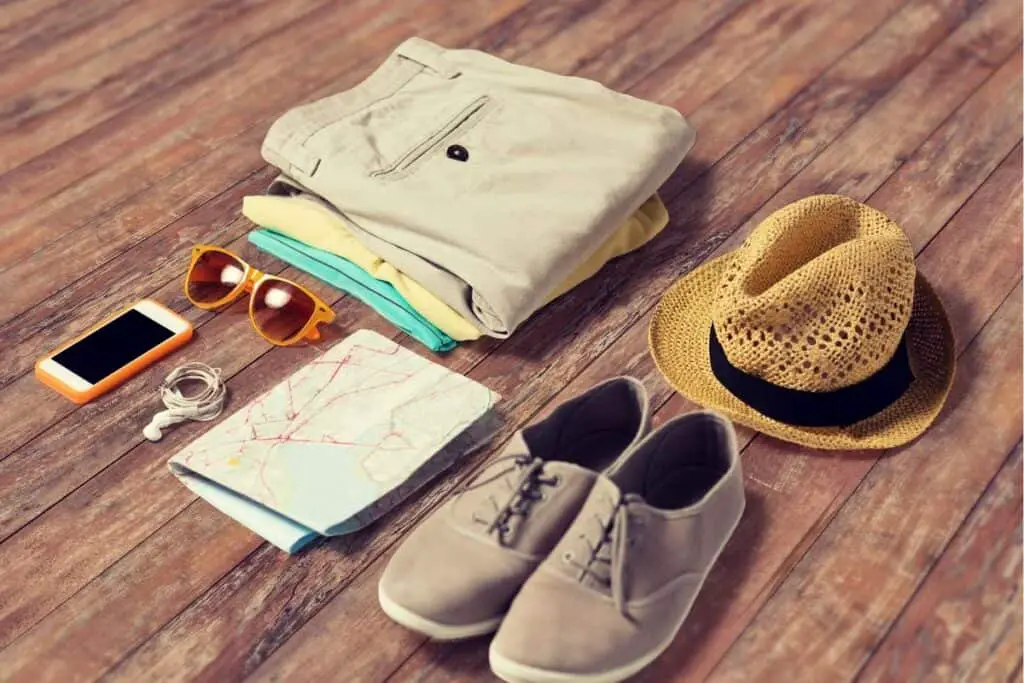
Keep Shopping In Mind
You’re going to want to buy a lot of things when you’re in Japan . Remember this when you’re packing what items you’re going to bring, as well as when picking your luggage.
Keep in mind that you’ll be able to find the same amenities in Japan that you can in other countries, and you will be able to easily find clothing stores or convenience stores for those things you forgot or didn’t have space for.
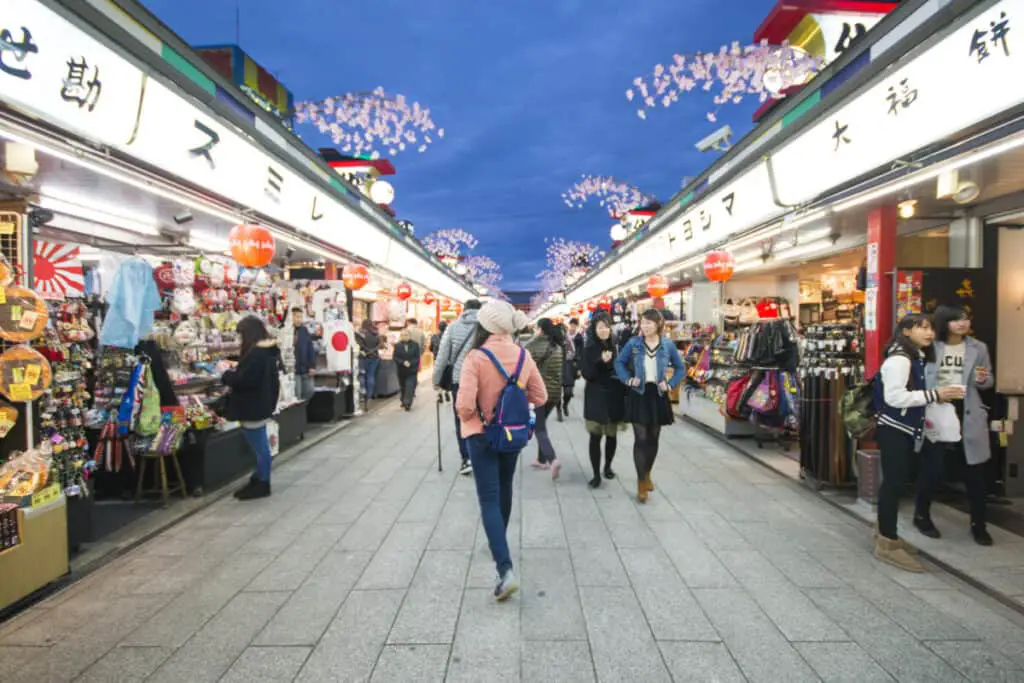
Don’t Use Large, Bulky Suitcases
If you’re going to be traveling throughout Japan on a bus or train and need to bring your luggage with you, you don’t want to bring a large bulky suitcase that is hard to move around.
These will get in the way of passengers on crowded public transportation.
Opt for softer duffel bags or a backpack that will still protect your belongings, but won’t easily break or get knocked around by other passengers.
They are also easier to carry when you’re using escalators and stairs, which you’ll use often if you’re using trains to get through Japan.
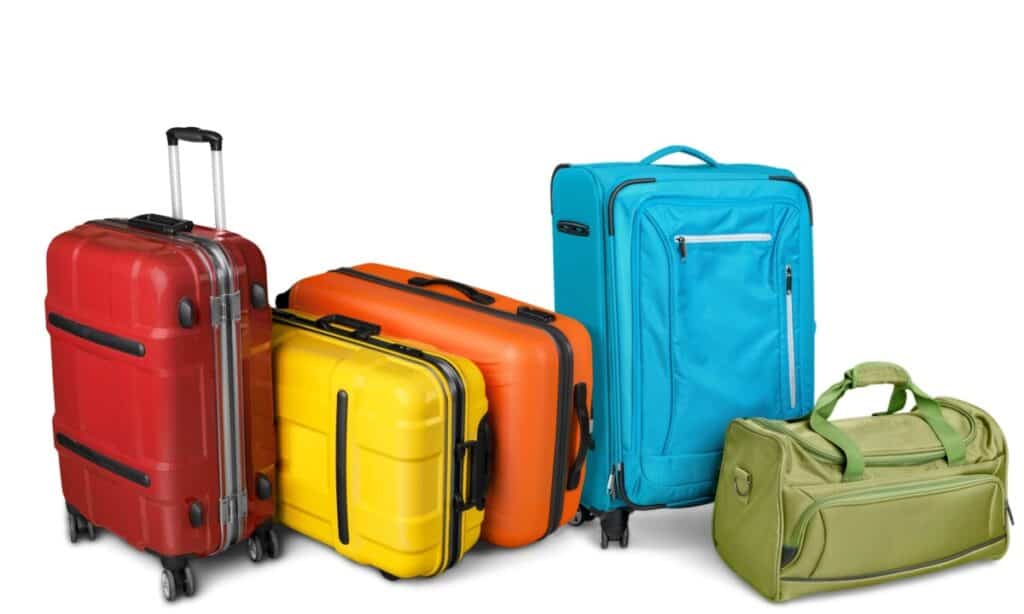
How Much Luggage Is Enough?
If you can condense your packing to one carry-on and one large duffel bag or soft suitcase that isn’t too wide or bulky, you should be fine.
If you know you’re going to want to bring a lot of souvenirs home, consider packing an extra bag within your bag. It’s much easier to only carry around extra luggage on your way home than it is throughout your journey across Japan.
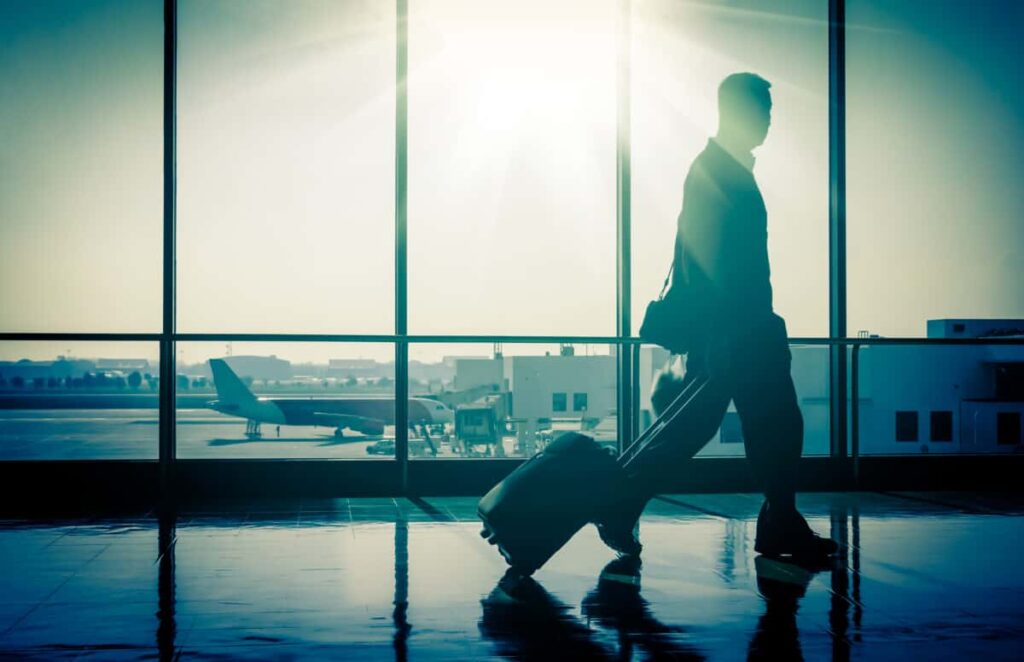
Look For A Wheeled Backpack
If carrying a duffel will be too much strain on your back, a wheeled backpack can be a nice alternative. They are spacious without the added bulk, and they can be worn on the back when needed or rolled around.
Look For A Wheeled Duffel Bag
If you need the extra space a duffel bag offers, there are wheeled options. They can be wheeled upright, making it easy to balance a duffel bag if it’s in the upright position to leave room for more passengers on a bus or train.
Much like the wheeled backpack, a wheeled duffel bag lets you wear it on your shoulder if you want to carry it, but it can also be rolled around when your back gets too tired.
Bringing Luggage On Trains
The train system in Japan is fantastic, and there’s a good chance you’ll be riding one if you don’t plan on staying in one city for the duration of your trip. If you plan to stay in multiple cities, you’ll be bringing your luggage on the train with you.
There are a few different options for storing your luggage on the train so you don’t have to hold it, but those options aren’t always available on every train.
Most trains will have a luggage rack, an overhead rack, and space behind select seats to put luggage. If all else fails, you’ll have to store it in front of you when you sit, so keep that in mind when deciding which luggage to carry to Japan.
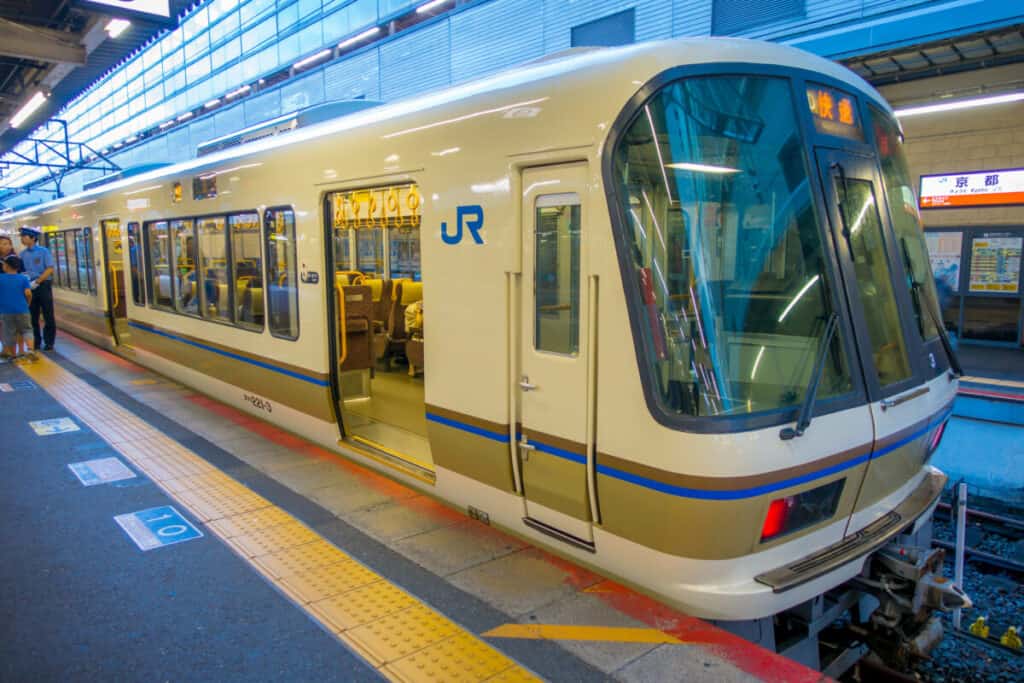
Additionally, trains have a limit for how much luggage you can bring on board. The limit is usually two pieces per person and the weight limit is 66 pounds. This doesn’t include your carry-on.
If your luggage is extra-large, you might have to call ahead and reserve the seats at the back of the train rows, as those have dedicated space for luggage. If you don’t follow the rules, you could end up having to pay extra fees.
Train Station Lockers
If you are planning on taking a day trip on a train and need to carry your luggage with you, there are lockers at many train stations where you can pay by coin to lock your belongings in a locker. Even if you like to travel with a backpack but keep your bigger luggage at a hotel, this could be a viable option to reduce what you have to carry.
Just keep in mind that lockers can fill up fast, so you don’t want to rely on them all the time.
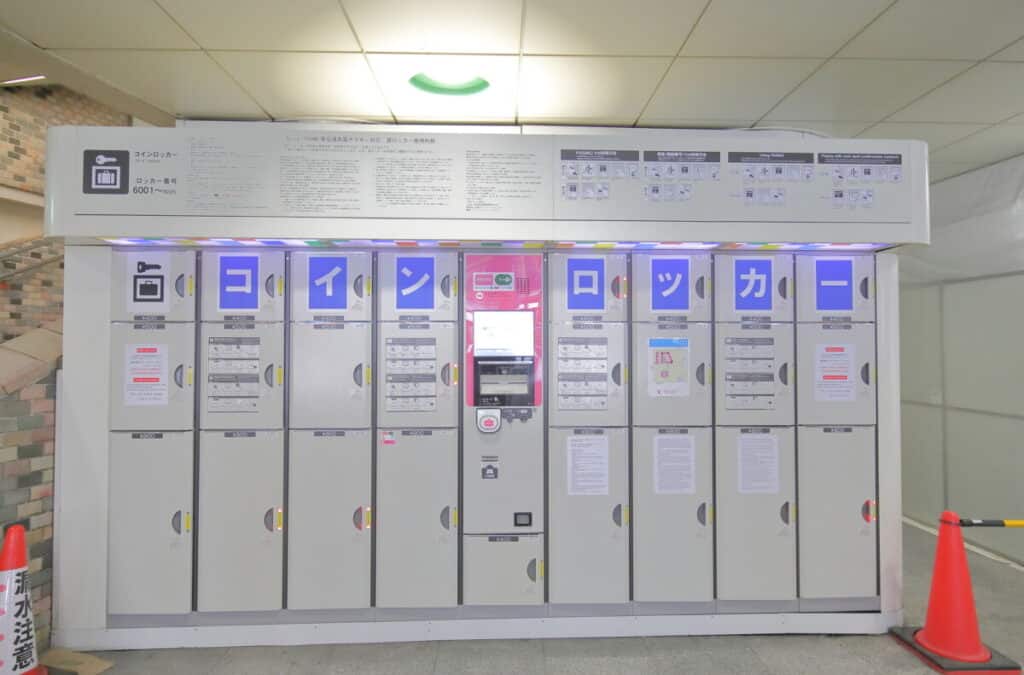
Bringing Luggage On Buses
If you’re taking a bus from the airport, there will most likely be some storage for you to pack your luggage into. If you’re taking a city bus, there might not be any room for your luggage.
There is no designated space on a city bus, so you’ll have to carry it no matter what.
That being said, you probably won’t be moving around on city buses when you’re going to and from different cities in Japan; rather, you’ll most likely be staying in the city so you can keep your luggage at your hotel.
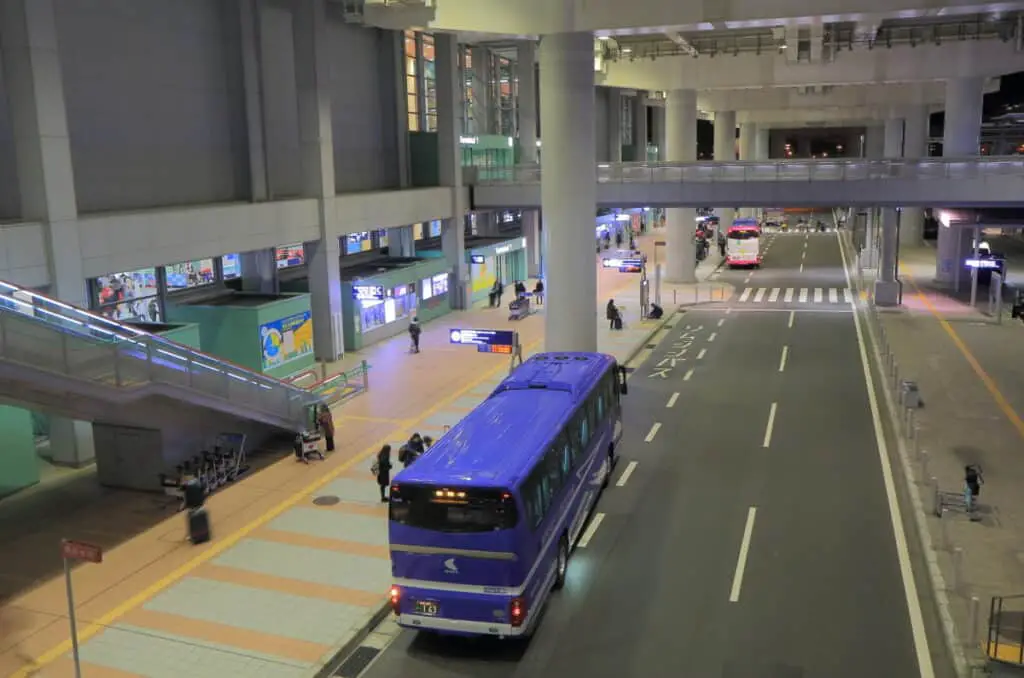
Baggage Delivery Services
If you are going to be in Japan for a long time moving from city to city , you might want to look into baggage delivery services, or takuhaibin. This service will take your luggage and deliver it to a designated spot in your next location of choice.
This service is available in select cities, such as Hakone, Kyoto, and Tokyo, and delivery typically ranges from between 1000 and 2000 yen depending on the service you want and the distance you need your luggage delivered to.
Narita Airport Luggage Delivery Service
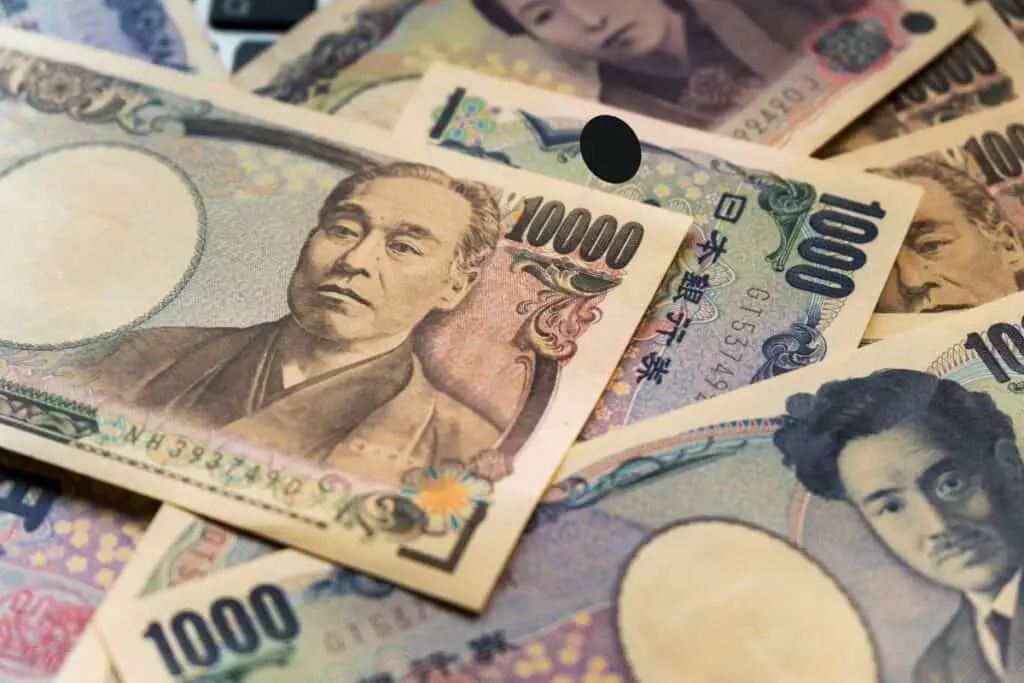
Some hotels might even offer a similar service. It’s always worth asking the concierge what your options are for having luggage delivered to your next destination before deciding to carry it on a train or bus.
There are options for taxis and rental cars that will easily be able to accommodate your luggage, but those costs can add up fast if you’re going to be traveling through Japan for a long time.
How To Rent A Car In Japan
Remember Transportation Etiquette
Transportation in Japan can get pretty crowded, and you want to be cognizant of other peoples’ comfort levels and right to space. Having bulky luggage that takes up seating space for other passengers is not polite in Japanese culture.
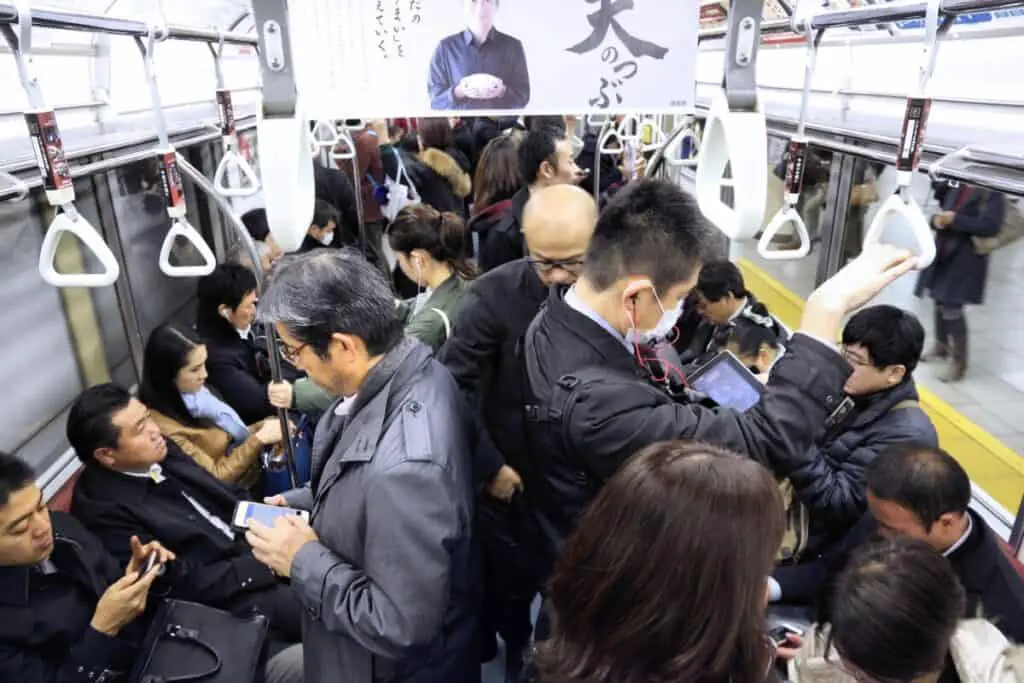
While Japan’s transportation system is very organized and is designed very well to accommodate traveling passengers, you don’t want to create a hassle by taking up too much space with your baggage.
Luggage Delivery In Japan
Latest Posts

Kyoto’s Autumnal Wonders: 25 Must-Visit Spots for Every Tourist

Tokyo on the Move: A Comprehensive Guide to the City’s Transport Tapestry

“Celebrating Sakura: Your Essential Guide to Japan in April – 25 Insider Tips for an Unforgettable Journey”

Tokyo Unveiled: The Ultimate Guide to the Top 100 Must-See Attractions and Optimal Timing for an Enriching Experience
- Cities & Regions 71
- Culture & History 64
- Events & Interest 41
- Learning The Language 5
- Pro Travel Tips 51
- Uncategorized 469
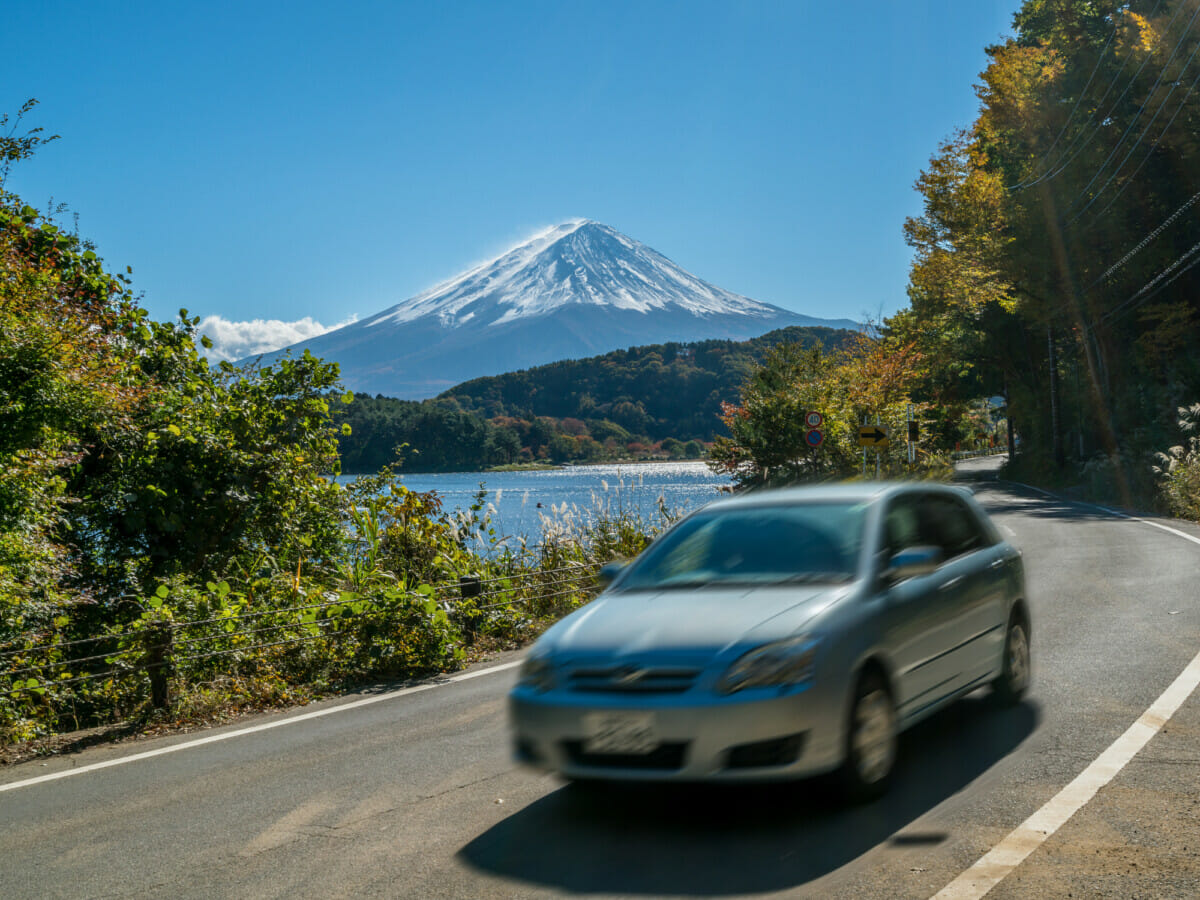
How to Get an International Driver’s License in Japan

Tokyo Unveiled: The 100 Most Asked Questions
Inside Kyoto
A Kyoto Travel Guide
The Best Luggage for Japan
The right kind of luggage allows you to take advantage of Japan’s unique travel system: ultra-fast shinkansen (bullet trains) that lack much luggage space, and incredibly efficient (and cheap) overnight luggage delivery services. Here are all the details.

The Takeaway
- There’s not much room for luggage on the shinkansen.
- Japan has excellent, cheap and reliable overnight luggage shipping services.
- You can ship your luggage from the airport to your hotel, or from hotel to hotel (city to city).
- You need a two-piece luggage system to take advantage of this.
- The system consists of a day bag and a wheelie suitcase or backpack.
Whatever You Do, Travel Light!

Unless you intend to do an activity that requires very specific gear, such as rock climbing, skiing or diving, you don’t need to bring much stuff to Japan. Three or four days of clothes is plenty, as long as you plan to stay in hotels with laundry facilities. Of course, you don’t want to dress like a slob, but smart casual wear is fine for even nicer restaurants. And outside of northern Honshu and Hokkaido, it doesn’t get that cold in winter (think of Washington DC or Paris in winter). And, of course, if you forget something, you can always buy it in Japan (Uniclo is a great source of cheap but nice clothing, including outerwear). So you don’t need a big suitcase!
Shinkansen Have Very Limited Luggage Space
You’ll probably do most of your long-distance travel in Japan on the shinkansen (bullet trains). They’re fast, comfortable and nearly always on time. However, they have very limited space for luggage. There’s a rack above the seats that can fit – at most – the kind of bag that would fit in an overhead compartment on a plane. Here’s a picture:

There’s a bit more space behind the last row of seats in every car, but you have to buy a special ticket to use this space in all the reserved cars. You don’t need such a ticket in the unreserved cars, but that space goes quickly in those cars. Here’s a picture:

Japan’s Awesome Overnight Luggage Delivery Services

Japan has a network of luggage delivery systems that is one of the wonders of the world. They’ll ship your luggage around the main islands of Japan, usually overnight, and for around US$20 for a standard suitcase. Many people use the system to ship their bags from their arrival airport to their first hotel in Japan. Then, they use the service to ship their bags from hotel to hotel. Best of all, the service is utterly reliable: we’ve never heard of them damaging or losing a bag, or even being late! Hotel front desks will usually handle all the paperwork, but you can ship things yourself from convenience stores (or pick it up at a convenience store). For more on this, see Luggage Shipping: The Smart Way to Travel in Japan .
You Need a Two-Piece Luggage System in Japan
In order to take advantage of Japan’s shinkansen and luggage delivery system, you need a two-piece luggage system.

First, you need a small-ish bag to carry with you when you travel city to city on the shinkansen. You’ll use this to carry things you need during the day and things you cannot afford to lose. This might include travel documents, chargers, medicine, your phone, your computer (if you’re bringing one), and perhaps some outerwear. Since you’ll probably also use this bag when you’re out sightseeing, it should be comfortable and light. Here’s a picture of me with my day bag waiting to board the shinkansen in Tokyo. Believe me: It feels great to get on the shinkansen with nothing but a light day bag!

The bag I use in Japan is a Kingsons Laptop Backpack . I first saw one of these bags when I was on the Kumano Kodo trek. A fellow trekker was using it as his backpack on the trek and he loved it. It’s the perfect pack for Japan: it looks good enough to bring to a business meeting but it can also double as a knapsack for a hike in the hills. I often use it for overnight trips to Tokyo from my base in Kyoto. Amazingly, they only cost US$50 on Amazon.

Next, you need a small suitcase or wheelie bag . You’ll use this bag to carry the bulk of your things. The ideal size is 40 to 60 litres of capacity. It should just about fit into the overhead bin of a plane. I like the convenience of a bag that has straps that can be tucked away when not in use. This allows me to put the bag on my back for longer walks to train stations and hotels, but it’s not essential. Here are some things to look out for:
- Straps that go all the way around the bag: Straps that are only attached by an inch or so of stitching to the body of the bag will simply tear off the bag.
- Rubber wheels with strong mountings: These will handle a variety of surfaces without breaking. Little plastic wheels and mountings will fail within a year of use.
- Simple design with minimal bells and whistles: Extra pockets, zippers, covers and compartments all add weight to your bag. You can always use stuff sacks or cubes in the main compartment to organize your stuff.
More Information
- Luggage Shipping: The Smart Way to Travel in Japan .
- Packing List for Japan .
Kyoto Vacation Checklist
- For all the essentials in a brief overview, see my First Time In Kyoto guide
- Check Kyoto accommodation availability on Booking.com and Agoda.com - often you can book with no upfront payment and free cancellation
- You can buy shinkansen (bullet train) tickets online from Klook - popular routes include Tokyo to Kyoto , Kyoto to Osaka and Kyoto to Tokyo
- Need tips on where to stay? See my one page guide Where To Stay In Kyoto
- See my comprehensive Packing List For Japan
- Buy a data-only SIM card online for collection when you arrive at Kansai International Airport (for Osaka and Kyoto) or Tokyo's Narita Airport . Or rent an unlimited data pocket wifi router
- Compare Japan flight prices and timings to find the best deals
- If you're making frequent train journeys during your visit, you might save money with Japan Rail Pass – see if it's worth it for you
- A prepaid Welcome Suica card makes travelling around Kyoto easy – here's how
- World Nomads offers simple and flexible travel insurance. Buy at home or while traveling and claim online from anywhere in the world
Kyoto District Map

- Central Kyoto
- Northwest Kyoto
- Northern Higashiyama
- Southern Higashiyama
- Downtown Kyoto
- Kyoto Station Area
- South East Kyoto
Disclosure: InsideKyoto.com is a participant in the Amazon Services LLC Associates Program, an affiliate advertising program designed to provide a means for sites to earn advertising fees by advertising and linking to amazon.com and amazon.co.uk. World Nomads provides travel insurance for travellers in over 100 countries. As an affiliate, we receive a fee when you get a quote from World Nomads using this link. We do not represent World Nomads. This is information only and not a recommendation to buy travel insurance.
- Media & Industry
- Meetings & Events
- Select Language 简体中文 繁體中文(香港) 繁體中文(臺灣) India (English) Bahasa Indonesia 한국어 ภาษาไทย Tiếng Việt Singapore (English) Philippines (English) Malaysia (English) Australia/New Zealand (English) Français Deutsch Italiano Español United Kingdom (English) Nordic countries(English) Canada (English) Canada (Français) United States (English) Mexico (español) Português العربية Japan(日本語) Global (English)
- India (English)
- Bahasa Indonesia
- Singapore (English)
- Philippines (English)
- Malaysia (English)
- Australia/New Zealand (English)
- United Kingdom (English)
- Nordic countries(English)
- Canada (English)
- Canada (Français)
- United States (English)
- Mexico (español)
- Global (English)
- Fujiyoshida
- Shimonoseki
- Ishigaki Island
- Miyako Island
- Kerama Island
- Tokyo Island
- Koka & Shigaraki
- Hida Takayama
- Ginza, Nihonbashi
- Beppu & Yufuin (Onsen)
- Ginzan Onsen
- Nagasaki Islands

- Kumano Kodo
- Shikoku Karst
- Amami Oshima
- Hachimantai
- Omihachiman
- Aizuwakamatsu

- Diving in Japan
- Skiing in Japan
- Seasonal Flowers in Japan
- Sustainable Outdoors
- Off the Beaten Track in Japan
- Scenic Spots
- World Heritage
- Home Stays & Farm Stays

- Japanese Gardens
- Japanese Crafts
- Temple Stays
- Heritage Stays
- Festivals and Events
- Theater in Japan
- Japanese Tea Ceremony
- Cultural Experiences in Japan
- Culture in Japan

- Local Cuisine Eastern Japan
- Local Cuisine Western Japan
- Local Street Food
- Japan's Local Ekiben
- Japanese Whisky
- Vegetarian and Vegan Guide
- Sushi in Japan Guide
- Japanese Sake Breweries

- Art Museums
- Architecture
- Performing Arts
- Art Festivals
- Japanese Anime and Comics
- Japanese Ceramics
- Local Crafts

- Scenic Night Views
- Natural Wonders
- Theme Parks
- Samurai & Ninja
- Iconic Architecture

- Wellness Travel in Japan
- Japanese Ryokan Guide
- A Guide to Stargazing in Japan
- Relaxation in Japan
- Forest Bathing (Shinrin-yoku)

- Experiences in Japan
- Enjoy my Japan
- National Parks
- Japan's Local Treasures
- Japan Heritage
- Snow Like No Other
- Wonder Around Japan

- Visa Information
- Getting to Japan
- Airport Access
- COVID-19: Practical Information for Traveling to Japan
- Anime Tourism
- Countryside Stays
- Accessible Tourism
- Hokkaido Great Outdoors
- Scenic World Heritage in Tohoku
- Shikoku’s Nature and Traditions
- Southern Kyushu by Rail

- Traveling by Rail
- How to Travel by Train and Bus
- JR Rail Passes
- Scenic Railways
- Renting a Car
- Sustainable Travel in Japan
- Travel Brochures
- Useful Apps
- Online Reservation Sites
- Eco-friendly Accommodation
- Luxury Accommodations
- Traveling With a Disability
- Hands-free Travel
- How to Book a Certified Tour Guide
- Volunteer Guides
- Tourist Information Center

- Japanese Manners
- Spring in Japan
- Summer in Japan
- Autumn in Japan
- Winter in Japan
- Cherry Blossom Forecast
- Autumn Leaves Forecast

- Japan Visitor Hotline
- Travel Insurance in Japan
- Japan Safe Travel Information
- Accessibility in Japan
- Vegetarian Guide
- Muslim Travelers
- Safety Tips

- JAPAN Monthly Web Magazine
- Arts & Cultures
- Nature & Outdoor
- Festivals & Events
- Insider Blog
- Things to do
- Local Guides
- Food & drink
- Traditional
- Hokuriku Shinetsu

My Favorites
${v.desc | trunc(25)}
Planning a Trip to Japan?
Share your travel photos with us by hashtagging your images with #visitjapanjp
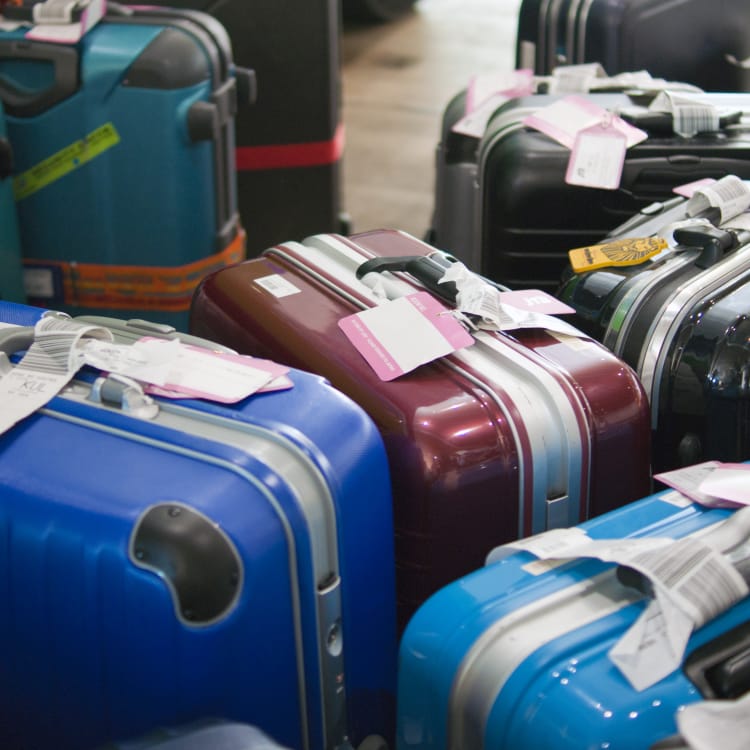
Luggage & Storage
- Helping You Plan
- Transportation in Japan
- Luggage & Storage
Enjoy the freedom and luxury of “Hands-Free” travel
Coming to Japan generally means bringing a sizeable amount of luggage with you, and carrying these heavy suitcases through busy and crowded cities is definitely one of the most stressful aspects of traveling.
Luckily, Japan's intense commitment to customer service offers your luggage to be safely transported and stored allowing you to travel “hands-free”.
"Hands-Free Travel" makes it possible to travel easily and comfortably without the inconvenience of heavy luggage. Visitors can use Japan's high-quality delivery/storage services to enjoy hands-free travel around Japan.

This logo marks for service counters certified as "Hands-Free Travel".
Just look for the Hands-Free Travel Counter to drop off your items, fill in the delivery form and you are ready to set off. Enjoy the top-class security and safety of Japan's services, multi-lingual access for international visitors, same-day delivery or delivery at a designated date and time, and compensation for damaged or lost items.
The Hands-Free Travel service is not just limited to delivery from and to the airport, most major hotels can arrange luggage delivery between hotels. Ask for details at the front desk on how to send your baggage onto your next destination. Even if you are not staying in a large hotel, you can still drop your bags off at a designated convenience store to be sent on.
If just want to simply store your luggage, you can easily use coin lockers of various sizes at most stations and tourist facilities in Japan. The cost varies on the size, but expect to pay between 300 and 600 yen. In many modern facilities it is possible to pay by various IC transit cards. Be aware that in very busy locations, the lockers fill up very quickly. Prior research into how and where to store your luggage will definitely help you to safe your time and simply focus on your journey throughout Japan.
Please be aware of some limitations on luggage delivery/storage services (For example items not exceeding 160 linear cm, within 25 to 30 kg in weight, contents are under 300,000 yen in value). Several items cannot be accepted: valuables, fragile items, fresh products and liquids, dangerous and hazardous materials. Delivery/storage services fee varies according to the airport, shipping destination and size of the luggage. Compensation services for damaged or lost items are provided. The amount of compensation may vary depending on the carrier used. There is also a shipment tracking service available.
Did this information help you?
out of found this information helpful.
Thank you for your feedback.
Recommended for you.

Please Choose Your Language
Browse the JNTO site in one of multiple languages

Luggage in Japan
Hands-free travel is easy in Japan, where luggage delivery and storage services are quite developed:
- Any traveler arriving early can entrust their luggage to their accommodation reception desk, where it will be watched until check-in;
- With the famous Takkyubin delivery service , it is possible to send luggage between two addresses in Japan and have them delivered within 48 hours maximum;
- There are plenty of storage luggage facilities, like coin lockers , in the country and especially in the train stations. They are trustworthy and offer a wide range of lockers sizes to fit anyone’s needs.
What to pack in your suitcase? You should prioritize personal belongings such as clothes, shoes and medication. Don’t bother with cosmetics or notebooks (paper is heavy) that you can buy in Japan in 100 Yens shops or in cute specialized shops.
Most rental apartments or houses include a washing machine. In any case, there are many launderettes across the country, at the building’s ground floor, near hotels or inns.
A rolling suitcase is a good choice to travel in Japan . Moving around in train stations or airports is easy as elevators and / or escalators are always available to access train platforms and boarding gates. A backpack is ideal for a hiking journey. Be careful, however, to keep your bag at your feet if taking a train or a subway during the rush hours.
- Flights and Airports
- Accommodation
- Transportation
- Internet & Phones
- Budget and money
- Japanese Food
- Visit with Kids
- Seasons: spring / summer / autumn / winter
- Weather forecast
- Time in Japan
- Holidays & Festivals
- Natural Disasters
- Customs and Duties
- Works and Closures
- From April 29 to 5 May -- Japanese Golden Week
- May 12 -- Mother's Day in Japan
- June 6 -- Beginning of the rainy season (Tsuyu) in Japan
- June 21 -- Summer starts in Japan
- From July 1 to 31 -- Gion Matsuri Festival in Kyoto with float processions on July 17 and 24
- July 1 -- Season start for climbing Mount Fuji
- Tokyo : Shinjuku , Shibuya , Harajuku , Asakusa , Akihabara , Odaiba , Ikebukuro , Ueno , Roppongi , Chiyoda , Ryogoku ...
- Around Tokyo: Kamakura , Nikko , Hakone , Mount Fuji , Mount Takao , Yokohama ...
- Kansai: Kyoto , Nara , Osaka , Mount Koya , Himeji , Kobe , Kinosaki , Kumano Kodo , Ise ...
- Japanese Alps: Kanazawa , Matsumoto , Takayama , Shirakawa-go , Nakasendo ...
- West: Hiroshima , Miyajima , Shikoku , Onomichi , Naoshima , Izumo , Kurashiki , Matsue ...
- South: Kyushu , Okinawa , Yakushima ...
- North: Hokkaido , Tohoku ...

- Temples and Shrines
- Gardens and Parks
- Hiking and Trekking
- Observation Decks
- Public Baths (Onsen and Sento)
- Festivals (Matsuri)
- Amusement Parks
- Visit on a Budget / Luxury

Keikaku is a travel agency specialist of Japan and providing different kind of services:
- Japan Rail Pass
- English speaking Guides
- Pocket Wi-fi
- Japan Nightlife
- Working in Japan
- Religion and Spirituality
- Arts and History
- Movies / Animated Movies
- Japanese Music
- Studio Ghibli
- Photos / Videos
- Weird Japan
- Translations
- Kana & Kanji
- Japanese Swear Words
- Honorific Suffixes (san, kun, chan...)
- Introducing yourself
- Thank you / Apologize
- Count / Say Your Age
- Say the Date / Tell the Time
- Happy birthday
- Enjoy Your Meal
- Writing your name

Kanas are the much-needed basic characters of written Japanese language. Memorize them at a fast pace with our method.

Ask any kind of question and share your knowledge about Japan in Kanpai’s community space, our Q&A section Kotaete.

Isshoni means "together" in Japanese: share your trip details (dates, places you would like to visit) and find companions to travel in Japan.

Create your Kanpai account to manage your profile and view your participation history (questions, answers).
Truly Tokyo
A Tokyo Travel Guide
Luggage Shipping: The Smart Way to Travel in Japan
The best way to travel light and easy in Japan is to use their super-efficient overnight luggage shipping services (takkyubin). You’ll never have to carry anything more than a light knapsack! Just be careful when shipping your bags to the airport on the day you fly home (see warning box below).

First: What Not to Do!
Every time we go on the shinkansen (bullet train) or Narita Express (N’EX) train, we are amazed by the sheer amount of luggage that tourists bring to Japan. Check out this group of tourists waiting to board the shinkansen in Kyoto:

Here’s another group of people trying to get their luggage onto the N’EX:

And here’s what it looks like when the folks get onto the train. Doesn’t that look like fun? And when the luggage racks are full, you’re going to have to put those big bags where your feet should go, so you’re going to have to assume some sort of yogic posture to fit into your seat.

In addition to the sheer hassle of lugging too much baggage around Japan, the main problem with carrying your big suitcases around the country is the complete lack of space for luggage on most Japanese trains. Here’s a picture of the overhead luggage rack on the shinkansen. There’s just enough room for a small pack that would fit into the overhead bin on an airplane.

There’s also enough room for three or four suitcases behind the last row of seats in each shinkansen car. You need to buy a special ticket from a JR ticket office to use this space in reserved cars (you don’t need a special ticket to use this space in unreserved cars). Here’s the JR Page on the oversize baggage area on the shinkansen . You can buy tickets to use this area at JR stations in Japan. You can also buy tickets for this space via the JR Online Booking Service if you buy your Japan Rail Pass direct from JR.

You must be thinking: There’s got to be a better way! And, guess what? There is a MUCH better way.
Using Japan’s Luggage Shipping Services
If you look closely at the Japanese traveling on trains, you’ll notice that few of them have big bags. Most have briefcases, knapsacks or handbags. So, where are their big bags? Here’s the secret: They ship their big bags to their destination by one of Japan’s excellent overnight shipping services. These are called takkyubin (宅急便) in Japanese. The most famous of these is Yamato Kyubin, but there are several others and they’re all about the same. Here’s one of Yamato’s trucks:

Japan’s express delivery services are one of the wonders of the modern world: They’re incredibly fast, efficient, reliable, and unbelievably cheap. And they don’t break anything. In short, they’re the exact opposite of so-called “express” delivery services anywhere else in the world. In most cases, they can get your bags to your next destination overnight, but some far-flung destinations like Hokkaido or Okinawa might take two days.
Booking Your First Hotel
Before you use the takkyubin service, you'll obviously need to know the name and address of the hotel where you'll be staying. If you've not already decided on a hotel, see our Where To Stay In Tokyo guide or simply browse available Tokyo hotels on your chosen dates.
Check Hotel Availability
Destination, check-in date, check-out date.

Airport to First Hotel Takkyubin
After a long flight to Japan, do you really want to lug your big suitcase onto a train or bus to get to your hotel? Of course not! So you have a choice: either book your luggage delivery service online through an agent like Klook before you leave home, or organise your luggage delivery in person when you arrive at the airport. Look for the takkyubin counters, which will usually be within 100 meters of the entrance into the arrivals hall from the customs hall. Here are the takkyubin counters at Tokyo’s Narita Airport:

Here are the takkyubin counters in Kansai International Airport (KIX):

The folks at the counters usually speak some English. Just tell them the name of your hotel and they’ll handle the paperwork and take your payment. In most cases, your bag will arrive at your hotel the following day. So, you’ll need a day bag to hold essentials like travel documents, meds, toiletries, your phone and a change of clothes. See later in this article for some ideas of how to pack your main bag and your day bag so that you can make best use of this service. After you’ve given them your main suitcase, you can waltz onto your train or bus into the city light as a feather. Recently I flew into Narita and used takkyubin to send my bag to my hotel in Kyoto (I spent one night in a Tokyo hotel to take care of some errands). Here’s what I looked like getting on the shinkansen to Kyoto:

And here’s my bag waiting for me in my hotel room in Kyoto. I didn’t even have to lug it up to my room. Most hotels will bring your bag to your room before you even check in. What could be more convenient than that?

Warning: Shipping Bags to Your Departure Airport
While Japan’s takkyubin (luggage forwarding services) are fast and reliable, be careful if you ship your bags to your departure airport. If you do so, write the correct airport terminal and your flight number on the takkyubin form. Japan’s big airports have multiple terminals and you don’t want your bags to be sent to the wrong terminal (takkyubin companies have counters in every terminal).
Hotel to Hotel Takkyubin
Of course, takkyubin is also great for shipping your luggage from one hotel to the next. This allows you to travel free and easy from one destination to the next. If you get your bag to the front desk of your hotel by around noon, they can usually get it to your next hotel the following day. Thus, again, you’ll need a day bag to carry essentials to tide you over until your main bag arrives. Hotels in Japan are very used to this. They’ll handle all the formalities and fill out the paperwork for you. You can also book hotel to hotel luggage delivery online with Klook if you wish.

Convenience Store Takkyubin
You don’t have to stay at a hotel to use this service: you can also send your luggage by takkyubin from all convenience stores in Japan. You can also receive your bags at a convenience store in Japan. The staff at the counter can help with the paperwork. Just try to go when they aren’t so busy, as otherwise, you’re going to create a really long line.

How Much Does it Cost to Use Takkyubin?
Takkyubin fees are based on weight, distance to destination, and size of the bag. As a ballpark figure, it costs around Y2,000 (a bit less than US$20) to send one regular suitcase from Tokyo to Kyoto. Here’s the receipt for sending my bag from Narita to my hotel in Kyoto:

You can compare the in-person cost to booking a luggage delivery service online .
How to Pack to Make the Best Use of Takkyubin
In order to make the best use of takkyubin, you need one main suitcase/bag for your heavier and bulkier items, like clothes etc. And, you need one small day bag (knapsack, shoulder bag etc) to carry your travel documents, toiletries, a change or undergarments or clothes, your phone and chargers. Here’s the setup that I use when traveling to Japan:

Here’s what I keep in my day bag (this is for a warm-weather trip):
- travel documents (passport etc)
- toiletries and meds
- pair of socks
- pair of underwear
- black long-sleeved top
- folder with some maps etc

Note that the bag I used for my day bag is a Kingsons anti-theft bag . It’s an awesome bag and it has an incredibly handy smartphone holder on the front shoulder strap that makes it very easy to grab your phone at any time. It’s a mystery how they can sell these great bags for such a cheap price: they only US$39.99 on Amazon.com. I highly recommend this bag – not just for travel, but for every day use.

Here’s what I keep in my main, bigger bag. Note that even this isn’t too big because I travel light (and this is for a warm season trip).
- light jacket
- a change of pants
- a few pairs of socks
- a few pairs of underwear
- two long-sleeved black tops
- two short-sleeved shirts
- one pair shorts

The bag is a “rollie” bag that can convert into a backpack. It was made by the Australian outdoor company Kathmandu. I bought it in Melbourne back in my Lonely Planet days. It’s the best travel pack I ever owned. Unfortunately, they no longer make this model. I wish I had bought three of them!
Other Useful Information
- Book Japan luggage delivery services online via Klook
- Packing List for Japan
- Japan Rail Pass Guide
- How To Buy Shinkansen Bullet Train Tickets
- How To Make Japan Train Reservations
- Tokyo Hotels
- Kyoto Hotels
Tokyo Vacation Checklist
- For all the essentials in a brief overview, see my First Time In Tokyo guide
- Check Tokyo accommodation availability and pricing on Booking.com and Agoda.com - often you can book with no upfront payment and free cancellation
- Need tips on where to stay? See my one page guide Where To Stay In Tokyo
- You can buy shinkansen (bullet train) tickets online from Klook - popular routes include Tokyo to Kyoto , Tokyo to Osaka and Tokyo to Hiroshima
- You can buy a Japan SIM card online for collection on arrival at Tokyo Narita or Haneda airports. Or rent an unlimited data pocket wifi router
- See my comprehensive Packing List For Japan
- Compare airline flight prices and timings for the best Japan flight deals . Check my guides to arriving at Narita Airport and at Haneda Airport .
- If you're visiting more than one city, you might save money with a Japan Rail Pass – see if it's worth it for you
- A prepaid Welcome Suica card makes travelling around Tokyo much easier - here's how
- World Nomads offers simple and flexible travel insurance. Buy at home or while traveling and claim online from anywhere in the world
Tokyo District Map

- Imperial Palace Area
- Tokyo Station
- Shimbashi Shiodome Hamamatsucho Shinagawa
- Akihabara Kanda
- Roppongi Akasaka
- Harajuku Aoyama
- Ebisu Daikanyama Meguro
Disclosure: trulytokyo.com is a participant in the Amazon Services LLC Associates Program, an affiliate advertising program designed to provide a means for sites to earn advertising fees by advertising and linking to amazon.com and amazon.co.uk. World Nomads provides travel insurance for travellers in over 100 countries. As an affiliate, we receive a fee when you get a quote from World Nomads using this link. We do not represent World Nomads. This is information only and not a recommendation to buy travel insurance.

What to Really Pack for Japan: The Complete Travel Checklist
Are you planning a trip to Japan?
You will see many general advice online on what to pack for Japan travel, from overstuffed high fashion wardrobe to minimalist capsule wardrobe. But the packing list for travelers visiting Japan is unique. At most basic level, two (2) things will dictate what you will pack for your trip: 1) Where in Japan you are traveling and 2) The weather you’d expect during your stay. Once this is determined, it will make packing lighter and much more manageable.
Travelers in Japan should expect rain at any time of the year, except when they visit Hokkaido. For detailed weather forecasts and earthquake information, go to Japan Meteorological Agency’s website at https://www.jma.go.jp/en/yoho/
What Should You Wear And Not Wear In Japan?
By now, you should be aware of the Japanese culture and traditions. A good traveler prefers not to look like a tourist in Japan and instead try to blend in. That is, at least as much as a foreigner can in a nearly homogeneous society. Leave your flip flops at home as they are considered very unstylish and underdressed by Japanese people unless you are going to the beach. However, in a somewhat weird contradiction, Crocs or foam clogs are considered perfectly acceptable.
Dressing inappropriately in public won’t work with Japanese people. In fact, Japan has strict dress code for many occasions. For women, avoid wearing spaghetti straps or blouses, or shirts with a plunging neckline. Avoid showing your shoulders when visiting temples or shrines. For men, wear a blazer or jacket when going to a restaurant or nightclub, especially if you plan to go to a fine dining restaurant or an upscale sushi bar. Some may tell you it’s okay since you are a foreign tourist, but Japanese people will respect you more if you abide if you dress appropriately. Avoid wearing all black. It’s strongly associated with funerals.
How To Pack Light in Japan
We all want to pack light when we travel so that our luggage doesn’t weigh us down as much as possible. Packing light also makes unpacking easier at the end of our journey.
Below are some tips to save space and weight in your luggage:
- Leave your chunky or heavyweight sweaters and scarves at home. Cashmere sweaters and pashmina scarves are wonderful alternatives. They’re incredibly thin and lightweight for the level of warmth they offer.
- For flexibility, pack a pair of black travel pants made of cotton and elastane fabric. They’re lightweight and dry out faster compared to jeans.
- When packing your clothes, use the roll-out and put them in packing cubes like these ones to keep them compact and organized allowing for more luggage space.
- When traveling between transitional seasons, pack a versatile jacket called 3-in-1 such as an interchangeable waterproof jacket with a removable liner that’s usually a fleece.
- Only pack two pairs of shoes, dress shoes and your most comfortable walking shoes.
How To Travel Hands-Free in Japan
Most hotels in Japan have a check-in time of 3-4 p.m. If it’s an Airbnb or budget accommodation, they will often not allow you to store your bags. So you have three options to avoid walking around with all your luggage:
- Luggage forwarding service . If you can’t pack light and have several pieces of luggage, you’re in luck. You can have your luggage delivered from the airport to your hotel, the same-day. Every airport in Japan has a luggage forwarding service or TA-Q-BIN, as the Japanese call it. Just look for the red sign, “Hand-Free Travel,” as they are the ones that will deliver the same day. Make sure the luggage being forwarded doesn’t have the items you need for traveling. The cost varies between ¥1,000-¥3,000 per bag, depending on the size and weight.
- Coin lockers . Coin lockers are everywhere in Japan but can always be found at train stations. They come in small (¥300), medium (¥400), and large size (¥500-¥800), though the per-day prices may vary.
- Luggage storage service . Another option is to leave your luggage at the Voyagin Office in Shibuya. There’s no size restriction. Their prices may change, and if it’s during the off-season, it can drop to ¥500 per day, so make sure to check the current price here .
Top 5 Essentials For Your Japan Packing List
There are specific instances that are somewhat unique to Japan that you’ll undoubtedly encounter. Above all, pack light and bring the most comfortable pair of slip-on walking shoes. You’ll understand more later as we progress, so let’s take a closer look.
- The right luggage. A backpack or a duffel is the best luggage for travel in Japan. You can easily carry it up and down the stairs and at train and bus stations. Backpacks are preferred because you are going to encounter a lot of stairs in Japan. But if you need wheels to save your back, it’s best to get a wheeled backpack. Japanese trains and buses don’t have much space for large pieces of luggage, so if you have a backpack, please take it off when boarding and place it between your feet or on the overhead storage rack. An enormous suitcase will also take up a lot of precious space in your hotel rooms, which are small compared to western hotels. So pack light! Only take one piece of check-in luggage and a carry-on for your items. We have a guide to help you pick the best bags for you here .
- A pair of comfortable shoes . When traveling in Japan, you’re going to walk a lot! Take your most comfortable pair of casual shoes for sightseeing, preferably with memory foam. They are beneficial in relieving pain and soreness. If you are traveling during the spring and summer seasons, take a waterproof pair. Many places in Japan also require you to take your shoes off, such as genkans (the entrance of a home), izakayas (Japanese bars), restaurants, ryokan (traditional Japanese inns), and temples. Slip-on shoes or simple-laced shoes will serve you well in these situations, so make sure your socks don’t have holes in them. Our favorite slip-on shoes are from the Skechers Go Walk series . Many tourists who traveled to Japan swore by the Skechers brand as well. If you plan to go to a fine dining restaurant or a business occasion, take your dress shoes.
- A portable hotspot device or data SIM card . We cannot emphasize enough how important it is to have a reliable internet connection while traveling in Japan. If you haven’t reserved a portable hotspot device, book it here . If you’re traveling solo and short-term, it’s cheaper to get a data SIM card.
- Cash . Despite being a very high-tech nation and being the host country of the 2020/21 Summer Olympics, Japan still relies heavily on cash for many transactions. Quick tip: Withdrawing cash from ATMs in Japan gives you a better rate than exchanging your currency for Japanese yen. After getting your luggage and getting through customs, make sure to pull out money inside the airport. You can withdraw cash from Japan Post ATM (JP Bank) and inside convenience stores such as 7-11, Lawson, Family Mart, or Ministop.
- A prepaid IC card . Buying a reloadable prepaid IC card will make your travel in Japan so much easier and convenient. The primary purpose of IC cards is to avoid getting tickets from a ticket machine every time you ride a train. So you can simply swipe and go. You can use it to pay for buses and taxis and even some vending machines and convenience stores. You can purchase either a PASMO (by Tokyo Metro) or Suica IC card from any central train station. The initial cost is ¥1,000 (¥500 for card creation fee and the remaining ¥500 is ready for use). The ¥500 will be refunded if you return the card to the station office.
Japan Document Checklist
Due to the ever-changing circumstances and frequent travel updates for Coronavirus (COVID-19) travel restrictions , please follow the most recent directions from the Japanese Embassy in your country.
- A valid passport and visa . Check your passport if it’s valid for at least 6-months and has a couple of blank pages. You should check with the Ministry of Foreign Affairs of Japan website if your nationality requires a Japan visa.
- Travel insurance . COVID-19 has created a new normal for travelers, and in many countries, they make travel insurance with COVID-19 coverage mandatory. Before the pandemic, my US friends have used and recommended RoamRight . But in these changing times, it’s best to speak with your local travel agent to see which travel insurance provides COVID-19 coverage.
- Flight tickets . If you’re planning on showing your flight tickets through your mobile, make sure you have downloaded a copy on your phone.
- Hotel or Airbnb reservations . If you’re riding a taxi, it’s good to have your hotel’s address in Japanese. It’s also important to remember the nearest train station to your hotel so you’ll know where to go upon landing. Lastly, depending on where you’re coming from, having a hotel reservation could make your immigration time a bit smoother.
- Japan Rail Pass (JR Pass) . If you are traveling extensively in Japan for 7, 14, or 21 days, consider buying a JR Pass online. You can only buy the JR Pass outside Japan and through an authorized online distributor. To activate and use it, you need to exchange your email voucher at a JR office at the airport or main train stations. To learn more about JR Pass and whether it’s for you or not, click here .
- Airport to hotel transfer reservation . If you don’t have the JR Pass, book your transfer from the airport to your hotel. Not only will it save you time and money, but it’ll make your arrival easy and hassle-free. It’s more comfortable and convenient to take a shuttle transfer from the airport rather than train based on our experience. These shuttles will drop you off directly at your hotel or a train station near your hotel.
- Debit cards and credit cards . To save money, bring a credit card that doesn’t have foreign transaction fees. And a debit card that reimburses international ATM fees. Make sure to contact your bank about your travel plans to avoid disruptions with your card.
- Passport and credit card photocopies . In case of emergencies like losing your passport or credit cards, it’s good to have copies of your passports and credit cards in your email or on your phone. All you have to do is take a picture of your passport’s bio page and your credit card’s front and back photos using your phone. Do this for your entire family traveling as well.
- Confirmation tickets in Japan . If you book tours or activities, make sure to save the confirmation email on your phone or have it printed out if required by the travel agency. In Tokyo, we highly recommend booking a Mt. Fuji day tour, local food tours, tickets to Ghibli Museum, or Grand Sumo Tournament. If you’re visiting Universal Studios Japan in Osaka, it’s essential to book your tickets online as they sell out quickly at the gate.
- International Drivers Permit . If you plan to rent a car or go-karting , you need an International Drivers Permit or a Japanese driver’s license to drive in Japan.
Gadgets and Electronics
- Electronics . Tablets, mobiles, laptops, cameras, etc., do not check these in. Get a carry-on bag that is big enough for your electronics but still within your airline’s requirement. Check out a list of international flight-approved carry-on bags here or consider an underseat luggage.
- e-Reader . Carrying books will only increase the weight of your luggage. An e-Reader such as a Kindle would allow you to read your favorite books. That’s if you find the time too!
- Power plug adapter . Japan uses Type A and Type B plugs and sockets, just like in the U.S. and Canada. If you’re not from North America, get a universal power adapter, preferably with Type A & B sockets, we recommend this one .
Personal Care and Toiletries
- Vitamins and supplements . If you have one.
- Jet lag remedies . These jet lag relief pills are beneficial if you’re coming from a different time zone.
- Prescription medications . Some common prescriptions and over-the-counter drugs in the United States are illegal in Japan. Notable decongestants such as Sudafed and stimulants such as Adderall are illegal. It does not matter if you have a valid U.S. prescription for a medicine/drug illegal in Japan: if you bring it with you, you risk arrest and detention by the Japanese authorities. For more information, click here .
- Toiletries . I’ll leave this up to you since each individual varies. If you have a preferred choice of shampoo, conditioner, body wash, deodorant, etc., it is best to bring it with you. It is not likely that you would find the same brand in Japan. It may also be challenging to find similar products because the ingredients are in Japanese. For liquids, pack them into squeezable TSA-approved leak-proof travel containers like this one .
Long-Haul Flight Essentials
- Packable travel pillow . Check out this best-selling packable travel pillow here .
- Noise-canceling headphones or earphones . For added comfort, you can get a pair of noise-canceling headphones like this .
- Lip balm . I find the travel-sized petroleum jelly works best than Chapsticks.
- Effective hand sanitizers . Bring a travel size one.
Optional Items But Recommended
- Coin purse . You can easily find these in 100 yen stores in Japan, but if you already have one, bring it with you as you will get a lot of coin change.
- Power bank . Your mobile phones are going to be running throughout the day because of continuous connectivity. Power banks are expensive in Japan and only provide a small mAh capacity, so get it from your home country. Our favorite power bank is this one . You may also consider the newer model with an enormous mAh capacity.
- Collapsible water bottle . Tap water in Japan is safe to drink, and you can find drinking fountains pretty much everywhere. Taking them with you is not only good for the environment, but you will save you a ton of money during your sightseeing journey in Japan. Collapsible water bottles are affordable in Walmart and Amazon.
- A spare packable bag . To avoid buying additional luggage while in Japan, which can be expensive, make sure to pack a spare bag. Souvenirs, Japanese instant noodles, milk tea, weird Kit Kat favors, and chuhai — if you fall in love with Japan’s flavors or culture, you will need extra storage space! To view our recommended duffle bags, click here .
What Not To Bring To Japan
- Meat products, plants, fruits, and vegetables.
- Firearms and pocket knives.
- Illegal drugs and narcotics. For more information, click here .
- Umbrella. These are very cheap to get in convenience stores in Japan.
RELATED READ :
- The Best 10-Day Japan Itinerary For A First-Timer
- Best Time To Visit Japan
4 thoughts on “What to Really Pack for Japan: The Complete Travel Checklist”
How can a get a copy of the pdf printable packing list shown at the top of this article? 🙂 <3
I would also recommend Oyraa app! Used it a lot to call interpreters to get help when making inquiries to non English-speaking administrations, which can be quite life-saving, in addition to being cost-effective. Hope this may help!
I recommend water bottle too! Preferably, the one that’s packable and with filtration to improve taste. I got mine from an outdoor store. We saved a lot of money in Japan!!
Hey, you’re right! It saved us a lot of money too. I’ll go ahead and update this checklist!
Leave a Comment Cancel reply
Save my name, email, and website in this browser for the next time I comment.
Backpack or Suitcase – which travel sidekick is best when you go to Japan?
- Jenny Stokes
- 6 minute read
Table of Contents Hide
Making the right decision, adaptable backpack, dependable suitcase.
When planning your trip to Japan, one of the important things you have to consider is the luggage you will bring. Should you bring a backpack or a suitcase as your trusted travel sidekick?
This may seem like an insignificant question at first. However, choosing the right luggage to accompany you throughout your trip can make a significant impact on your travel experience.
In this guide, we will examine and weigh the advantages and disadvantages of using a backpack versus a suitcase to ensure you will have a smooth and convenient journey in Japan.

The decision to bring an authentic branded backpack or a suitcase when traveling to Japan should align with your travel style, the nature and length of your trip, and your specific needs and personal comfort .
Remember, there is no one-size-fits-all when it comes to traveling and packing. You need to consider the advantages and disadvantages of using a backpack or a suitcase when traveling to stay safe yet still enjoy the travel experience.
Ultimately, the decision of using a backpack over a suitcase or vice versa would depend on your needs, comfort, and what you are willing to accept or give up.
Backpacks offer notable advantages, especially if you are a traveler whose primary consideration is mobility, efficiency, and convenience.
However, keep in mind that backpacks also come with their share of drawbacks.
Let’s discuss them one by one.

Advantages of bringing a backpack
Mobility and maneuverability.
The main advantage of a backpack over other types of luggage is that it offers you maneuverability when navigating busy streets, crowded train stations, packed buses, or trekking through forests and uneven roads.
It also frees your hands to do other things like taking pictures, carrying souvenirs, or holding onto something to balance yourself when traversing rough terrains in remote destinations.
Because of the mobility it offers, you can even go on off-the-beaten-path explorations, travel through jungles, go hiking, or wade through rivers and lakes without the unnecessary burden of dragging a suitcase behind.

Efficiency and Minimalism
Why are you traveling abroad? Are you not visiting distant places to gain experience and insights into other cultures, history, and traditions, and not so you can bring clothes to exhibit a fashion show or carry other unnecessary stuff?
Keeping that in mind, a backpack encourages minimalism and urges you to bring only essential items for your travel. This prevents you from over-packing, leaving the weight manageable for you to carry. It also keeps your mind focused on just enjoying your trip.
Moreover, since you have limited space and only have indispensable items, you are more mindful and organized with your personal belongings, hence less chances of you losing or leaving things behind.
Convenience features
Bags are designed for convenience.
The numerous pockets and compartments not only allow you to keep your personal belongings organized, but they also allow you easy access to items like passports and snacks without the hassle of rummaging through your bags.
To top that off, if you are carrying fragile cameras or laptops, the specialized compartments of backpacks can keep them accessible and safe from breaking.
You can bring your backpack in various settings . You can take it when exploring the city streets, malls, and markets. You can even bring it when you go on day trips to temples and shrines.
Backpacks are also great when you are on a hiking adventure when you go to the beach, or when you join any outdoor adventure .

Disadvantages of backpacks
Although backpacks have remarkable advantages, they are not without downsides.
Here are some of the drawbacks and limitations of using a backpack:
Limited storage space
It is obvious that backpacks are smaller than suitcases and offer a small space for you to store your belongings.
If you are staying in Japan for weeks or months, you would need to bring more clothes and personal items, which would be hard to fit inside a backpack.
This can also be a problem if you suddenly decide to buy souvenirs from shops. You might not find enough space in our bags to store them.
Load and weight distribution
Putting all your travel items in a single backpack and carrying it for long periods may cause strain in the back .
Imagine having to carry a heavy load on your back from the combined weight of your clothes, electronic devices, and other personal items for hours, and your back will hurt in no time.
This may also lead to fatigue when you go on long trips.
Challenge of finding items
Backpacks are indeed designed with efficiency in mind. However, they can pose an inconvenience when finding items you packed at the bottom of the bag.
You may have to dig underneath the pile of clothes and other belongings inside the bag, or you may be forced to unpack your things just to find and take something out of the backpack.
Security issues
Since you have to wear it on your back, it may be hard to monitor and secure your belongings, especially in crowded areas.
You will become easy pickings for pickpockets since they can take your belongings inside the backpack without you noticing.
The suitcase is a common choice for many travelers because of the benefit of having ample storage , easy organization, and stability, which is especially great when going on a long trip that involves tons of activities and visiting various destinations.
But with its marked advantages, it also comes with disadvantages that you need to accept.

Advantages of bringing a suitcase
Generous storage.
One of the most evident advantages of using a suitcase is the generous storage capacity it provides. It has room for everything – shoes, casual attire, business attire, electronic devices, and more!
This is especially useful when you are staying abroad for an extended time and you need to have a wide range of clothing options.
It is also useful if you like going on shopping sprees and bringing home souvenirs when you visit tourist spots like Nikko or Kamakura .
Easy packing and unpacking
Since you can open it wide, you can effortlessly pack and unpack your belongings when using a suitcase.
With built-in organizers, dividers, pockets, and straps, a suitcase allows for easy and orderly organization since you can neatly fold clothes, pack them in cubes, and arrange your belongings systematically.
This helps keep clothes from wrinkling , making it the preferred luggage of business travelers and those who are expecting to attend special events.
What’s more, you don’t have to disrupt and unpack your suitcase when when find something. All you have to do is open it up to see what’s inside all at once, and simply locate the item you are looking for.
Stability and weight management
Suitcases come with small wheels attached at the bottom of the luggage allowing you to bring heavy loads without breaking a sweat.
Since you can roll the suitcase, you don’t have to strain your back. All you have to do is exert minimal effort to pull the suitcase beside you.
The wheels also allow you to easily maneuver your heavy suitcase in airports and well-paved roads in urban settings.
Suitcases have built-in locks and usually come in hard shells that can provide an extra layer of security for your belongings.
What’s more, as suitcases are near the floor, it would be hard for anyone to try to steal your belongings. You can hide the cash you bring when you travel to Japan .
Moreover, since you typically just roll them right beside you, you can keep an eye on them allowing you to easily spot a thief who may attempt to open your suitcase.

Disadvantages of suitcases
There is no question that suitcases are wonderful travel companions. However, you also have to consider the limited mobility, the temptation to over-pack, and the accessibility challenges that come with it.
Limited mobility
This is especially challenging when you have to navigate crowded airports and less accessible areas. With its extra bulk requiring additional space , it would be cumbersome to find a big enough space to roll it on.
What’s more, if you have to use it on uneven ground, you may find yourself struggling to move it. You would be required to exert more effort and strain yourself just to get it from one area to another.
Prone to over-packing
The advantage of having extra storage space can be a double-edged sword as it can cause you to over-pack .
Because of the extra space, you might be prompted to bring unnecessary items, and even go over the luggage weight limit . This could result in you paying additional fees , or worse, forcing you to throw away some of your belongings to avoid paying the fee.
Not adaptable
Suitcases are not adaptable to all types of travel. It is mostly restricted to business travel or when you have to stay within urban settings.
It is not advisable to drag a suitcase around when you are planning on engaging in outdoor activities, or visiting areas with uneven roads as it will only hinder your movement and even limit you from visiting remote areas .

Post written by: Jenny Stokes

Travel Eastbound: Japan or China? Answer to your Epic Travel Dilemma!

Travel Japan or Taiwan – Which Asian jewel destination is for you ?
You may also like.

Authentic or Counterfeit? What happens when you bring fake bags to Japan?

Can you use JR Pass on Tokyo Metro? – How to successfully use your travel pass

Best Way to Get from Kyoto to Osaka: Quick and Efficient Travel Tips
Make planning your Japan trip that little bit easier
The Easy Guide to the Shinkansen Luggage Rules
Sharing is caring!
- Latest Posts
- The Best Areas to Stay in Kyoto – On Your First Trip - 20 April 2024
- The 9 Chain Restaurants I Live On in Japan - 17 April 2024
- 10 Things Not Miss in Nagoya’s Endo-Ji Shopping Street - 11 April 2024
If you’re planning on travelling on the bullet train during your Japan trip, it’s important to know the rules about where that luggage is allowed to go on the train, as it might change how you need to plan your trip. Here’s what you need to know…
Quick Summary
Bags between 160cm and 250cm must now go in a particular area on some Shinkansen trains – including the popular Tokyo to Kyoto route.
You need to book a seat reservation that includes this area to use it.
The guards will move luggage if it’s in the wrong place.
Read on to find out how to measure your luggage, the different areas where bags can go on the train, how to book the luggage space, and what to do if you don’t want to carry your luggage.
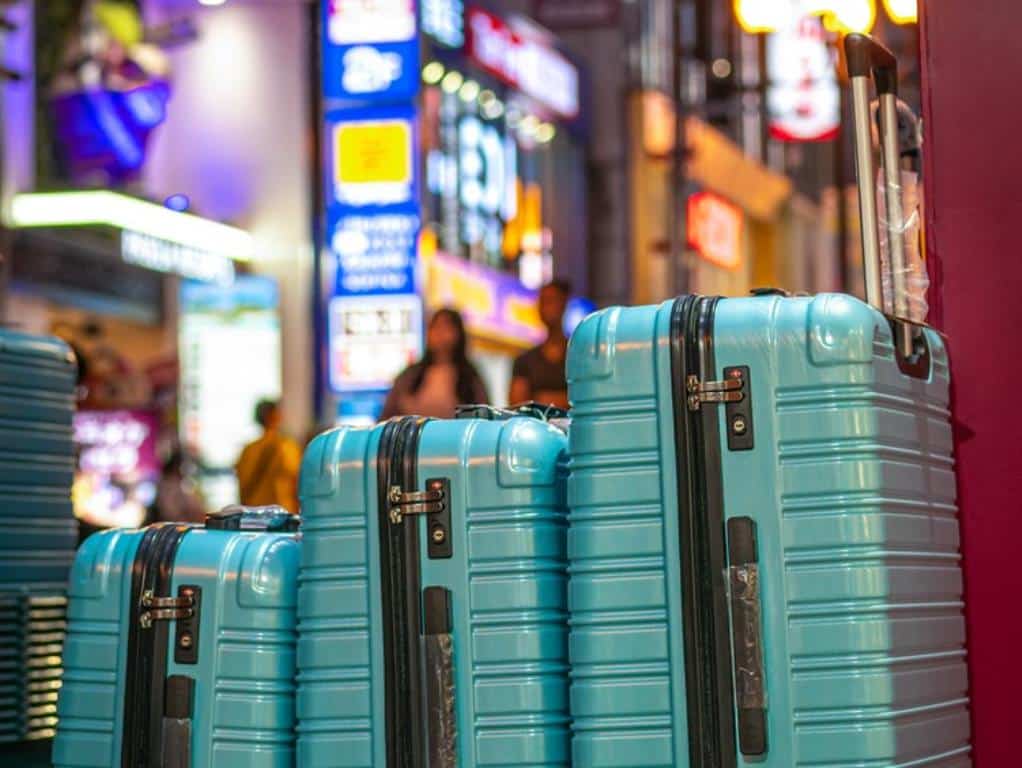
The tape measure is out in our house.
While I’m now used to going to Japan carrying as little as humanely possible and can therefore get a month’s worth of packing into a tiny case, Mr Japlanease is also coming on our next trip and he is not a super light packer.
So I need to make sure the suitcase he has in mind conforms to the suitcase rules on the Shinkansen (bullet train).
If you want to do the same – or are reading this because you saw the headline and suddenly thought, erm, what rules? Here’s what you need to know…
Where Can You Put Luggage on the Shinkansen?
What lines do luggage rules apply on, what are the luggage size rules on these shinkansen, what to do if you need a luggage reservation, what if the behind the seat area is empty, why is it better to bring a smaller bag anyway, other questions, what’s a luggage forwarding service, what else to read.
Technically, you can put luggage in four different places on the Shinkansen.
In front of your legs
On the overhead rack that runs along the top of the carriage
In a gap behind the two last seats in every carriage.
And, on some lines but not all, and probably not the ones you are most likely to be going on, in the luggage racks by the door.
Which of these you can use depends on two things – what lines you are travelling on and the size of your suitcase – and this is where people get confused.

They are only for three Shinkansen routes – but they are the ones the average tourist is most likely to travel on. They are…
The Tokaido Shinkansen
This is the busiest line in Japan, and it runs between Tokyo and Kyoto/Osaka. If you’re travelling to Shin-Yokohama, Odawara, Shin-Fuji, Nagoya, Shizuoka, Shin-Osaka, Kyoto or any of the stops on this line in-between by bullet train, then you’re travelling on the Tokaido.
The San’yo Shinkansen
This runs west between Osaka and Fukuoka and includes stops like Shin-Osaka, Shin-Kobe, Hiroshima, Okayama, Fukuyama, Mihara, Kokura and Hakata.
If you’re visiting Hiroshima, Bunny Island (Okunoshima), Naoshima, and Himeji Castle and are taking the bullet train, you’re probably using the San’yo Shinkansen.
The Kyushu Shinkansen
This runs between Hakata Station in the city of Fukuoka to Kagoshima in the south and includes stops like Kurume, Kumamoto, Izumi and Kogashima-Chuo.
On these lines, the luggage racks are no longer used and where you can put your luggage depends on how big your case is.
As we said, on the above Shinkansen, the size of your luggage determines where you can put it while you travel – or even if it can go on the train with you.
How to Measure Your Luggage
Grab a tape measure and measure the following three places
How tall it is (including the wheels).
How wide it is across the front.
How deep it is from front to back.
Now, add all those numbers together.

You are all good if the three numbers add up to under 160cm (64 inches). You can either place your luggage on the overhead rack or in the gap in front of your legs.
If it is between 161-250cm (64-100 inches), you must place your bags in a special area in the carriage behind the last two seats. And you have to book a luggage reservation to get the spot.
If your bag is over 251cm (100 inches) it can’t go on the train with you. It’s unlikely you’ll be carrying a case that big, but just in case, you’ll need to use a luggage service.
You make a luggage reservation at the JR Ticket Office when you make your seat reservations.
You need to tell the staff that you need to use the oversized baggage area, and they will book you on a train where this is free and in the correct seats. The earlier you can do this, the better, as these seats are limited.
If you’re using the ticket machines, either to book your whole journey or to make a seat reservation, then make sure you select a seat with the oversized baggage area so you get the right seats.
If you’re not using a JR Pass, you can book seats with oversized baggage via the SmartEx App and directly with the Rail Companies. See more about this and other advice in our guide on how to buy Shinkansen tickets .
If you’re confused about using the Shinkansen or just want a handy way of planning your journey, have a look at the Bullet Train Planner in our Etsy shop. It contains tips, tricks and printable planning sheets to help you track your costs and list your train plans and reservations so you’re super organised. It could be the best couple of bucks you spend!
Can’t you stash your luggage there anyway?
Please don’t be that person! For starters, someone else might have booked the luggage space who is getting on further along the line and then they don’t know what to do with their bag.
Luggage can also stop the seats reclining, which is inconvenient to anyone who has booked those seats.
Plus, you will put the conductor in a difficult position as they will have to deal with it.
The fine for putting your luggage in the gap without a reservation is 1000 yen, and the conductor can move your luggage to somewhere more suitable (which might not be convenient for you!).

On my last trip, they did come along the carriage and ask people who had put their luggage in the area without a booking to move their cases. I didn’t see anyone get fined, but there were many confused people who weren’t quite sure why they were suddenly being told to lift big cases above their heads.
Ditto using the luggage racks. If they’re closed or taped off, it means you can’t use them.
Generally, we’d suggest bringing a case under 160cm (it’s one of the first rules in our Japan Packing List ). This is actually a pretty hefty-sized case – Mr Japlanease’s case in the picture below is a 160cm case; mine, the small one next to it, is a little bit over cabin size for comparison.
But if you need further convincing, here are why we’d say to downsize if you can.
Baggage Seats are Limited
You might find your options for when you can travel are more limited as you have fewer seats to pick from.
On a Hikari train (one of the ones you can use with Japan Rail Pass), for example, only 35 seats are available in the Ordinary Class cars for those travelling with oversized baggage – about a third of the reserved seats available.
This might not matter on a normal day, but if you’re travelling in a busy period, this could delay your departure by quite a bit if everyone else has already booked the slots before you.
It Might Cost More
You have to pay for a seat reservation. This won’t matter if you’re using the Japan Rail Pass, or some regional rail passes, as these are included for free as part of the service, but if you’ve worked out it’s not the cost-effective option for you, then you’ll be cancelling out some of the savings by having to use reserved seats.

You may not be able to recline your seat with the luggage behind it.
Flexibility
If you miss your train and have to get another one, or you want to take an earlier train (which you can normally easily do with the Japan Rail Pass by either sitting in an unreserved seat or going to the office and reserving a seat on the next service), you might not be able to get on if you need a luggage seat and they are all booked.
Potential for Putting Your Back Out!
A bag close to 160cm is pretty large, which means it can also get heavy – but don’t forget, you’ve either got to put this in front of your legs, which is unlikely to happen, or lift it up, over your head to get it onto the overhead rack – and get it back down again when you reach your stop. If your bag is heavy, that’s going to be a chore.
If you don’t think you can lift your bag and it won’t fit in front of your legs, you can book a seat using the oversized luggage area.
Other Reasons
Other reasons you might want to pack light include lugging your cases around stations which can add up to a few thousand steps and don’t always have convenient lifts or escalators.
Also, Japanese hotel rooms can be pretty small, and two big cases and two people in a 16-square-metre hotel room is a squeeze.
Ideally, try to choose a bag that measures under 160cm – as I said, this is still a pretty large case. If you’re going nuts with the shopping, then you could always add this to a second smaller bag and carry both. The Shinkansen allow two bags per person.
If you are a big packer, you might also want to look for a larger hotel room. Have a look at our guides to hotels with larger rooms in Tokyo , and our other guide to rooms that are bigger than average in Osaka .
Here are some of the other questions you might have about carrying your bags into a shinkansen.
What If I Have Two Bags?
That’s fine; you can take two pieces of luggage per person onto the Shinkansen.
So, if you have two bags, both under 160cm, it’s fine to carry them both with you.
But if one of them is bigger than 161cm, you’ll need to book a reservation for it.
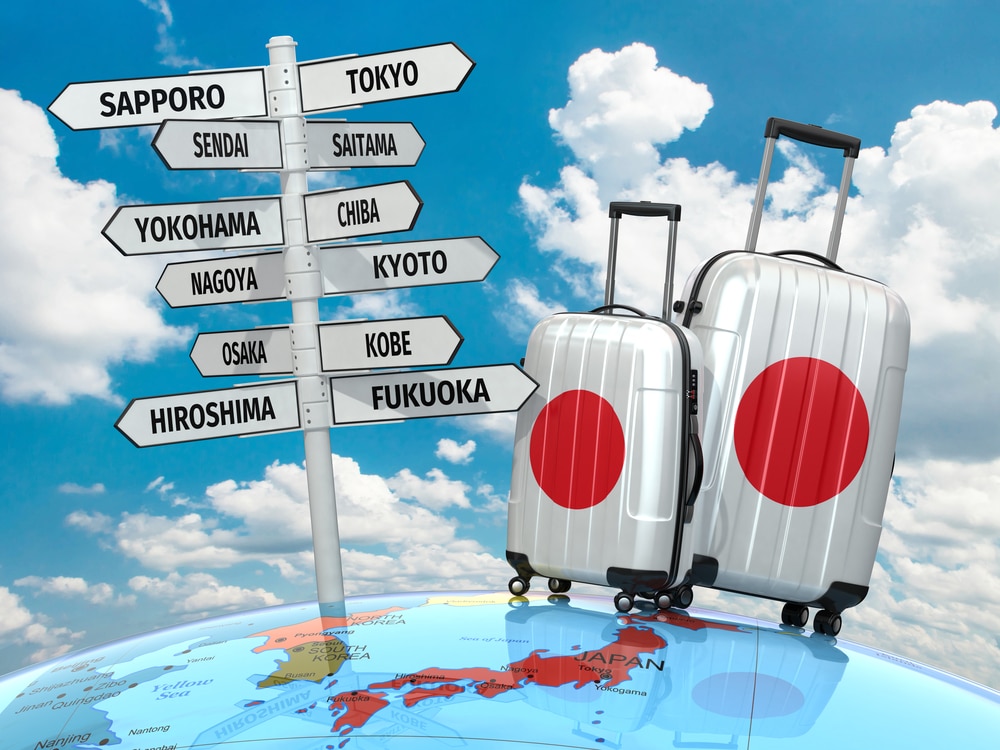
What About Strollers?
You can fold these up and stash them in the overhead rack without a reservation, even if they are over 160cm.
What to Do if Your Bag is Too Big?
If your bag is over 251cm, it can’t go on the train with you, and you will have to use a luggage forwarding service (see below).
What to Do if All the Luggage Seats are Booked?
If you need to travel at a certain time but the luggage spaces are already booked, your best option is to use a luggage forwarding service.
What About Other Trains?
The rules only apply to the three Shinkansen lines named above.
If you’re travelling by bullet train elsewhere in Japan or on another type of train like the Narita Express, Limited Express trains or local trains, then you can put your luggage anywhere there is storage space without a reservation.
It’s generally a good idea to avoid travelling in rush hour on commuter trains with lots of luggage, though as space is tight.
A luggage forwarding service is a service that will send your luggage to your next hotel for you.
Your hotel can usually organise this for you, or you can book it yourself. Yamato is one of the main companies ( see their webpage here ).
If you want your luggage to arrive the same day, you’ll need to check that this is available and take it to a special counter (usually in train stations or airports; a full list from Yamato is here ).
If you have it picked up at your hotel, or you drop it off at one of the collection points (usually a convenience store), then it will usually arrive the next day, maybe the day after if it’s going from one end of Japan to the other, so you should have a small bag of essentials with you.
The cost varies by the case size. I paid between 1900 and 2100 yen for a cabin-sized case on my last trip.
A case of over 200cm can’t be sent at all. Although, I just checked the listing for extra large luggage in Walmart, and it’s unlikely you’ll be carrying a suitcase that big anyway.
I used the service a lot on my last trip. I sent it from Nagoya to Osaka, Osaka to Sendai, and Sendai to Tokyo, and it worked perfectly. When we had an overnight stop in between our two hotels, the luggage was always waiting for us when we checked in, on the Sendai sector, where we went direct, it arrived the next afternoon.
It’s how most Japanese people travel, and the system is safe and very organised. See more tips for using luggage shipping in our post on the service.
So, there you go. An explanation of the current rules about taking your bags on the bullet train. If you do have any questions, why not join our Facebook Group and ask them there?
If you’re still a bit confused about using trains in Japan, we have a couple of posts that might help you out.
One of the most common questions asked is if you need a Japan Rail Pass when you’re basing yourself in Tokyo – and so, we tried to explain it simply.
We also have a post on how to buy bullet train tickets in Japan – and whether you need to buy them in advance.
If you’re travelling further afield, here’s our post on how to tell whether the Japan Rail Pass is worth it for your trip – including comparing it to things like flying or driving a car. See our Rail Pass analysis here.
And if you already have a Rail Pass but are a bit confused about how exactly you use it, then look at this post, which goes through the logistics of using a Japan Rail Pass.

Who Writes This Blog?
My name is Helen Foster, and I’m a journalist and author. My travel articles have appeared in publications including The Australian, RAC Horizons, Jetstar Magazine, Sainsbury’s Magazine, and more.
I’ve traveled to Japan five times before- solo and with my partner – and I’ve just returned from trip six in June 2023. So, everything here is pretty up to date.
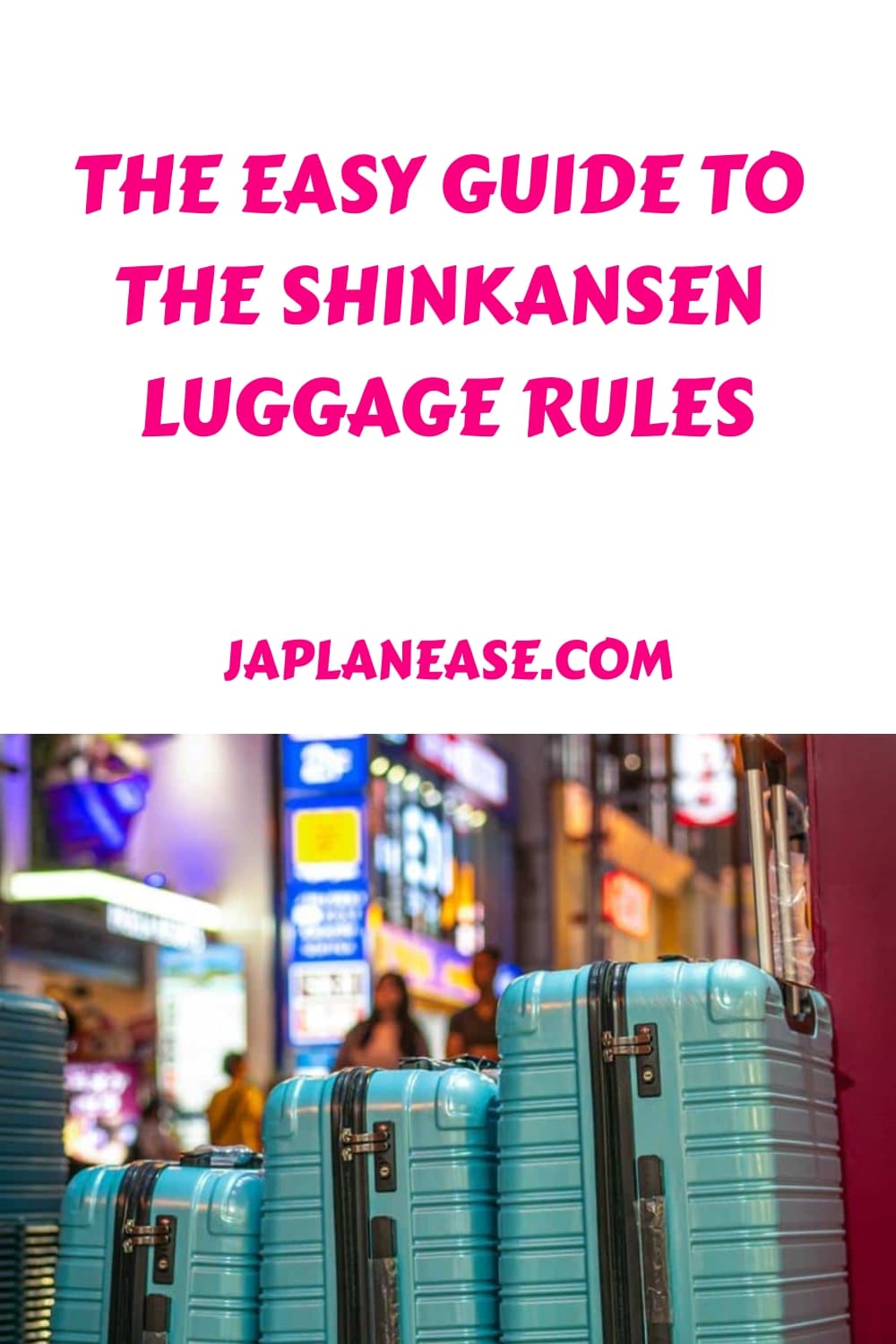
Traveling with Luggage in Japan
Published by accessible-japan on november 21, 2015 november 21, 2015.
Hopping on a train can be one of the best ways to explore Japan. Thanks to the great infrastructure and the amazing railway network of the country, traveling by train is both efficient and fast. However, most Japan trains don’t provide much space for luggage. Though the accessibility situation has improved recently, bulky suitcases are still not recommended if you’re planning to travel by train around Japan. Urban and long-distance trains (except the airport ones) have little to no space for luggage, and shinkansen trains offer only small overhead shelves.
The good news is that Japan offers a wide range of options when it comes to transporting your bags, which means you don’t have to worry about crowded trains or try to fit all of your essentials into a single suitcase. Express delivery services, known as Takuhaibin , are an extremely convenient ways to send your luggage, as well as various parcels or goods, nationwide. Delivery is usually within 24-hour (for shorter distances, you can even expect your bags to be delivered on the same day) and the costs are absolutely affordable. Takuhaibin services have proven invaluable to tourists with lots of luggage, as it enables them to send their bags from the airport to the hotel or even between hotels and avoid having to haul their bulky suitcases in the crowded Japanese trains.
The price for same-day delivery of your luggage from the Kyoto Station counter to your hotel (and various hotels across the region) can be less than ¥1,000 yen per piece, and the same service costs only as much as ¥1,500 in Tokyo. You can even specify the date and time you want your luggage to be delivered, if the next-day or same-day delivery options don’t work or you.
Additionally, if you just just want to leave your suitcase temporarily, you can store your luggage in one of the storage counters, found at the airport for around ¥500-1,000 per day, depending on the size of your bags.
Speaking with a Pilot from Avatar Robot Cafe DAWN Meet a remote pilot from Avatar Robot Cafe DAWN, working from home to change society’s view of people with disabilities and isolation – and take your order!
Read more…

Have a Question? Ask us on Tabifolk

Navigating Japan Trains with Luggage : Rules, Tips and How to Avoid Fines
Hey there, welcome to Japan – land of the rising sun and super-duper efficient public transport. We know you’re pumped to go on some epic adventures, but before you do, let’s talk luggage.
So, here’s the deal – trains and bullet trains are the way to go when it comes to exploring Japan, and lucky for you, they’re a very economical transportation mode. But, you gotta follow the rules when it comes to luggage.
I will give you all the juicy deets on how to navigate and store your luggage on Japan Rail trains and shinkansen, stress-free. So, buckle up buttercup, and let’s get started!
Roll Your Clothes
Important note, early boarding, be mindful and respectful with your luggage on trains, 1 . understanding luggage size and weight restrictions.
Japan Railways Group, which is the company operating the largest train network in Japan, has some pretty strict luggage rules, so make sure you’re in the know before you go.

Now, I know you’re dying to bring your entire wardrobe with you, but trust me, it’s not worth the hassle. Here are the allowed baggage sizes onboard :
- Regular luggage : maximum size of 160cm (that’s Length + Width + Height) and maximum weight of 30kg
- Oversized luggage : any luggage with total size (Length + Width + Height) between 161 – 250 cm and maximum weight of 30 Kg
- Any luggage over than 250 cm in total size is not allowed on the trains.
If caught onboard with any luggage with the total dimensions over 250 cm, you will be fined and removed from the train at the next station.
In this case, you must use a luggage forwarding service to have your suitcases delivered to your destination instead. Read all you need to know about Yamato Transport luggage forwarding service and the how-to here.
2 . Packing Strategically for Train Travel
Use compact-sized luggage.
Let me tell you a secret to make your train journey in Japan a breeze – compact luggage is going to be your new best friend, especially if you plan to make your way to several areas across Japan!
- Yup, you heard it right. Opt for smaller and lighter suitcases or backpacks that fit within size limits, and you will be able to navigate through crowded trains like a ninja.
- Trust me, you don’t want to be that person sweating bullets and struggling to drag a huge suitcase through narrow train aisles or up a long staircase (which is about 95% of staircases in Japan), while everyone else is giving you the death stare.

- If you want to be extra organized, go for luggage with multiple compartments and pockets . You don’t want to be that person holding up the line while rummaging through your bag for your passport.
- And let’s not forget about choosing luggage with sturdy wheels and retractable handles . These will help you glide through the crowded train stations like you’re on a magic carpet ride, not like you’re dragging a dead body.
- Last but not least, pack smartly . Prioritize the essentials , and leave room for souvenirs . Because Japan has some of the coolest stuff you’ll want to bring back home, and trust me, you are going to want to bring so many cool things home with you.
- And don’t stress about forgetting something because Japan’s got your back with shops and convenience stores everywhere. You can always buy awesome new clothes and gadgets if needed.
Pack Essentials in a Day Bag
When you’re taking a ride on those Japanese trains, having a well-packed day bag is an absolute game-changer. You can stash your luggage away in a designated area or on the overhead racks, but having your essentials in a small backpack within reach is key to a comfortable journey.
- So, what should you pack in your trusty day bag? Well, a change of clothes, important documents, your phone and power bank, purse or wallet, tissue papers, and any medicine you need are all must-haves. Oh, and make sure it is a lightweight and foldable day bag that can fit under your seat or in the overhead racks. You don’t want to be lugging around a massive backpack on the train.

- Also don’t forget to bring along a reusable water bottle and some snacks. These goodies will keep you hydrated and energized on your journey.
Another secret weapon for efficient packing is the art of rolling your clothes. This technique not only saves space but also keeps your clothes wrinkle-free. That means you’ll arrive at your destination looking fresh and fabulous!
- So, how do you do it? Lay your clothes flat and start rolling them up tightly from one end to the other. Roll each item individually, which makes it easier to organize your bag and save even more space. Or you can also use packing cubes or compression bags as well.
- The best part? When you roll your clothes, you can see your entire wardrobe at a glance, and that means no more digging through layers of folded clothes to find what you need.
- In addition, if you’re moving around a lot during your trip , rolling clothes makes it a breeze to unpack and repack quickly.
3 . Storing Luggage on Japan Rail Trains and Shinkansen
First, let’s look at this awesome table I made for you, stating luggage size, and where you should place your luggage once boarding the train.
Overhead Storage Racks
The overhead storage on Japan Rail trains or Shinkansen not only helps keep your smaller carry-on bags within reach, but it also frees up space for you to stretch your legs and enjoy the ride.
- Now, before you go stuffing your bag up there, let’s talk about some guidelines. First off, size and weight matter! Make sure your luggage isn’t too big or heavy (the rules say maximum dimension is 160 cm and maximum weight is 30 Kg ), and that it fits snuggly in the overhead rack without blocking the aisle or inconveniencing other passengers.
- Also, be a good neighbor and avoid putting bulky items or oversized bags (from 160 – 250 cm in total dimensions) in the overhead storage. Trust me, your fellow travelers will thank you for it.

- And hey, to prevent any mid-journey surprises, make sure your bag is securely placed , pushed all the way in the rack, and won’t go flying around during sudden stops or turns.
- Last but not least, remember that sharing is caring! Be mindful of others and refrain from rummaging through your bag while the train is moving. We don’t want any accidental spills or bumps.
By utilizing the overhead storage racks wisely, you can keep your bags easily accessible and still ensure a comfortable and hassle-free journey on Japan Rail trains and Shinkansen.
Designated Large Luggage Storage Area
For larger oversized luggage that exceeds the size limits for overhead storage ( 161 – 250 cm in total dimensions ), designated luggage areas within the train cars offer a convenient solution.
- These areas are typically located near the entrance or at the ends of each train cars, providing space to store your checked bags or larger suitcases.
- When boarding the train, be mindful of other passengers and try to find a luggage area that is not already crowded. If the available space is limited, consider asking for assistance from train station staff to find a suitable spot for your luggage.
- As you place your bags in the designated areas, make sure they are positioned securely and do not obstruct pathways or emergency exits.
- There are luggage locks with passcode provided which you could use to safely secure your luggage in place. Just remember to keep the keys or combination easily accessible for when you need to retrieve your belongings.
- Remember that if you oversized suitcase is over 250 cm in total dimensions (Length + Width + Height), you are not allowed to bring it onto the trains. If you see yourself in this situation, avoid the headaches and just use a luggage forwarding service to deliver it straight to the final destination. The cost is inexpensive for the convenience it provides. For further info and how to easily use the service, check out my Yamato Transport post here.
Starting from May 2020, according to the latest official JR Company policies (see the full policies here ), for many bullet trains, you must now reserve a seat and a storage space for your oversized bags if you are bringing them onto the train.
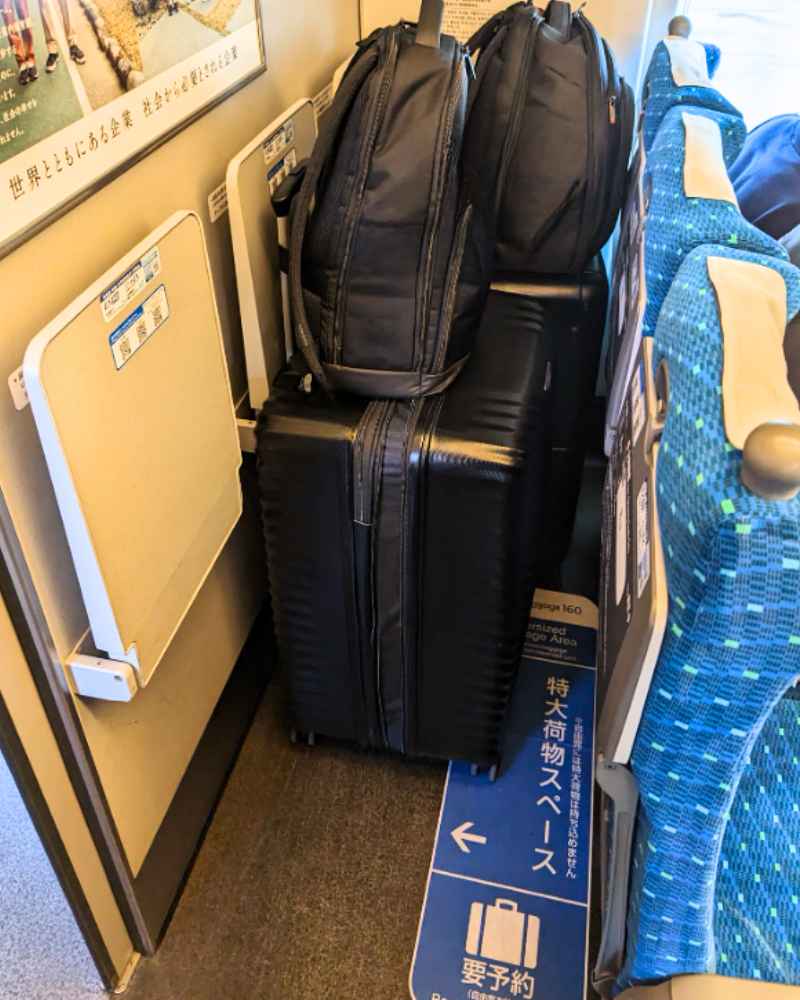
See my simplified summary table regarding the baggage requirements according to total dimensions, which one applies to you, and where to store them correctly in the train car :
To read more about how to easily reserve a storage space for oversized bags, check out my ’12 Ultimate Tips for Taking Tokyo’s Public Transport With Ease’ post (Tip # 6)
If you’re planning on taking the train during busy holiday season and worry about the luggage storage situation, try to get there early!
If you’re one of the first ones lining up for the trains, you’ll have your pick of the luggage space, ahead of the crowds. No more awkwardly trying to shove your bag into a packed overhead bin!
4 . Additional Tips for Luggage on JR Trains and Shinkansen
Use luggage delivery service.
Carrying multiple bags during your journey in Japan can be a real pain in the butt. But fear not, my friend! Instead of lugging your heavy suitcases everywhere, you can totally rock your travel game by using luggage delivery services.
- This awesome service is available at major train stations, airports, and convenience stores all over Japan, and even at most hotels. And they allow you to send your bags straight to your destination. No more dragging heavy luggage around and into crowded trains!
- All you gotta do is find the Luggage Delivery Service counter at the train station, airport, or go to your hotel concierge or a convenience store nearby. Give them your destination address and contact details, and voila! They’ll take care of all paperworks and transporting your bags safely and efficiently for you. Easy peasy!

- This is especially awesome if you’re planning to visit multiple cities or if you’ve got a tight schedule. It lets you travel light and enjoy the convenience of having your bags waiting for you at your next stop.
- Just remember, the delivery cost may vary depending on the size, weight, and distance of the delivery, so it’s always a good idea to ask about the fees beforehand.
- To get familiarized with everything you need to know about luggage delivery service using Yamato Transport (the best company) for your travel needs, delivery cost, how long it takes to arrive, etc., check out my “Yamato’s Luggage Transfer Service : Travel Hands-Free and Heavy-Luggage-Free in Japan” post.
It’s crucial to remember the highly valued Japanese culture of mindfulness and respect. That means being aware of your luggage and how it may impact your fellow passengers.
- First, seats are for sitting, not for storing your bags! Especially during rush hour, when everyone’s squeezing onto the train, please don’t hog the seats. Instead, make use of the luggage areas or overhead racks if your bag fits the size requirements.
- Second, don’t be that person who blocks the aisle with their huge suitcase ! Make sure your bags are out of the way and not causing any traffic congestion in the train.
- If you place your large luggage in the relatively wide legroom area in front of your seat, make sure to leave enough room for the person in front of you to recline their seat back
- Plus, if you see someone struggling with their luggage , offer a helping hand! It’s all about creating a happy and harmonious travel environment.
- If you did not reserve the oversized luggage seat and the luggage space accompanying it in advance , do not use that space to store your luggage. That seat is a reservation-only space. If needing a space, look for a train attendant to help you with storing your luggage instead.
With these tips, you will be able to ride the train with luggage like a boss, totally prepared and free from any worries. Happy travels!
If you have any questions or just want to share your own travel stories, I’d love to hear from you! Please feel free to reach out to me at [email protected] , and let’s chat. Thank you for taking the time to read my blog post, and happy travels!
Post You Might be Interested In
– Wonder what awesome tips you could get in order to hit the ground running and navigate Japan smoothly and stress-free, with or without a JR Pass ? Read my “12 Ultimate Tips for Taking Tokyo’s Public Transport With Ease” post here .
– Wonder what the JR Pass everyone talks about all the time is? More importantly, if getting a JR Pass would be a good idea and save you a lot of money on transportation costs in your trip? Get concise and practical answers here in my “ Japan Rail Pass : Answers to All Your Questions, and Is It Worth Buying? “ post.
– Interested in knowing more about the all-time favorite and super awesome Pasmo and Suica IC cards? Read my “Stress-Free Tokyo Travel with IC Cards : Everything You Need to Know” post here.
– Do you need an easy, convenient, and economical way to get from Narita International Airport to central Tokyo with luggages ? Read my “Airport Limousine Bus – The Convenient Way to Get from Narita Airport to Central Tokyo” post here. Going to Haneda airport instead? Read this post .
– Do you need a fast, easy, and economical way to get from Narita International Airport to central Tokyo ? Read my “ The Narita Express (N’EX) : Fast and Easy Travel from Airport to Tokyo” post here.
And much more – Check out all of my posts here on the Main page .
Similar Posts

Taking the Airport Limousine Bus to/from Narita or Haneda Airport to Tokyo – All your Questions Answered

12 Must-Know Things About the Narita Express Train Before Booking Your Ticket

Japan Budget Travel : Getting from Narita Airport to Tokyo for Cheap Using Keisei Train Instead of Narita Express

The Narita Express (N’EX) : Fast and Easy Travel from Airport to Tokyo

12 Ultimate Tips for Taking Tokyo’s Public Transport With Ease

Airport Limousine Bus – The Convenient Way to Get from Narita Airport to Central Tokyo
Luggage Free Travel Japan
Is luggage free travel in japan possible.
Yes, luggage free travel in Japan is possible, and is super convenient in certain situations.
What is Luggage Free Travel?
The system of shipping goods, including luggage, from door to door was first set up by the Yamato Transport company back in the 1970s. In Japanese it’s known as either Takuhaibin (宅配便), or Takkyuubin (宅急便), and it basically translates to express home delivery .
Image by Yamato Transport Co., Ltd.
Luggage free travel in Japan is an easy way to send your larger suitcases from hotel to hotel, hotel to airport, or airport to hotel. The service time is based on distance and the price is based on size and distance.
Delivery time ranges from same-day to 2 days and costs between $15 to $30 USD per bag.
How Do I Travel Luggage Free?
There are kiosks at all the international airports where you can drop off your luggage, fill out some paperwork, pay, and be on your way. If you drop your bags off before a certain time, and your hotel is within a specified delivery zone, you can get your bags that evening.
If you’re staying at a hotel, you can ask the concierge to send your bags to your next destination. They’ll measure your bags, fill out the paperwork and collect payment. It takes about a half hour to complete the process, so make sure you budget your time accordingly.
Photo by Tokumeigakarinoaoshima / CC BY-NC-SA 2.0
This is usually an overnight service, since most tourists travel long distances between hotels. That means you will need an overnight bag with your toiletries, pajamas, underwear, and a change of clothes for the following day.
Staying at an Airbnb adds a little bit of a challenge to this process. Since Airbnbs don’t have a concierge service, you will need to either locate a transport company’s service center or find a convenience store that provides the Takuhaibin service.
The main players in the travel luggage free game are Yamato Transport , Sagawa Express , and JTBCorp.
Is It Worth Traveling Luggage Free?
Not all the time.
I know, there are dozens of websites out there touting about how great it is and your bags are waiting for you at your next hotel after a day of sightseeing. While same-day deliveries may be possible for short distances, delivery is usually the next day.
Becki picking up luggage at hotel
When Should I Use This Service?
While this service isn’t a full proof solution, it is very convenient if you’re willing to go a night without your suitcase.
As a tour operator and a veteran Japan traveler, here are my suggestions of when to use this service.
Visiting Mt. Fuji – Most of the popular areas for viewing Mt. Fuji require multiple modes of transportation and are difficult to navigate with luggage.
Visiting Koyasan – Like Mt. Fuji, Koyasan is a journey full of packed trains, cable cars, and buses. As you can imagine, heaving large suitcases isn’t a pleasurable experience.
Staying at a Ryokan – Traditionally, these inns accommodated pilgrims and were set up to host guests for just one night. Most Japanese follow this tradition and only stay one night. So it’s not necessary to take a suitcase for just one night. Also, ryokan have traditional tatami flooring, and rolling or dragging large suitcases across them can cause significant damage.
Staying 2 or More Nights – If you don’t want to travel with your luggage to the next hotel , then this service will only work if you’re staying 2 or more nights. Remember, you more than likely won’t get your suitcase back until the following evening.
There are times that we use this service during our small group tours. And in all the years we’ve been running tours, it’s always been reliable. I don’t think it’s the ultimate solution to luggage free travel in Japan, but it does help.
Want a Stress Free Trip?
Learn more about how to travel Japan like a pro with our best selling Itinerary Planning Course .
Disclaimer: There are affiliate links in this article. This means that if you make a purchase after clicking on these links, we may receive a small commission at no extra cost to you. We have no association with the companies or the products reviewed. These are our own opinions of top travel products.
You might also like

Becki and Shawn Japan Travel Specialists
Hi, we’re Becki and Shawn! We love Japan and are truly passionate about Japan and Japan travel.
We’ve lived, worked, and traveled in Japan for 20+ years, so we know where to go, what to see, and how to get there. Join us in Japan for an adventure of a lifetime!
Accreditations
- Japan Tours
- Destinations
- Experiences
- Travel Tips
Reviews & Recommendations
This site uses cookies. By continuing to browse the site, you are agreeing to our use of cookies.
Cookie and Privacy Settings
We may request cookies to be set on your device. We use cookies to let us know when you visit our websites, how you interact with us, to enrich your user experience, and to customize your relationship with our website.
Click on the different category headings to find out more. You can also change some of your preferences. Note that blocking some types of cookies may impact your experience on our websites and the services we are able to offer.
These cookies are strictly necessary to provide you with services available through our website and to use some of its features.
Because these cookies are strictly necessary to deliver the website, refuseing them will have impact how our site functions. You always can block or delete cookies by changing your browser settings and force blocking all cookies on this website. But this will always prompt you to accept/refuse cookies when revisiting our site.
We fully respect if you want to refuse cookies but to avoid asking you again and again kindly allow us to store a cookie for that. You are free to opt out any time or opt in for other cookies to get a better experience. If you refuse cookies we will remove all set cookies in our domain.
We provide you with a list of stored cookies on your computer in our domain so you can check what we stored. Due to security reasons we are not able to show or modify cookies from other domains. You can check these in your browser security settings.
We also use different external services like Google Webfonts, Google Maps, and external Video providers. Since these providers may collect personal data like your IP address we allow you to block them here. Please be aware that this might heavily reduce the functionality and appearance of our site. Changes will take effect once you reload the page.
Google Webfont Settings:
Google Map Settings:
Google reCaptcha Settings:
Vimeo and Youtube video embeds:
You can read about our cookies and privacy settings in detail on our Privacy Policy Page.
Travel Japan Like a Pro
" * " indicates required fields
Everything You Wondered About Japan
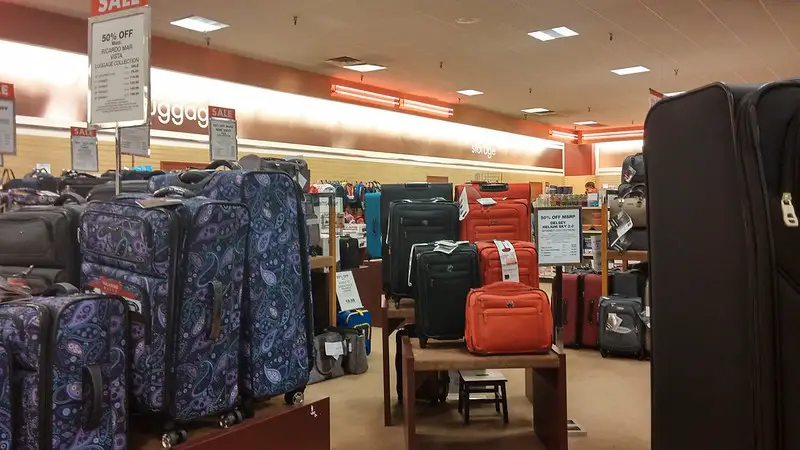
Best Japanese Luggage Brands: Our Top Picks
Japan is known for its best in class manufacturing processes. This extends to the luggage industry, too. Here are the top 10 brands. They make some of the best luggage bags in the world.
Legend Walker
Ace luggage, solo-tourist, endo luggage, mspc product, siffler (shifure).
While some prefer Japanese luggage for the great quality, some prefer it so that they can add yet another Japanese product to their collection. These luggage bags have innovative designs. Also, they are known for their superior quality. Check out the best products from these brands below.
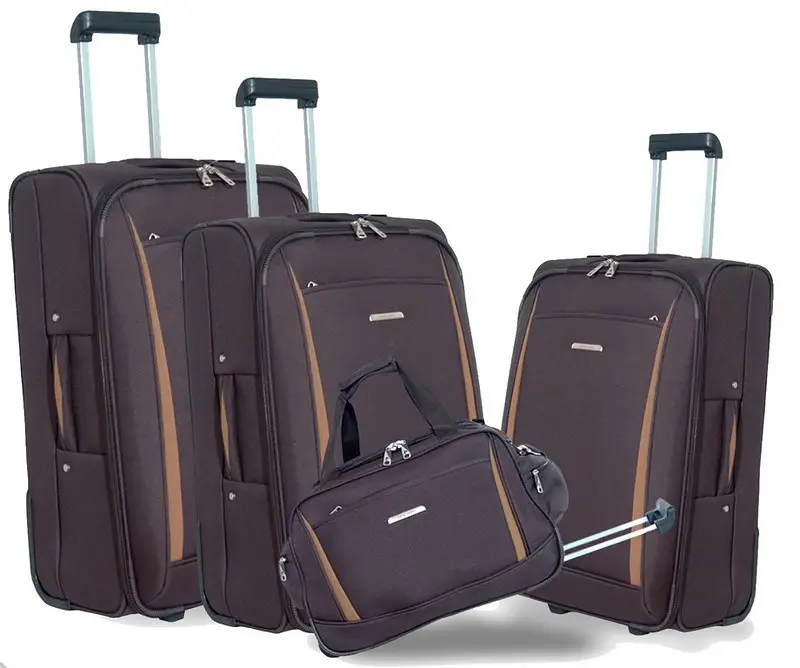
Lojel was founded in Japan by Chih Chang Chiang . It was Chiang’s travels that gave him the vision to make the brand global . The brand is inspired by real journeys. It adheres to strict quality standards . Also, the designs are practical and functional. The brand keeps up with the changing travel needs.
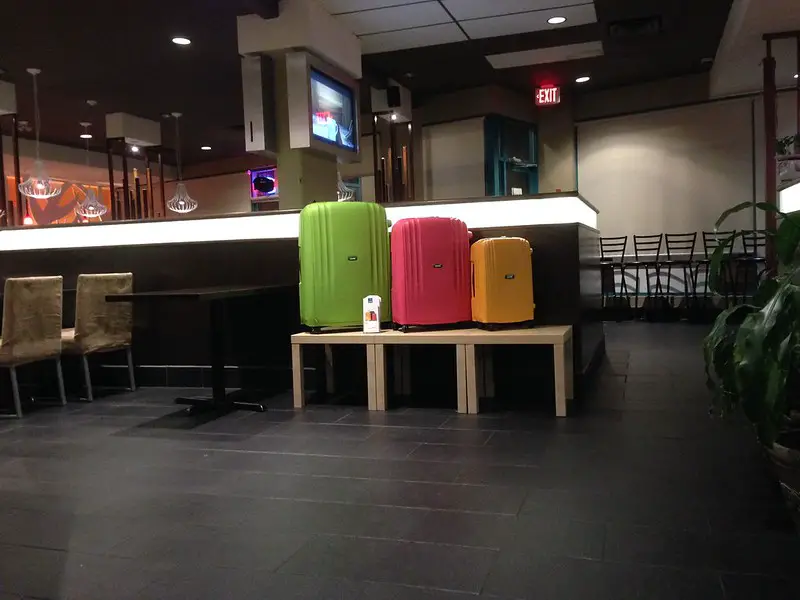
Lojel is known for its exceptional craftsmanship . It also is famous for its designs. The luggage bags have a standardized, modular design. This lets the users easily repair the bags. This feature is very practical for people who are on the go! The brand hopes to make travel better for its customers. The brand also aims to reduce wastage by adopting sustainable practices .
- Founded – 1989
- Website – https://www.lojel.com/
- Recommended product – Lojel Cubo Fit
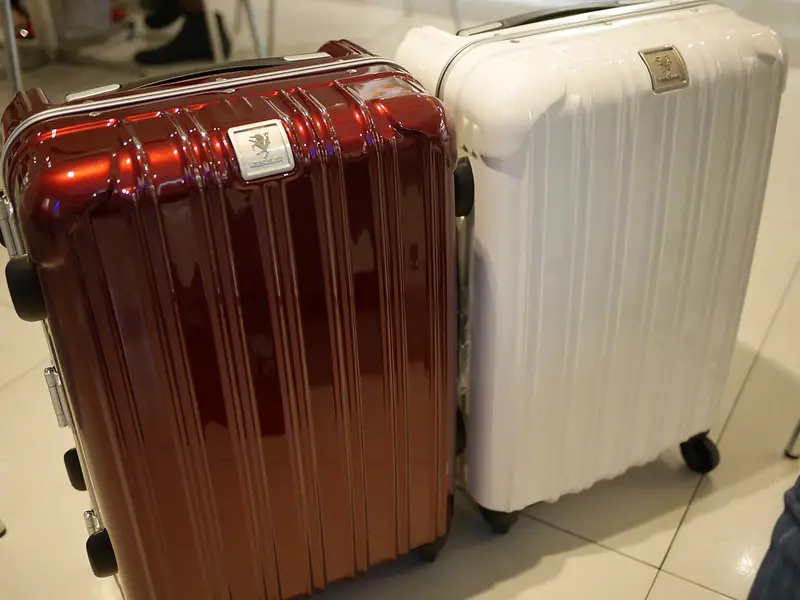
This is your go-to brand for premium luggage bags. It focuses on comfort for its customers. However, at the same time, it upholds the quality. It has intelligent , functional designs. They make the hard case as well as soft case travel bags. They also make other travel accessories. The brand provides great service to its customers.

This Japanese brand has also made its presence in other Asian Countries. They have their outlets in Hong Kong, Korea, Singapore, Taiwan , and other countries. The brand is very popular for its awesome luggage bags. It is almost a style statement to carry a Legend Walker bag on travels.
- Founded – 2002
- Recommended Product – Legend Walker Hardside Luggage 6021Metral Frame
View this post on Instagram ace_collection 🏖 . . 一组被遗忘的照片,现在让他重见天日😉 图中主角 @______jy_____ #aceluggage #summer #acejapan A post shared by Angeline (@jingying.99) on Oct 20, 2019 at 9:44pm PDT
The brand makes superior quality luggage bags. The designs are modern and practical. The bags are high-endurance and durable. These ergonomic brands are made while keeping comfort in mind. It has created its presence in other countries such as China , Singapore , and Malaysia , too.
View this post on Instagram A post shared by ace Japan Luggage (@ace._indonesia) on Jul 29, 2020 at 8:12pm PDT
The brand draws from its experience as well as expertise in manufacturing luggage bags. Its designs are unique and the build is superior . Also, the luggage bags come with famous Japanese quality. The aesthetically pleasing bags are very popular in Japan as well as outside. Broadly, it has two variants – Ace Tokyo and Ace Gene . Ace Tokyo is for comfortable travel. Ace Gene is for business travel.
- Founded – 1940
- Website – https://www.ace-dot.com/english/
- Recommended Product – Ace Washboard-Z
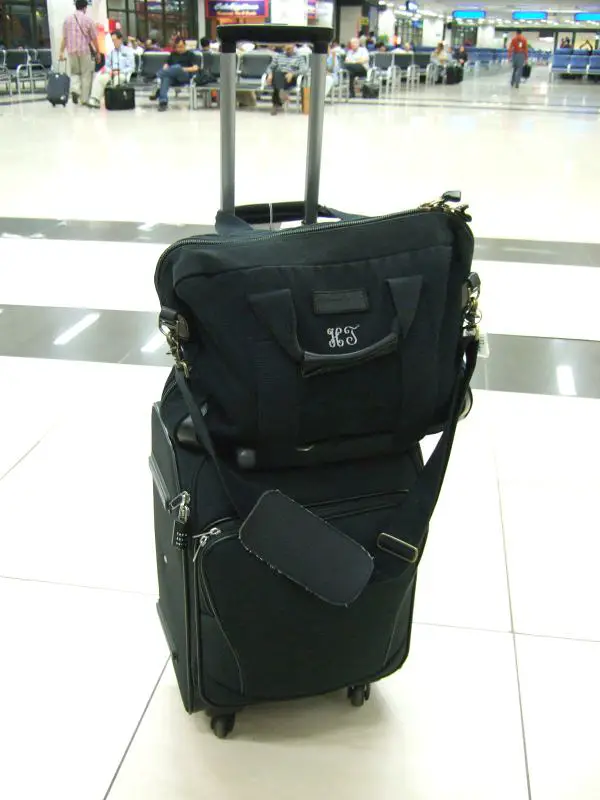
Proteca is a brand developed by Ace. However, it has its own identity for being a brand for quality bags with unmatched designs . The luggage bags go through a three-step test to ensure superior quality. A new material called ‘ Ultra String ‘ is used for making these bags. It’s highly durable and lightweight .
View this post on Instagram A post shared by PROTECA(プロテカ) (@proteca_japan) on Aug 3, 2020 at 2:00am PDT
The hard case luggage bags are made from a polycarbonate shell . It has a sturdy frame, yet has a slim look. The handle of the bag is hollow, reducing the weight of the bag. The result is a lightweight suitcase. Pulling this suitcase along is very easy even if you have long distances to go. The casters and wheels make very little noise when moving. The central locking system lets you lock it with just one touch.
- Website – https://www.proteca.jp/
- Recommended Product – Proteca Brick Lock White Edition
View this post on Instagram A post shared by ヴァリュウ物産株式会社 (ソロツーリスト) (@valueproducts.solotourist) on Feb 18, 2019 at 11:06pm PST
Solo-Tourist has been making quality travel bags for more than three decades now. They are known for their durable bags that can withstand any kind of travel . They make high-quality luggage bags with casters. The brand also makes other travel bags such as large backpacks, Boston bags, and waist-bags. The travel bags with casters are a great choice is you are looking for great quality at an economical price .
- Founded – 1985
- Website – https://www.valueproducts.jp/index.php
- Recommended Product – Solo-Tourist Daypack Carry 15
Yoshida is a famous brand for travel gear. They make high-quality travel gear. They are well-known for their backpacks, waist pouches, and briefcases. However, they also make trolley bags for travel. They bring functionality into their amazing designs . The Porter range of Yoshida has some amazing travel bags.
View this post on Instagram A post shared by PORTER YOSHIDA & Co. OFFICIAL (@porter_yoshida_co.official) on May 10, 2020 at 4:59am PDT
Every stage of manufacturing has strict guidelines. This ensures that the travel bags are highly resilient and durable . The designs are also the strength of these travel bags. The brand uses exceptional Japanese craftsmanship. The compact bags have great utility. They are made keeping in mind the travel needs of the customers.
- Founded – 1935
- Website – https://www.yoshidakaban.com/
- Recommended Product – Porter Time Trolley Bag
View this post on Instagram A post shared by エンドー鞄 (@endo_kaban) on Oct 2, 2019 at 12:52am PDT
Endo Luggage is one of the oldest brands of bags in Japan. Their Frequenter range has sturdy travel bags with wheels. The silent wheel system and the superior build of the bags makes them a popular choice for traveling. The Hokutan range has some cool designs decorated with studs. The company also has Made to Order solutions for its customers. Here, you can select the design, color, and other nuances of your travel bag.
View this post on Instagram A post shared by エンドー鞄 (@endo_kaban) on Jun 4, 2019 at 11:19pm PDT
The company aims to create novel products for their customers. They inspect their products diligently to ensure quality. With showrooms in Toyooka, Tokyo, and Osaka, they try to provide the best buying experience for their customers. The brand continues to use traditional methods in bag manufacturing. But the designs and quality checks have evolved with time. This results in bags that are the perfect combination of traditional and modern.
- Founded – 1824
- Website – https://endokaban.jp/
- Recommended Product – The Hokutan Fiber Studs Carry Case
View this post on Instagram . @mspc_shonan . 【master-piece TROLLEY】 お客様からのご要望も多かったオリジナル ハードキャリーケース。 満を持しての登場です。 . . . #mspc #masterpiece #マスターピース #ハンドメイド #ジャパンメイド #Japan #handmade #神奈川 #湘南 #辻堂 #テラスモール湘南 #ootd #streetstyle #streetphotography #carrybag #trolley #キャリーケース #キャリーバッグ #テラスモール #ギフト #クリスマスギフト #クリスマスプレゼント #ラッピング #ギフトラッピング A post shared by MSPC PRODUCT sort (@mspcproduct_sort) on Dec 20, 2019 at 4:25am PST
MSPC Product has a long history of making amazing travel bags. They make very functional backpacks and travel pouches. They also offer a small range of trolley suitcases. Their 2020 collection of trolley bags combines compact designs and impressive features . The hard shell design is built for durability. It can withstand heat and impact .
The good quality wheels make it easy to pull the bag with you easily. An efficient wheel-locking mechanism helps to prevent the bag from moving when kept on a slope. The black finish has a contemporary feel to it and looks great, too!
- Founded – 1994
- Website – https://mspc-product.com/
- Recommended Product – Master-Piece Trolley Suitcase
View this post on Instagram A post shared by 🦋✨✨りりか🇯🇵Ririka✨✨🦋(母管理) (@kirakira.kirarinrin) on Jul 11, 2020 at 2:22am PDT
Siffler’s Trident range has stylish trolley suitcases. These cleverly designed trolley bags look as if they are made from aluminum. They also have other variants such as Luna Lux , Zero Gra , Eurasia , and Green Works . The insides of the suitcases exude a quiet elegance . There are several small pockets to organize your things perfectly. Individual compartments with zips make it easy to pack small items without the fear of them tumbling around.
Reinforced corners make sure that the bag can withstand impact during traveling without any damage. The suitcases have a double-wheel assembly . It ensures that movement is convenient even when the bag is heavy. It comes in different colors such as silver , titanium , black , and pink gold . This is a range that has sophisticated designs.
- Founded – 2001
- Website – http://www.siffler.com/index.html
- Recommended Product – Siffler Trident S 33l
View this post on Instagram 新しいスーツケース♪ 色々な機能が女性用に考えられていて 中を開けると更にテンションが上がります♪ * 荷造りしなくちゃ*٩(๑❛ᴗ❛๑)۶* #HaNT#HaNTmine#ACE#ハント#エース #スーツケース#キャリーケース #カモミールアイボリー #みつばち A post shared by Mari (@mari__maring) on Jun 25, 2018 at 4:25pm PDT
HaNT stands for ‘Have a Nice Time’ . This is a female-friendly brand that makes beautiful elegant luggage bags. The suitcases have very functional designs. They also come with features to ensure you have very comfortable travel experience.
The interiors are made with different prints and patterns . These colorful interiors are sure to make you feel happy every time you open your bag. The above video shows how an all-women team designs these beautiful suitcases. It also comes with caster covers . These can be put on the wheels like socks. This prevents the floor from getting dirty when you bring the suitcase inside. It also comes with a matching shoe bag !
Not just great luggage bags, Japan has some great brands for backpacks, too! Here’s a lineup of the best brands if you want to flaunt a backpack made in Japan!

A software engineer, entrepreneur, and Japanese culture enthusiast. I travel the world while working from my laptop and try to visit Japan as often as I can. About Eli Civil

You May Also Like

Shiatsu Massage in Japan: The Full Guide

Top 20 Funny Japanese Videos

Top 10 Best Japanese Soccer Players of All Times


Shop by Category
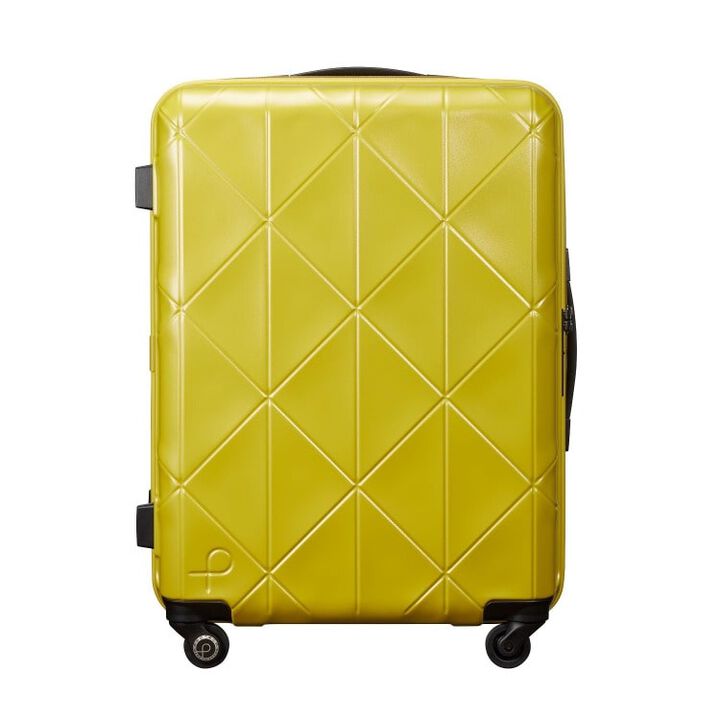
Read Our Story
82 years ago, our journey began. Join us as we continue to evolve.
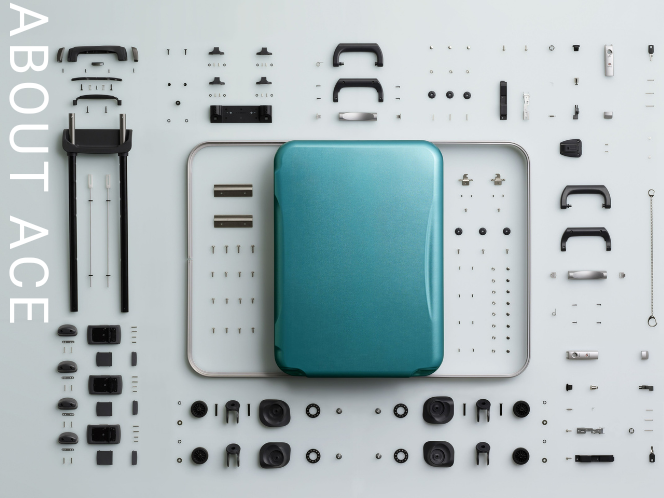
What Our Customers Say
A perfect in flight suitcase especially when I need to carry a laptop. With the front pocket that can easily access to my laptop, I can pass security check smoothly and easily access to my laptop on flight. Not to mention the suitcase itself is so light and the reels are very smooth!
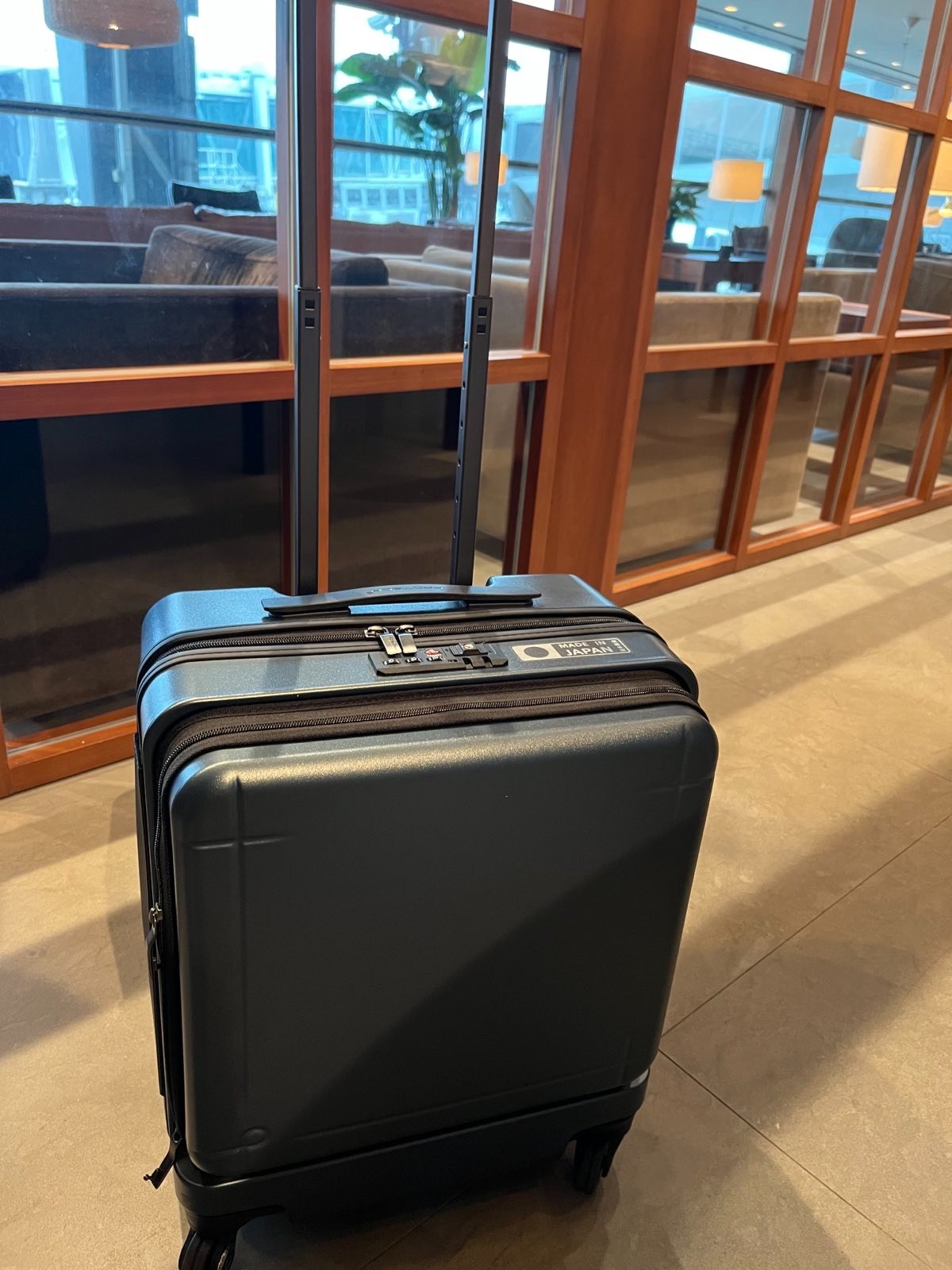
I like the simplicity and design of this bag. There are so many spaces where you can fit everything you needed for work. I'd recommend the bag to anyone who needs to take their mini-office around in their daily business life!
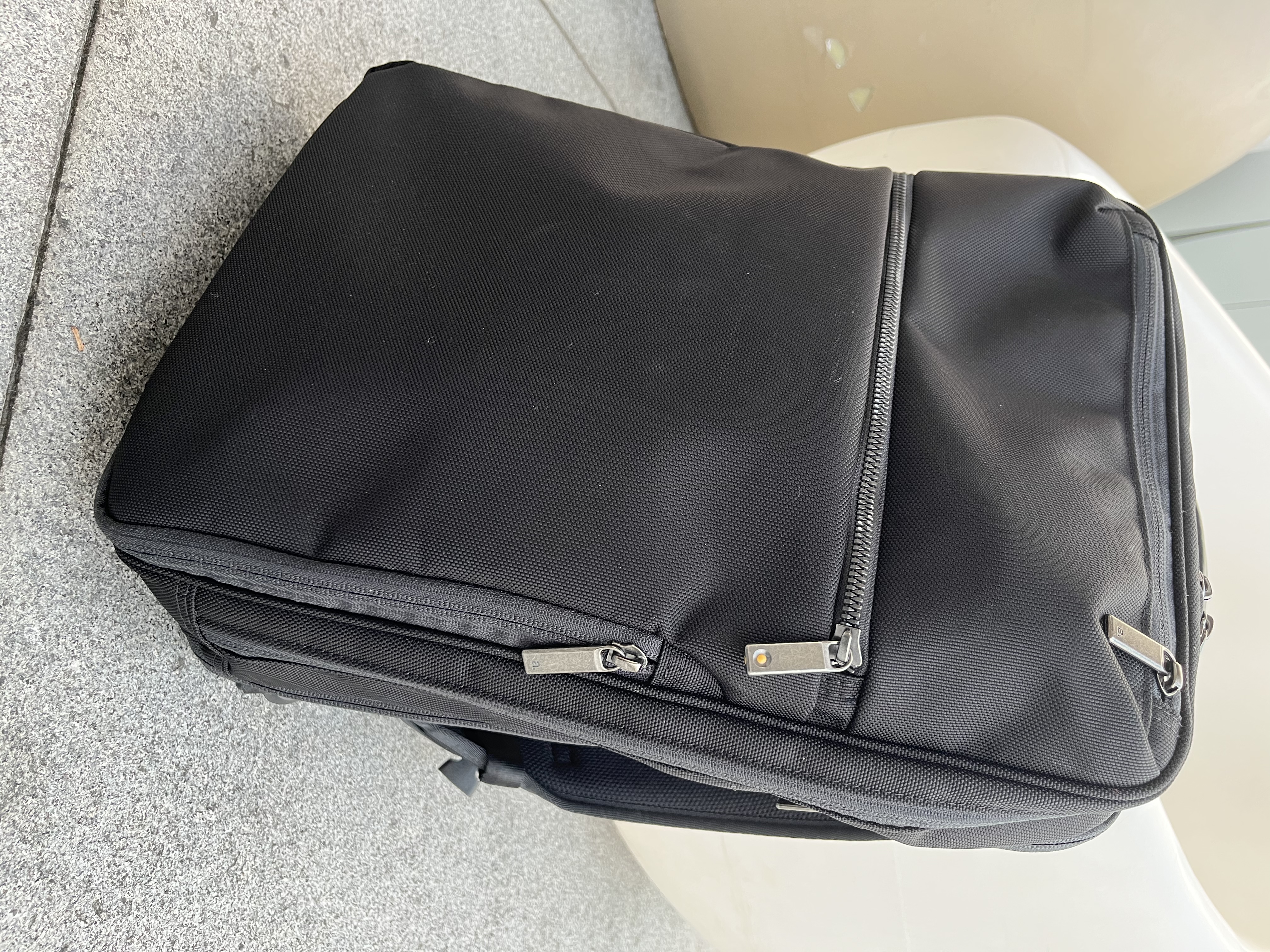
Amazingly designed bag! I was carrying this cute little bag all afternoon packed with 2 laptops, a full water bottle, and all the other life necessities, but it did not feel heavy at all. Magic! It has a place for every little thing so you find what you need right away when on the go. Highly recommended!
United States
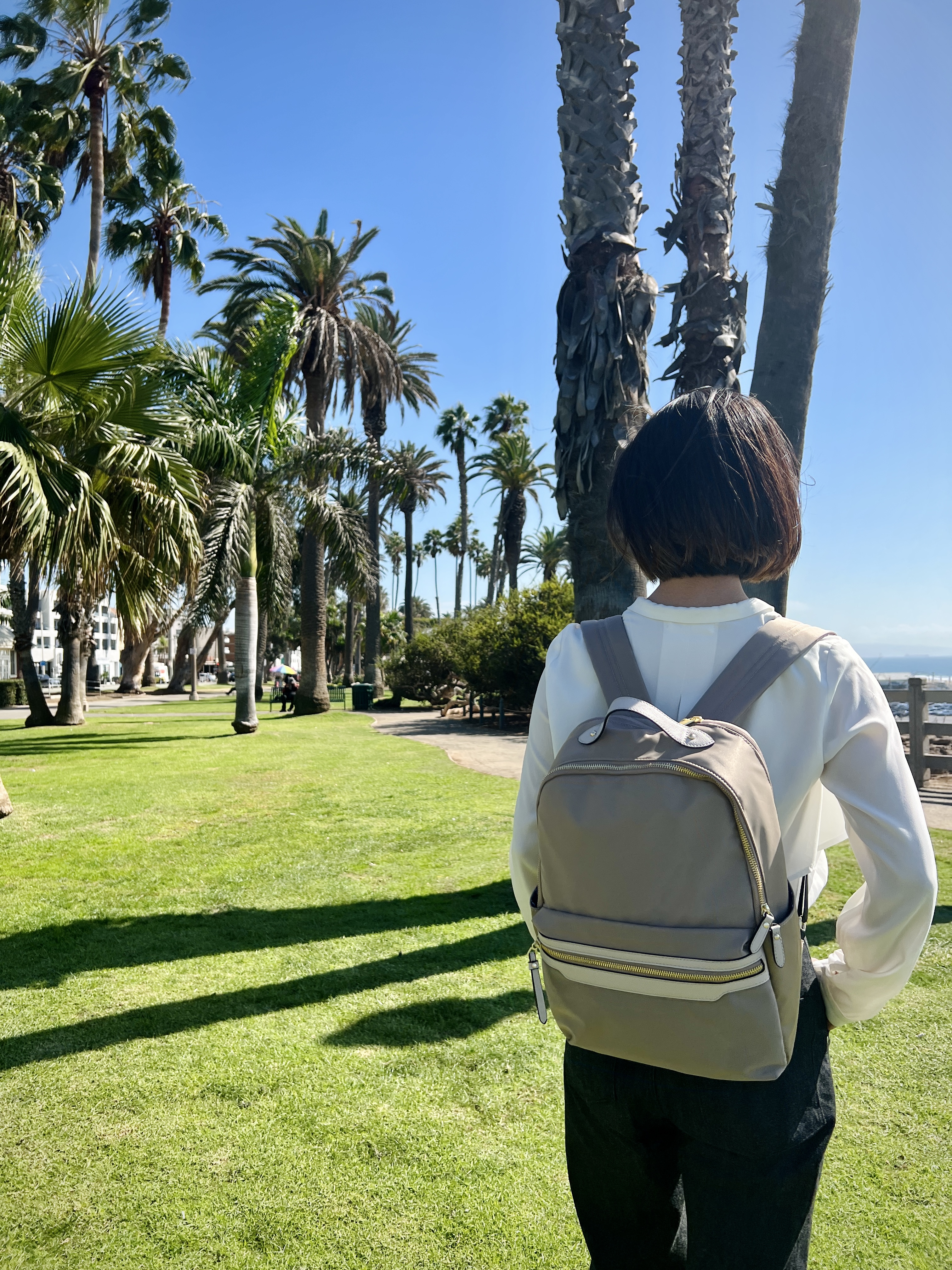
Finding a "made in Japan" suitcase has been almost a bit of an obsession for me and proteca simply ticks all the boxes! It's so light, rolls so smoothly, and looks absolutely classy. I might have to buy more of these and start a little collection!
United Kingdom
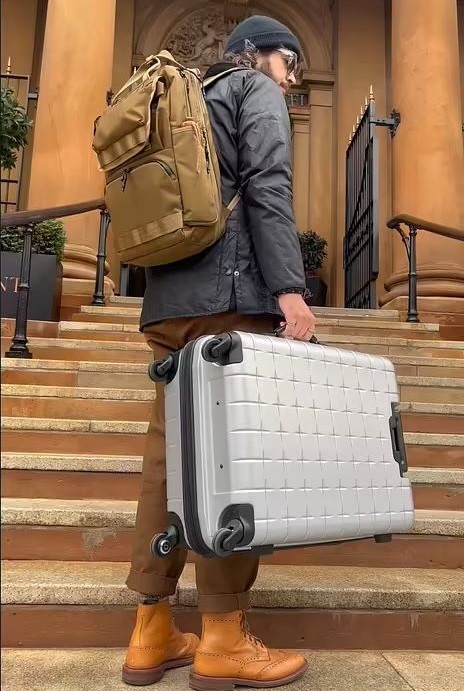
This 'transformer' bag is perfect for both daily and travel backpack. The expanded mode is really universe-eater, I thought that I've put my everything in but I never make it full. The shoulder straps design is perfect. Unlike other backpack that make squishy pad, ACE did a magic with the shape instead to make it comfort.
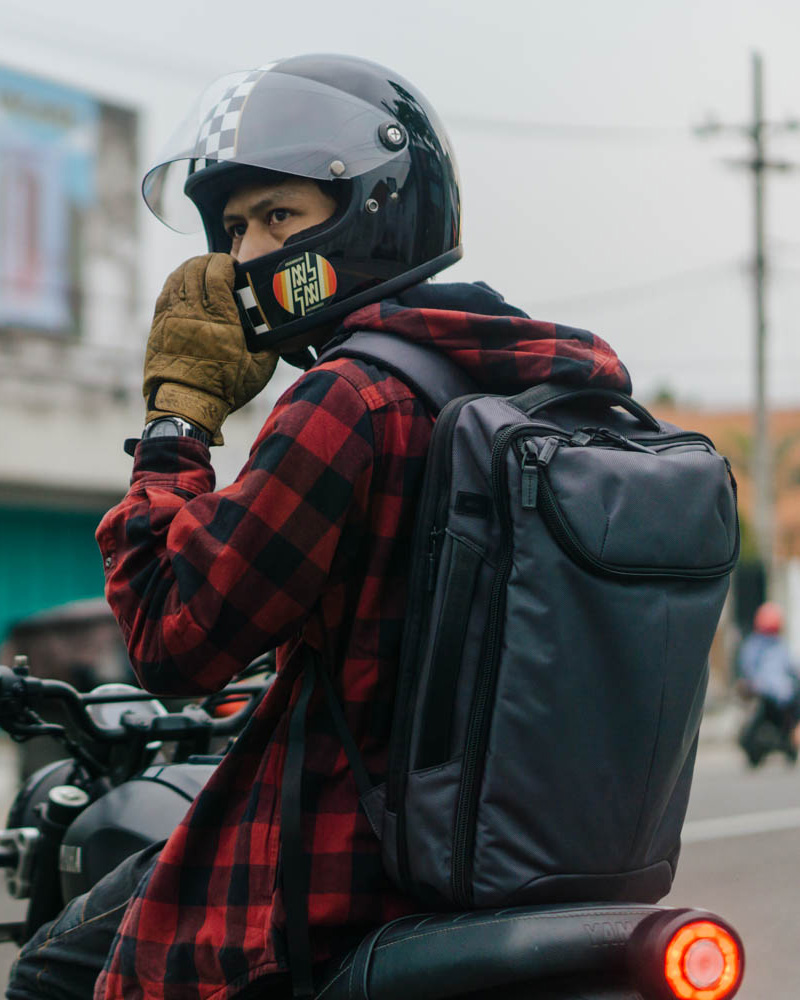
It’s no secret that I really liked FREYA-RUCK2. It was a good bag for girls who don’t want to bring a bulky backpack to the office with a laptop and some cables inside the bag. In addition to that, there are also many zippered pockets inside. It’s very stealthy and great for keeping items like a passport or wallet. Even with all of that stuff inside, it was comfortable and easy for girls to lug around.
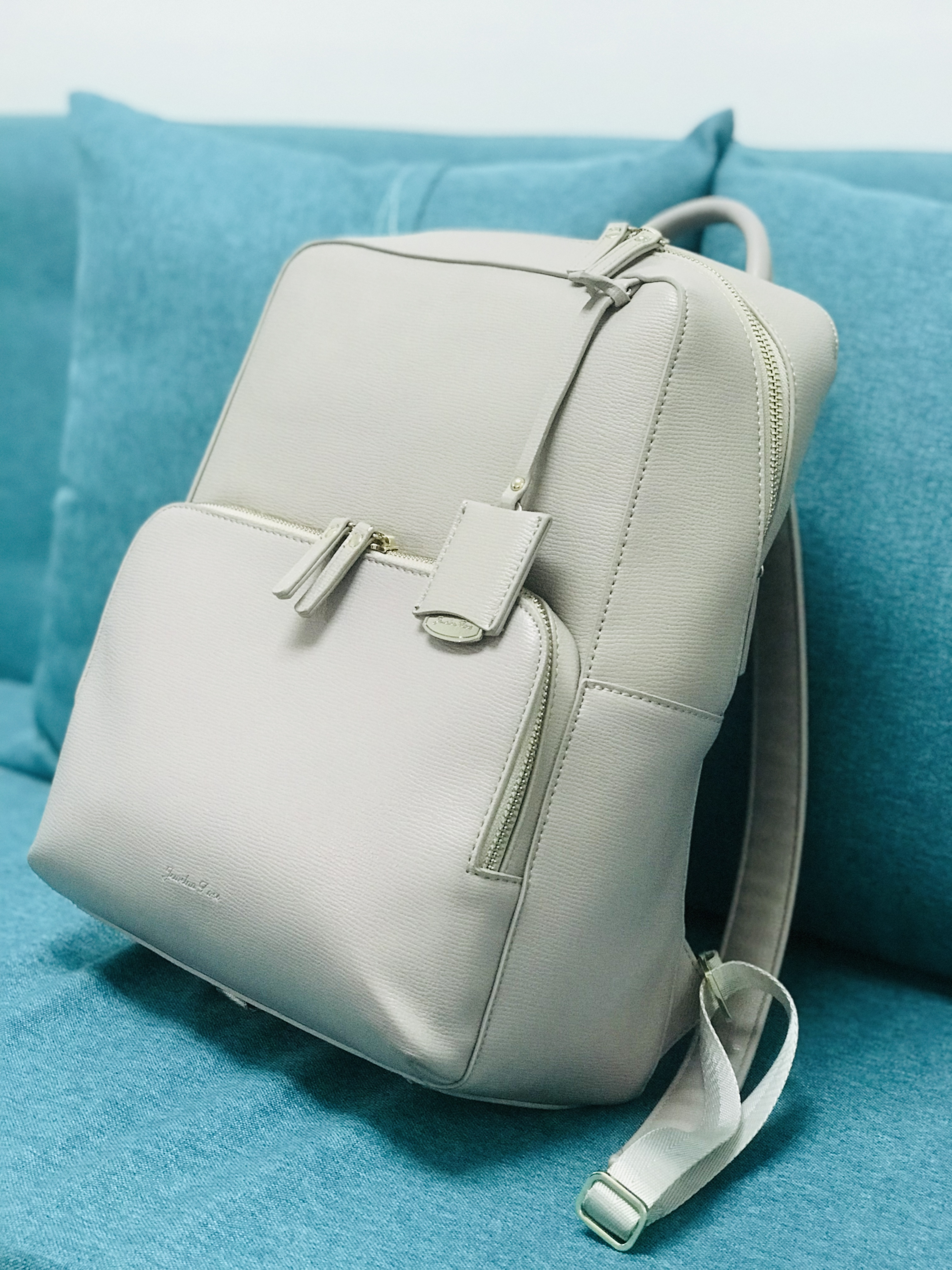
The wheels are incredibly easy to push around in ALL directions, and I love the function that allows me to open up the luggage while it is still standing up (in case you need to just take something in and out quickly without having to plop down on the floor to go through the entire luggage in public). Lastly, I really do enjoy the stop button which allows me to stop worrying about the luggage wheeling off somewhere. All of these functions (super light, functional design, ease of use) will allow your travel day to be much less stressful!
South Korea
Upcycling Mazda's Car Bumpers into Suitcases
Proteca, a Japanese travel luggage brand, released a suitcase called "Maxpass RI" that reuses car bumpers from Mazda Motor Corporation.
Sara Takanashi's Sponsorship Agreement with ACE | ACE Blog
Ace will provide various products, including suitcases made in Hokkaido, her hometown.
Understanding Luggage Bag Sizes & Capacities | ACE Blog
There is no doubt that the stated capacity can fit because we measure by actually putting pellets (resin particles) into the bag.
Expert Tips for Efficiently Packing Your Suitcase | ACE Blog
Let me share what I personally considered when choosing the suitcase as an employee of a luggage manufacturer.

Press Mention

- Editorial Standards
- Reprints & Permissions

IMAGES
VIDEO
COMMENTS
When traveling with luggage in Japan, keep in mind that the country is perfect for shopping, but not for large suitcases. Packing lightly is recommended, as your suitcase may become heavier throughout your trip. To avoid difficulty, check out our tips on what to do with luggage in Japan before your visit. This way, you can enjoy a successful trip and heavy-duty shopping.
Use Takkyubin luggage forwarding. The most hands-off (literally) way to managing luggage in Japan is to avail Takkyubin, a luggage forwarding service provided by Japanese courier Yamato (the ones with the cat logo). If you want to use this service, make sure and mention it when you check in at each hotel, so the front desk can tell you when you ...
Shinkansen Luggage Restrictions. In 2020, JR introduced a policy where travelers with luggages of overall dimensions between 161-250cm had to reserve certain seats on some Shinkansen routes; and luggages above 250cm in size were not allowed on the trains. Dimensions are measured by adding up the height, width, and length of your luggage.
For around 1000 yen per piece, same-day delivery of luggage is possible between the luggage counter of Kyoto Station and hotels across Kyoto, as well as between hotels. Hakone. For between 900 and 1600 yen per piece, same-day delivery of luggage is possible between Hakone-Yumoto Station and hotels around Hakone. Tateyama Kurobe Alpine Route.
This service is available in select cities, such as Hakone, Kyoto, and Tokyo, and delivery typically ranges from between 1000 and 2000 yen depending on the service you want and the distance you need your luggage delivered to. Narita Airport Luggage Delivery Service. Some hotels might even offer a similar service.
The worst type of Travel Bag to bring in Japan. The worst type of travel bag to use in Japan are those large-sized 4-wheeled spinner suitcases. They are very bulky, wide, and tough to carry when taking the stairs and escalators at train stations. Japanese train stations surprised us a lot during our early days of living and traveling in Japan.
Japan has a network of luggage delivery systems that is one of the wonders of the world. They'll ship your luggage around the main islands of Japan, usually overnight, and for around US$20 for a standard suitcase. Many people use the system to ship their bags from their arrival airport to their first hotel in Japan.
Just look for the Hands-Free Travel Counter to drop off your items, fill in the delivery form and you are ready to set off. Enjoy the top-class security and safety of Japan's services, multi-lingual access for international visitors, same-day delivery or delivery at a designated date and time, and compensation for damaged or lost items.
Luggage in Japan. Hands-free travel is easy in Japan, where luggage delivery and storage services are quite developed: Any traveler arriving early can entrust their luggage to their accommodation reception desk, where it will be watched until check-in; With the famous Takkyubin delivery service, it is possible to send luggage between two ...
Discover the secrets to hassle-free travel in Japan! Learn expert tips on navigating luggage restrictions and enjoying a stress-free journey. Start exploring now! ... How to Travel With Luggage in Japan. September 1, 2023 by Lily Hurtado. Are you planning a trip to Japan and wondering how to travel with your luggage hassle-free? Look no further!
The best way to travel light and easy in Japan is to use their super-efficient overnight luggage shipping services (takkyubin). You'll never have to carry anything more than a light knapsack! Just be careful when shipping your bags to the airport on the day you fly home (see warning box below). Yamato "Kuroneko" express delivery service ...
Luggage Size. For our tours, we recommend one medium-sized suitcase that is about 25 inches or smaller, and one backpack. The 25-inch suitcase is the ideal size because it fits in the overhead luggage compartment on the Shinkansen, and it's under the size restriction for large suitcases. Larger suitcases are a hassle to take on the Shinkansen.
Check out the best Japanese luggage, backpack, travel bag, messenger bag and compact tote bag options for your Japan trip. Includes a great selection of items that you can easily purchase through Amazon online. ... Japan Travel Bag Sizes. Sizing for a small carry bag usually requires a maximum bag size of 22 inches (22 inches/56 cm x 14 inches ...
The right luggage. A backpack or a duffel is the best luggage for travel in Japan. You can easily carry it up and down the stairs and at train and bus stations. Backpacks are preferred because you are going to encounter a lot of stairs in Japan. But if you need wheels to save your back, it's best to get a wheeled backpack.
Making the right decision. The decision to bring an authentic branded backpack or a suitcase when traveling to Japan should align with your travel style, the nature and length of your trip, and your specific needs and personal comfort.. Remember, there is no one-size-fits-all when it comes to traveling and packing. You need to consider the advantages and disadvantages of using a backpack or a ...
Technically, you can put luggage in four different places on the Shinkansen. In front of your legs. On the overhead rack that runs along the top of the carriage. In a gap behind the two last seats in every carriage. And, on some lines but not all, and probably not the ones you are most likely to be going on, in the luggage racks by the door.
The price for same-day delivery of your luggage from the Kyoto Station counter to your hotel (and various hotels across the region) can be less than ¥1,000 yen per piece, and the same service costs only as much as ¥1,500 in Tokyo. You can even specify the date and time you want your luggage to be delivered, if the next-day or same-day ...
Regular luggage : maximum size of 160cm (that's Length + Width + Height) and maximum weight of 30kg. Oversized luggage : any luggage with total size (Length + Width + Height) between 161 - 250 cm and maximum weight of 30 Kg. Any luggage over than 250 cm in total size is not allowed on the trains.
Image by Yamato Transport Co., Ltd. Luggage free travel in Japan is an easy way to send your larger suitcases from hotel to hotel, hotel to airport, or airport to hotel. The service time is based on distance and the price is based on size and distance. Delivery time ranges from same-day to 2 days and costs between $15 to $30 USD per bag.
The Atlantic Luggage Atlantic Ultra Lite is the perfect carry-on suitcase for travelers. The luggage can fit all your necessities and accommodate your daily essentials such as books, shoes, toiletries, and more. It's the Best Softside Luggage for Japan Travel because of its unique features and functions.
Japan is known for its best in class manufacturing processes. This extends to the luggage industry, too. Here are the top 10 brands. They make some of the best ... color, and other nuances of your travel bag. View this post on Instagram. A post shared by エンドー鞄 (@endo_kaban) on Jun 4, 2019 at 11:19pm PDT. The company aims to create ...
ACE is a Japan manufacturer of bags & travel luggage since 1940. Explore our quality items on the official online store. Free worldwide shipping over US$160. ... Finding a "made in Japan" suitcase has been almost a bit of an obsession for me and proteca simply ticks all the boxes! It's so light, rolls so smoothly, and looks absolutely classy. ...
Dress Shirts. To minimize wrinkles in your best shirts, use the narrow fold method. Button up the shirt and lie it flat with the buttons facing down. Fold the sleeves across the back of the shirt ...